Mao was a Yale Man - A Yali with Skull and Bones - Part 2
Related:
OSS
recruits IPR members : Internationalizing the Pacific: the United States, Japan,
and the IPR ... By Tomoko Akami - "The American World Order"
"The OSS also recruited IPR members...."
Many interesting facts.... considering Sumner Welles was a member of the
American branch of the Institute of Pacific Relations,
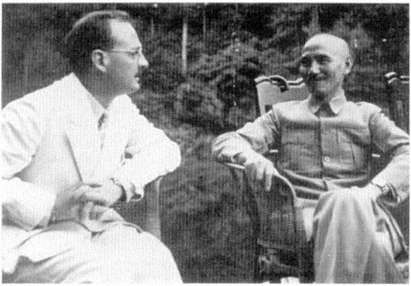
Owen
Lattimore with Chiang Kai-shek in Chongqing in 1941
http://www.conservapedia.com/Owen_Lattimore
Owen Lattimore was U.S. political advisor to Chiang Kai-shek in 1941; after
Pearl Harbor he became director of Pacific Operations for the United States
Office of War Information.[1] According a unanimous report of the Senate
Judiciary Committee, he was also "from some time beginning in the 1930's, a
conscious articulate instrument of the Soviet conspiracy."[
...
During the Nazi-Soviet pact, Lattimore was added to Roosevelt's Custodial
Detention Index,[14] listed as "Nationalistic
tendency—Communist."[15] Later the same year President Franklin Roosevelt
appointed Lattimore U.S. adviser to Kuomintang Generalissimo Chiang Kai-shek on
the surreptitious and out-of-process recommendation of Lattimore's personal
friend and patron at the White House,[16] Roosevelt adviser and NKVD agent
Lauchlin Currie.[17] While serving in this capacity, according to Chinese
military intelligence, Lattimore was sending coded messages to the Communist
Chinese rebels.[18]
On November 25, 1941, twelve days before Pearl Harbor, Lattimore dispatched
an anxious cable to Currie in the White House arguing against a proposed
diplomatic understanding between the United States and Japan. When Congress
later investigated the Pearl Harbor attack, U.S. Secretary of State Cordell
Hull testified that he took a tough line with the Japanese because of this cable
from Lattimore to Currie reporting on Chinese morale in the Kuomintang. This
cable was the only documentary evidence Hull presented which influenced his
decision to reverse himself and send the ultimatum to Japan.
http://www.amazon.com/Ordeal-Slander-Owen-Lattimore/dp/B000K1V562
...
Lattimore was a combative witness and waged verbal duels with McCarthy. In April
1950, the surprise witness, Louis F. Budenz, former editor of the Communist
Party organ Daily Worker. testified Lattimore was a secret Communist, but
not a Soviet agent, that is, he was a person of influence who often assisted
Soviet foreign policy. Budenz said his Party superiors told him Lattimore's
"great value lay in the fact that he could bring the emphasis in support of
Soviet policy in non-Soviet language."[21] The majority report for the
Tydings committee cleared Lattimore of all charges against him; the minority
report accepted Budenz's charges.
In February 1952, Lattimore was called to testify before the Senate Internal
Security Subcommittee (S.I.S.S), headed by McCarthy's ally, Senator Pat
McCarran. Before Lattimore was called as witness, investigators for the
S.I.S.S. had seized all of the records of the Institute of Pacific Relations (I.P.R).
The twelve days of testimony were marked by shouting matches which pitted
McCarran and McCarthy on one hand against Lattimore on the other. Lattimore took
three days to deliver his opening statement; the delays were caused by frequent
interruptions as McCarran challenged Lattimore point by point.
Related to this is Lauchlin Currie Assitant to FDR and Soviet Spy who
recommended Lattimore for his job....
http://www.conservapedia.com/Lauchlin_Currie
Lauchlin Bernard Currie (8 October 1902 - 23 December 1993) was Administrative
Assistant to President Franklin Delano Roosevelt, and a Soviet spy.
...
Currie became Administrative Assistant to President Franklin Roosevelt in
July of 1939[1], and was empowered to coordinate "the work of the
various departments in their relations to the Executive." [2]
Whittaker Chambers, a former affiliate of the Soviet Secret Intelligence
Service in Washington, D. C., for the purpose of developing a government
underground, stated that Lauchlin Currie was a 'fellow Traveler' who helped
various Communists. This statement was made to a representative of the State
Department when Chambers was questioned relative to individuals in the
Government who were allegedly active in behalf of the Communist Party and the
Soviet Union.
...
Soviet archives likewise identify Currie as a Soviet intelligence source.
In 1948, Anatoly Gorsky identified Currie in the "Gorsky memo"as the
Soviet agent code-named "PAZh/Page,"[10] who is recorded in Venona
giving information to Akhmerov and "handing over documents" to
Silvermaster.
...
In the early part of 1941, Currie was sent to be Head of the Economic Mission
to China as personal envoy of the President to confer with Chiang Kai-shek and
other leading executives of the Kuomintang. Currie studied Chinese arsenals,
military training schools, and industrial cooperatives while in China.
...
Amerasia scandal
Currie was listed as one of the individuals who attended the Institute of
Pacific Relations Conference held at Mont Tremblant, Canada, from December 5 to
19, 1942. In the early part of September 1943, Currie was appointed as Acting
Deputy Administrator and he remained until the early part of 1945. He then
resumed his former White House duties.
It was Currie who recommended Owen Lattimore to President Roosevelt to serve
as a special advisor to Jiang Jieshi(Chiang Kai-shek). [18]
http://www.documentstalk.com/wp/currie-lauchlin-bernard-1902-1993
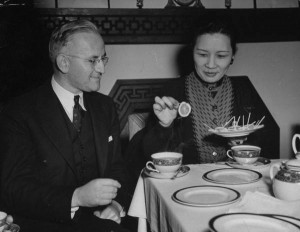
Currie with Madame Chiang Kai Shek
Currie was a top-level adviser in President Franklin D. Roosevelt’s New Deal
and served as FDR’s economic adviser in the White House from 1939-1945. From
1949 until his death in 1993, he was a top-level development economist in Latin
America.
...
In 1944-1945, he took part in loan negotiations with the United States’
British and Soviet allies, as well as in preparations for the United Nations
Monetary and Financial Conference at Bretton Woods, New Hampshire (July 1-22,
1944), which led to the creation of the World Bank and the International
Monetary Fund.
...
Currie was hired by the World Bank in 1949 despite earlier allegations of
Soviet espionage made by two defectors from the Communist cause – Elizabeth Bentley and Whittaker Chambers. Bentley claimed that Currie, whom she
had never seen, had been part of an espionage ring headed by Nathan Gregory
Silvermaster.
http://www.newasiabooks.org/publication/precious-fire-maud-russell-and-chinese-revolution
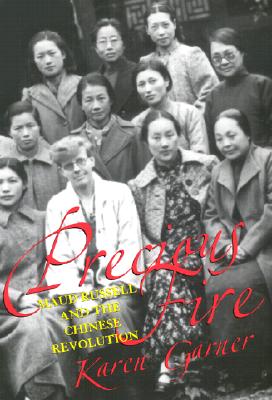
Precious Fire: Maud Russell and the Chinese Revolution
...
Russell and a few other western YWCA secretaries developed a shared vision of
feminist social change that included support for the Chinese Communist Party and
its leadership.
...
Her notoriety as a proponent of friendship with the People's Republic of China
soared during the restoration of U.S -- China diplomatic relations in the 1970s,
only to dissolve in the 1980s as she denounced the revival of capitalist
economics in China on ideological grounds
http://www.nytimes.com/1989/11/10/obituaries/maud-russell-96-aided-chinese.html
Maud Russell, 96; Aided Chinese Published: November 10, 1989
Maud Russell, who spent a quarter of a century in China as a welfare worker and
teacher for the Young Women's Christian Association and lobbied for American
recognition of the Chinese Communist Government after World War II, died of
lung cancer Wednesday at her home in Manhattan. She was 96 years old.
Miss Russell went to China in 1917 as part of the Y.W.C.A.'s missionary
service and spent much of her time in Changsha, the capital of Hunan
province. When the revolutionary army of Chiang Kai-shek advanced on the city in
1930, she refused to leave with other British and American missionaries, who
gave her up for dead and held a memorial service in her honor.
She survived that siege and others in the years of civil war and the war with
Japan that began in the mid-1930's, remaining in China until her return to
the United States in 1943.
After World War II, she became executive director of the Committee for a
Democratic Far Eastern Policy, which promoted friendship with the Communist
forces that soon drove Chiang and the Nationalists from the continent and onto
Taiwan. She published a journal, Far East Reporter, from 1953 until this
year and lectured for many years on China and other Asian countries.
Was Reagan a Spy for the government in the 40's? :
http://www.sfgate.com/cgi-bin/article.cgi?f=/chronicle/archive/2002/06/09/MNCFLEADIN.DTL
...
Reagan's "subversive" ties
The FBI's background report on Kerr contrasts with the bureau's background
investigation of Reagan after he was elected governor in 1966 and became a
regent ex officio, FBI records show.
That process began when Reagan filled out a federal form required to get a
security clearance, and stated that he never belonged to any group deemed
officially subversive, a copy of the form shows.
According to FBI records, the bureau knew Reagan had been in two such groups
in the 1940s - the Committee for a Democratic Far East Policy and the
American Veterans Committee (Tim Leary and Cord Myer)- but the FBI
background report failed to note that Reagan's denial was untrue. Hundreds of
people in the 1940s and 1950s had faced hearings and sometimes dismissals from
federal employment for failing to disclose membership in groups deemed
subversive.
...
[ 1947-48: As a graduate student in psychology, Leary attends the first
two national conventions of the American Veterans Committee (AVC), a left-wing
veterans group, as a California state delegation leader. At the second AVC
convention, in Milwaukee, Leary meets Cord Meyer, who is then spearheading an
anti-communist purge of the organization. Meyer lectures Leary about
communism, and the importance of liberal resistance to it. Leary will later
credit Meyer with "helping me understand my political-cultural role more
clearly." ... Late 1950: Cord Meyer joins CIA and begins
working in its International Relations Division]
The
man who sold the world: Ronald Reagan and the betrayal of Main Street ... By
William Kleinknecht
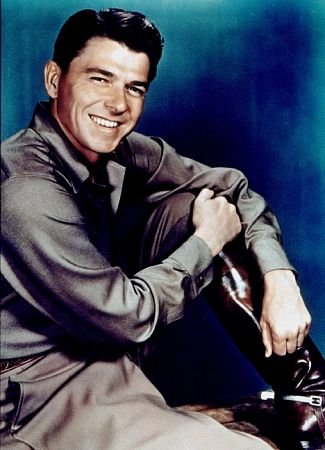
http://www.keywiki.org/index.php/Committee_for_a_Democratic_Far_Eastern_Policy
Committee for a Democratic Far Eastern Policy
In 1948, Maud Russell was Executive director of the New York based Committee
for a Democratic Far Eastern Policy.[1]
Consultants to the Committee included;[2]
Charles Bidien
T. A. Bisson
Hugh Deane
Israel Epstein
Harrison Forman
Kumar Goshal
Philip J. Jaffe
The Hon. Michael Lindsay
Kate L. Mitchell
Bernard Seeman
Gunther Stein
Maxwell S. Stewart
Ilona Ralf Sues
Chu Tong
She survived that siege and others in the years of civil war and the war with
Japan that began in the mid-1930's, remaining in China until her return to the
United States in 1943.
After World War II, she became executive director of the Committee for a
Democratic Far Eastern Policy, which promoted friendship with the Communist
forces that soon drove Chiang and the Nationalists from the continent and onto
Taiwan. She published a journal, Far East Reporter, from 1953 until this year
and lectured for many years on China and other Asian countries.
http://asteria.fivecolleges.edu/findaids/sophiasmith/mnsss292rg5.html
YWCA of the U.S.A. Records. Record Group 5. International
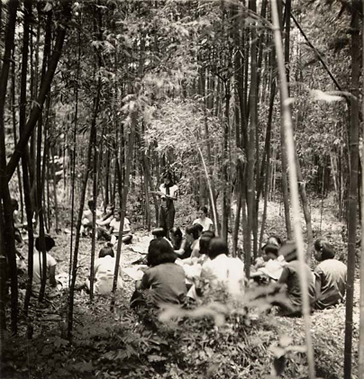
Worship Service, YWCA Girls Camp, Chengdu, China, 1940
World War I significantly impacted the international work of the YWCA by
diverting resources from places like Latin America and Turkey to organized
relief efforts in Europe and elsewhere. The National Board organized the War
Work Council in 1917, and the bulk of the National Association's war relief work
in Europe and the Near East was carried out under the auspices of the War Work
Council. [See World War I for more details]
http://legacy.www.nypl.org/research/chss/spe/rbk/faids/russell.html
Maud Russell Papers, 1914-1990
...
Maud Muriel Russell was born on August 9, 1893, in Hayward, Alameda County,
California, near San Francisco. The oldest of four children, she was the
daughter of Thomas Bartlett Russell, a fruit grower and civil engineer, and
Lelia Smalley Russell. Russell attended Hayward public schools and the
University of California at Berkeley, where she was active in the campus chapter
of the Young Women's Christian Association. It was through the Berkeley
YWCA that she met Mary Ingle Bentley (1878-1940), who later became her closest
friend and life companion.
...
In the spring of 1917, the office received a visit from a recruiter for the YWCA
of China. Intrigued, Russell arranged to meet with her. Although a graduate
degree in social work was usually a prerequisite for overseas work with the
YWCA, Russell was chosen for work in China on the condition that she spend part
of her furloughs (roughly every seven years) in graduate study in the U.S. She
sailed for Shanghai in August 1917.
...
The western women who worked for the China YWCA were expected to help their
Chinese colleagues establish YWCAs in their communities, then to turn over the
leadership of those Ys to an all-Chinese staff. Russell's first posting,
after language study in Nanking, was with the newly-formed YWCA in Changsha,
Hunan Province. She was there from 1919 until her first furlough in 1924,
and again from 1928 to 1930 and 1932-1933.
...
The spring of 1927 was a turning point for Russell. She began to question
more closely the various roles played by foreigners in China; at the same time, she
began to read Marxist theory and to learn more about the 1917 Russian Revolution
and the founding of the Soviet Union, with its implications for China. While
on furlough in 1932, she spent some months in Leningrad and Moscow observing
Soviet society before returning to China via Siberia and Manchuria.
...
While in Shanghai in the early 1930s, she participated in a Marxist study
group comprised of westerners and Chinese. Among them were the New Zealander
Rewi Alley, later a founder of Indusco (Chinese Industrial Cooperatives), and
YWCA colleagues Lily K. Haass, Talitha Gerlach, and Cora Deng (Deng Yu-shih).
All four remained lifelong friends of Russell.
...
By early 1946, she had become an active member of the Committee for a
Democratic Far Eastern Policy (CDFEP), a progressive organization whose
goals included opposition to American intervention in China, in particular the
Truman administration's backing of the Nationalist government headed by Chiang
Kai-shek.
Russell assumed the executive directorship of the CDFEP in June 1946, a
position she held until the Committee's dissolution six years later. She
moved from Passaic to New York in 1947, where she found an apartment on West
93rd Street with a China acquaintance, Ida Pruitt, the field director for the
American Committee in Aid of Chinese Industrial Cooperatives. (Russell and
Pruitt continued to share quarters until June 1961, when their building was
slated for demolition. Pruitt moved to Philadelphia and Russell took an
apartment on Riverside Drive, where she lived until her death in 1989.)
...
http://www.umkc.edu/university_Archives/invtry/EPS/EPS-INV1.htm
University of Missouri - Kansas City
Edgar Snow - personal, business, and general correspondence
This section consists of personal, business, and general correspondence.
Special correspondence regarding Indusco, the International School of America,
World Law Fund, manuscripts, and the film documentary, "One Fourth of
Humanity," are located elsewhere in the collection. ...
Throughout this section there are also subject groupings. Edgar Snow himself
may not have assigned all these subject headings; some may have been
assigned by the individuals Lois Snow hired to process the papers. Regardless,
the groupings have been retained and placed in the listing chronologically.
...
Folder 13. Evans and Peggy Carlson 1938, 1945, 1947, 1951
The 1939 correspondence includes letters regarding the Chinese Industrial
Cooperatives and correspondence with James Bertram and Agnes Smedley.
...
Folder 25. Correspondence 1948-49
includes correspondence with Maud Russell, Agnes Smedley, and the Committee
for Democratic Far Eastern Policy and Committee newsletters
Folder 26. Correspondence 1949-70
with Agnes Smedley and correspondence regarding her books and estate
Folder 28. Correspondence 1951
The correspondence for 1952-56 includes discussion of the Senator Joseph
McCarthy Hearings for the House Un-American Activities Committee and Snow’s
questioning by the FBI.
http://en.wikipedia.org/wiki/Evans_Carlson
Brigadier General Evans Fordyce Carlson (26 February 1896 – 27 May 1947)
was the famed U.S. Marine Corps leader of the World War II "Carlson's
Raiders". He is renowned for the "Makin Island raid" on
August 17, 1942 and their "Long Patrol" (aka Carlson's patrol or
Carlson's Raiders) from November 4, 1942 to December 4, 1942 behind Japanese
lines on Guadalcanal, in which 488 Japanese were killed, 16 Raiders were killed
and 18 wounded, during the Guadalcanal campaign.
Carlson is also credited with first coining the term"Gung-ho" as
it is most popularly used today.
...
He was survived by his wife, Mrs. Peggy Tatum Carlson, and a son by a previous
marriage, Evans C. Carlson.
http://en.wikipedia.org/wiki/Gung_Ho_–_ICCIC
The International Committee for the Promotion of Chinese Industrial
Cooperatives (ICCIC, also known by its nickname Gung Ho International Committee)
was founded in 1939 in Hong Kong to form cooperatives in China. The
organization's nickname and slogan, Gung Ho, means "work hard and work
together".
Rewi Alley, Edgar Snow, Helen Snow, and others initiated the Gung Ho (工合
"Gong He", literally "work together") movement in
Shanghai in 1937. The movement aimed to organize unemployed workers and
refugees, increasing production to support the Chinese people's war of
resistance against Japanese aggression. Subsequently, the Chinese
Industrial Cooperative Association was established in 1938
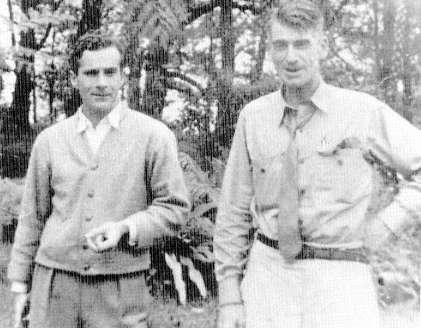
Edgar Snow and Evans Carlson - Phillippines - 1940
http://en.wikipedia.org/wiki/Gunther_Stein
Günther Stein or Gunther Stein was a German print journalist.
Stein was a foreign correspondent in China for the Manchester Guardian, the
Christian Science Monitor, and the Associated Press.
Erwin D. Canham, editor of The Monitor during this period wrote later in his
1958 history of the newspaper, "Commitment to Freedom," of Stein's
brief contribution to the paper from Japan and China which ended in 1945. He
refers to reports of Stein as working for the Soviet Union while in Japan and
the connection with the Sorge spy ring. He refers to Stein as
"enigmatic" and says that "too little was known."
Senator Joseph McCarthy accused Stein of spying for China during the Red
Scare, as part of the Sorge spy ring.
Edgar Snow was connected with James Munro Bertram:
http://en.wikipedia.org/wiki/James_Munro_Bertram
James Munro Bertram (11 August 1910 – 24 August 1993) was a Rhodes
scholar, a journalist, writer, relief worker, prisoner of war and a
university professor.
...
In 1932 Bertram received his Diploma in Journalism and was awarded a Rhodes
Scholarship.
Studying at New College, Oxford, he came first in English and second in Modern
Languages. He was active in left-wing clubs and rugby.
Following Oxford he became an international correspondent with The Times. In
1935 he received a travelling fellowship from the Rhodes Trust to visit China,
where he learnt Mandarin in Beijing for a year. The fellowship was renewed
for 1937 and he travelled to Xi'an where General Chiang Kai-shek had been
captured by communist sympathisers.
He was the first British journalist to interview Mao Zedong and travelled for
five months with the Eighth Route Army in northern China. He wrote two books
on these experiences: Crisis in China (1937) and North China Front (1939).
Bertram began to more actively support China, and performed aid work with the
China Defence League, for whom he gave fund-raising lectures in a tour of
the US, and led a convoy of supply trucks from Haiphong in Indochina to Yan'an.
Part-way through this journey England declared war on Germany, and he returned
to New Zealand. Shortly later he returned to Hong Kong to continue work for the China
Defence League.
...
For some years he remained active in communist groups such as the Society for
Closer Relations with Russia and the New Zealand China Society, and tried
unsuccessfully to persuade Victoria University to develop an Eastern Studies
department.
James Bertram died in Lower Hutt on 24 August 1993,
[Notice the they all got together in the Philippines in 1940 - Edgar Snow
seems to be the Coordinator ....]
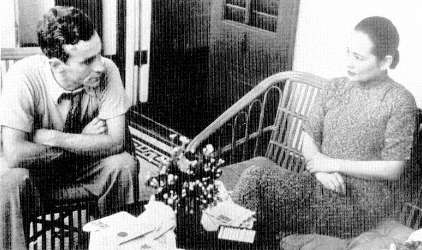
James Bertram during visit with the. Snows in the Philippines, 1940.
figure.
Edgar Snow and Soong Qingling (Madame Sun Yat-sen), in later 1930s
http://english.cwi.org.cn/album/04.htm
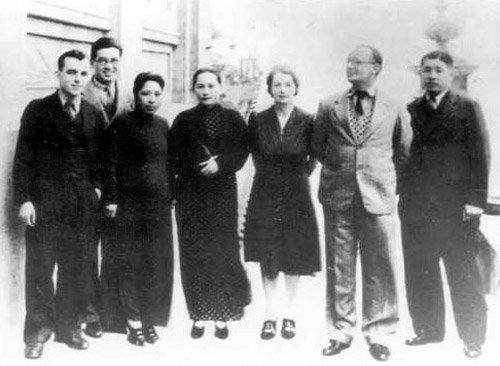
Soong Ching Ling founded the China Defence League in Hong Kong in June, 1938.
The picture shows Soong Ching Ling with members of the Central Committee of
the China Defense League in Hong Kong. From right to left: Liao Cheng Zhi,
Norman France, Hilda Selwyn-Clarke, Soong Ching Ling, Liao Meng Xing, Deng Wen
Zhao, Israel Epstein.
Season
of High Adventure - Edgar Snow in China
S. Bernard Thomas UNIVERSITY OF CALIFORNIA PRESS
Gung
Ho for a Wartime China
From the Philippines in 1940 they also drew up and orchestrated a petition to
Roosevelt for a $50 million American loan for CIC. Sponsored by Indusco
committees in the Philippines and the United States, the document was signed by
an illustrious list of Americans. Snow pushed the idea in his first meeting with
the apparently sympathetic president early in 1942. Roosevelt sidestepped these
efforts on grounds of nonin-terference in Chinese domestic affairs.
...
But in truth, Snow was a leader at every stage of the CIC saga through 1941.
Rewi Alley's later apt description of Ed as "standard bearer of Gung
Ho" was closer to the reality than Snow's own disclaimers.
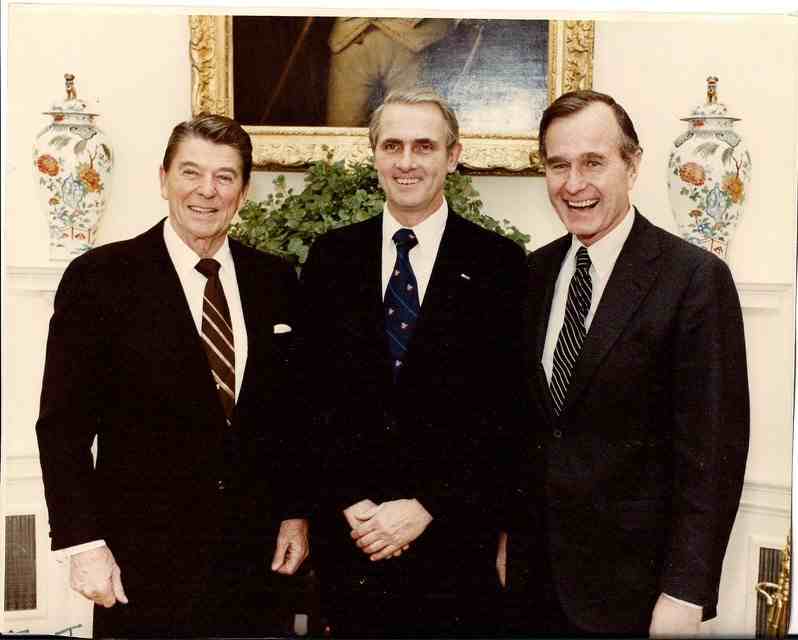
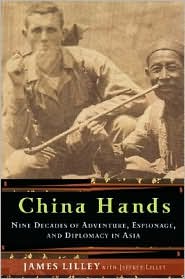
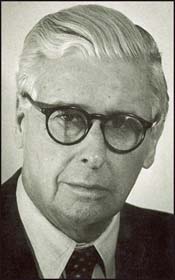 Reagan - Lilley - HWBush
Reagan - Lilley - HWBush -
Cord Meyer
Interesting:
CIA agent Cord Meyer was a member of
the Yale Club
of Washington
So was James R. Lilley Amb. to China 1989 - both a CIA asset and an Amb.
hmmm...
http://www.arlingtoncemetery.net/cordmeyer.htm
George J. Tenet, the C.I.A. director, released a statement calling Mr.
Meyer "a passionate defender of freedom around the world."
...
Born here in 1920, the son of a diplomat and grandson of a New York State
Democratic chairman,
Mr. Meyer attended elite schools and entered Yale
University in 1939. In 1942, he enlisted in the Marine Corps Reserve. He
was sent to the South Pacific, where, as a machine-gun platoon leader, he took
part in the assault on Guam. He was wounded in a grenade attack and lost his
left eye. He was later awarded the Purple Heart and Bronze Star.
Mr. Meyer's twin brother, Quentin, was killed at Okinawa.
...
Mr. Meyer was a founding member of the United World Federalists, where
he fought for controls on the use of atomic weapons.
He also helped
establish the American Veterans Committee, a liberal group that sought to deny
preferential treatment for veterans. While in that organization, he came in
direct contact with Communist infiltration techniques, said his son, Mark
Meyer. Mr. Meyer's moves to thwart Soviet agents helped exonerate him from
accusations that he would soon face, his son said.
With the explosion of an atomic bomb by the Soviet Union in 1949, Mr. Meyer
saw his hopes for arms control dissipate and was troubled by the Berlin
blockade and the invasion of South Korea.
He left his postgraduate work at
Harvard and signed up with the C.I.A.
Two years after joining the spy agency, Mr. Meyer was accused by the F.B.I.
of Communist sympathies. A C.I.A. hearing board eventually acquitted him of
all charges.
...
A fluent writer whose dispatches from the war were published in The Atlantic
Monthly,
Mr. Meyer at age 26 completed a short story, "Waves of
Darkness," that won the O. Henry Prize in 1946 for best
first-published story.
See: "Bion
- his “beams of darkness"
...
| - -- - -
Now read the following and tell me that Lilley did not know Downey
in 1952:
http://www.yaleclubdc.org/
Welcome to the Yale Club of Washington!
 http://alumninet.yale.edu/clubs/dc01/events.html
Ambassador James R. Lilley '51
Ambassador Lilley will discuss his newly published book, China Hands, a
memoir of his career as a CIA Officer in Asia during the Cold War and,
subsquently, as a diplomat serving as the de facto US Ambassador to Taiwan in
the early 1980s and as Ambassador first to South Korea and then to China
during the Tiananmen Massacre in 1989.
http://alumninet.yale.edu/clubs/dc01/events.html
Ambassador James R. Lilley '51
Ambassador Lilley will discuss his newly published book, China Hands, a
memoir of his career as a CIA Officer in Asia during the Cold War and,
subsquently, as a diplomat serving as the de facto US Ambassador to Taiwan in
the early 1980s and as Ambassador first to South Korea and then to China
during the Tiananmen Massacre in 1989.
This book, which has been favorably reviewd by critics,
begins with his
childhood growing up in China.
After
graduation from Yale in 1951, he joined the CIA and served in Japan, Taiwan
and Hong Kong with the mission to learn as much as possible about mainland
China, including training guerrillas and dropping agents into the mainland.
His insider accounts of US-China relations during the Nixon years through
Tiananmen Square are fascinating, particularly his letter to President George
H. W. Bush warning about imminent violence that was intercepted and went
unheeded by the Washington diplomats.
...
Date: Wednesday, October 13
http://en.wikipedia.org/wiki/James_R._Lilley
James Roderick Lilley (simplified Chinese: 李洁明;
traditional Chinese: 李潔明; pinyin: Lǐ Jiémíng);
born January 15, 1928 in Qingdao, China; died November 12, 2009 in Washington,
DC; was an American diplomat who served as United States Ambassador to China
at the time of the Tiananmen Square protests of 1989.
Born to American parents in China, he learned Mandarin at a young age
before his family moved back to the United States at the outbreak of World War
II. Lilley served in the United States Army before earning an
undergraduate
degree from Yale University and a masters in international relations from
George Washington University. He then joined the Central Intelligence Agency,
...
[ A Rockefeller boy: ]
His father, an oil executive who had moved to China to work for Standard
Oil in 1916, and his mother, a teacher, hired a Chinese nanny to help
raise him, and he spoke Mandarin fluently from a young age in addition to
French and English...
...
In the United States,
he attended Phillips Exeter Academy and served
in the United States Army at Fort Dix, New Jersey from 1945-1946. During
his army service, Lilley's elder brother, whom he revered and who was an
American soldier stationed in Hiroshima, Japan, committed suicide
...
As a CIA operative, Lilley worked in countries across Asia, including Laos,
Japan, Hong Kong, Taiwan, and China.[3] In
Laos, he worked to undermine
the Communist insurgency, and he helped to insert a number of CIA agents into
China.[1] By
1975, Lilley was appointed to the position of national
intelligence officer for China, which made him the highest-ranked expert on
China in the American intelligence community
...
Lilley was appointed by President George H.W. Bush to be Ambassador to
China in 1989, becoming the only American diplomat to head diplomatic
missions in both mainland China and Taiwan
| - - - - - CIA/Yale in China 1951:
https://www.cia.gov/library/center-for-the-study-of-intelligence/csi-publications/csi-studies/studies/vol50no4/two-cia-prisoners-in-china-1952201373.html
Two CIA Prisoners in China, 1952–73
Beijing’s capture, imprisonment, and eventual release of CIA officers
John T. Downey and Richard G. Fecteau is an amazing story that too few know
about today. Shot down over Communist China on their first operational mission
in 1952, these young men spent the next two decades imprisoned, often in
solitary confinement, while their government officially denied they were CIA
officers.
Fecteau was released in 1971, Downey in 1973. They came home to an
America vastly different from the place they had left, but both adjusted
surprisingly well and continue to live full lives
...
John Downey and Richard Fecteau were youthful CIA paramilitary officers: Downey,
born in Connecticut, had entered CIA in June 1951, after graduating from Yale;
Fecteau, from Massachusetts, entered on duty a few months later, having
graduated from Boston University. Both men had been varsity football players,
and both were outgoing and engaging with noted senses of humor.
They were
on their first overseas assignment when the shootdown occurred.
By late 1952, the Korean War had been going on for more than two years.
Accounts often identify that war as the reason for the operation Downey and
Fecteau were participating in. While largely true,
the flight the men were
on was part of operations that had antecedents in the US response to the
communist takeover of China in 1949. In accordance with US policies,
CIA took steps to exploit the potential for a Chinese “Third Force” by
trying to link Chinese agents, trained by CIA, with alleged dissident generals
on the mainland. This Third Force, while anticommunist, would be separate from
the Nationalists, who were assessed to be largely discredited on the mainland
This Third Force project received new emphasis after the Communist Chinese
intervened in the Korean War. At that point,
the project aimed to divert
Chinese resources from the war in Korea by promoting domestic antigovernment
guerrilla operations. This was to be accomplished by small teams of Chinese
agents, generally inserted through airdrops, who were to link up with local
guerrilla forces, collect intelligence and possibly engage in sabotage and
psychological warfare, and report back by radio.[3] The operational
model
was the OSS experience in Europe during World War II, which assumed a
cooperative captive population—a situation, as it turned out, that did not
prevail in China.
By the time of Downey and Fecteau’s involvement in the Third Force program,
its record was short and inauspicious. Because of resource constraints, the
training of Chinese agents at CIA facilities in Asia was delayed, and
the
first Third Force team to be airdropped did not deploy until April 1952. This
fourman team parachuted into southern China and was never heard from again.
The second Third Force team comprised five ethnic Chinese dropped into the
Jilin region of Manchuria in midJuly 1952. Downey was well known to the
Chinese operatives on this team because he had trained them. The team
quickly established radio contact with Downey’s CIA unit outside of China
and was resupplied by air in August and October. A sixth team member, intended
as a courier between the team and the controlling CIA unit, was dropped in
September. In early November, the team reported contact with a local dissident
leader and said it had obtained needed operational documents such as official
credentials. They requested airexfiltration of the courier, a method he had
trained for but that the CIA had never attempted operationally.
Mission Gone Awry
The C47, with its CAT pilots and CIA crew, was heading for a trap. The
agent team, unbeknownst to the men on
the flight, had been captured by
Communist Chinese security forces and had been turned.[5] The request for
exfiltration was a ruse, and the promised documentation and purported contact
with a local dissident leader were merely bait.
The team members almost
certainly had told Chinese authorities everything they knew about the
operation and about the CIA men and facilities associated with it. From
the way the ambush was conducted, it was clear that the Chinese Communists
knew exactly what to expect when the C47 arrived at the pickup point
...
Whether due to gunfire, the impact, or the fire, the pilots died at the
scene.[9] Fecteau later remembered standing outside the aircraft with Downey,
both stunned but conscious, telling each other that they were “in a hell of
a mess.” The Chinese security forces descended on them, “whooping and
hollering,” and they gave themselves up to the inevitable.
...
Over the years, various explanations arose within CIA to explain Downey and
Fecteau’s participation in the illfated mission.
It seemed incredible to
operations officers that two CIA employees, familiar with operations,
locations, and personnel, would be sent on a mission that exposed them to
possible capture by the Chinese Communists
"It may have been poor judgment on the part of Downey and Fecteau’s
boss, the CIA unit chief"
...
The men were never tortured physically or, after their initial capture,
beaten.[12] Fecteau reported that he wore leg irons constantly for the first
10 months and that he was made to stand during interrogations to the point of
falling down from exhaustion, especially after being caught lying or bluffing.
Downey remembered the leg irons and the intense psychological pressure of
interrogations, plus the added mental stress from concocting new stories after
the cover story evaporated—as he later acknowledged, telling lies requires
an extraordinarily good memory.
Eventually both men—isolated from each other, battered psychologically,
threatened with torture and execution—talked, albeit divulging varying
degrees of truth. Downey, hemmed in by the disclosures of the team he had
trained, confessed his CIA affiliation on the 16th day. He later recalled that
telling what he knew was liberating: “I’m free and they have got to leave
me in peace, and thus relieve the psychological strain of resisting…. [They]
can’t come at me anymore mentally because it is all out there.”
...
That day, 23 November 1954, almost a year after the CIA had pronounced
Downey and Fecteau “presumed dead,” Beijing declared them alive, in
custody, and serving their sentences as convicted CIA spies. The first
that the Agency learned of it was through a New China News Agency broadcast.
At the same time, the Chinese announced the sentencing, also for espionage, of
the officers and crew of a US Air Force B29 aircraft, shot down over China
some weeks after Downey and Fecteau’s C47 flight.
...
http://www.katu.com/news/national/96719184.html
CIA comes clean about failed Cold War spy mission
By ROBERT BURNS, AP National Security Writer Published:
Jun 19, 2010
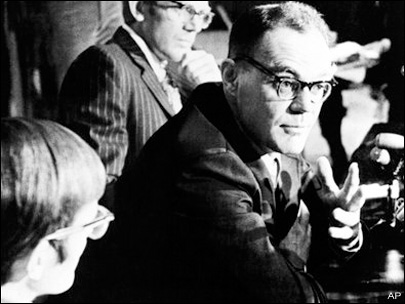 Downey
Downey
WASHINGTON (AP) -
Detail by painful detail, the CIA is coming to grips with
one of the most devastating episodes in its history, a botched
cloak-and-dagger flight into China that stole two decades of freedom from a
pair of fresh-faced American operatives and cost the lives of their two pilots.
In opening up about the 1952 debacle, the CIA is finding ways to use it as
a teaching tool. Mistakes of the past can
serve as cautionary tales for
today's spies and paramilitary officers taking on al-Qaida and other
terrorist targets
...
Three years ago, the CIA declassified an internal history of the affair.
Now
it's hired a filmmaker to produce an hourlong documentary. The CIA does not
plan to release the film publicly. But the agency premiered it for employees
on Tuesday at its Langley, Va., headquarters, and an AP reporter attended.
Downey and Fecteau declined through CIA officials to be interviewed for this
story. They attended the film screening and were flooded with applause and
agency autograph seekers.
http://en.wikipedia.org/wiki/John_T._Downey
He joined the Central Intelligence Agency soon after Yale and became one of
two CIA officers (the other was Richard G. Fecteau, a Boston University
graduate) who survived the shoot-down of their mission over the People's
Republic of China in November 1952, were captured, and spent approximately the
next two decades in Chinese prisons before release. Today, the episode is less
well known than that of Gary Powers, the United States Air Force spy plane
pilot who was shot down over the Soviet Union in 1960.
...
In late
June 1998, CIA Director George Tenet awarded Downey and Fecteau the
CIA Director's Medal for their service to their country, in a private
ceremony described in an Associated Press article on July 3, 1998.
The AP account quoted
Ambassador
James R. Lilley, a retired CIA officer and Yale classmate of Downey's who
served as U.S. envoy in both Seoul and Beijing a speaker at the event, saying
that
Downey was released after Nixon publicly admitted he had been on a CIA
operation.
FOIA
- STUDIES IN INTELLIGENCE/Downey Facteau
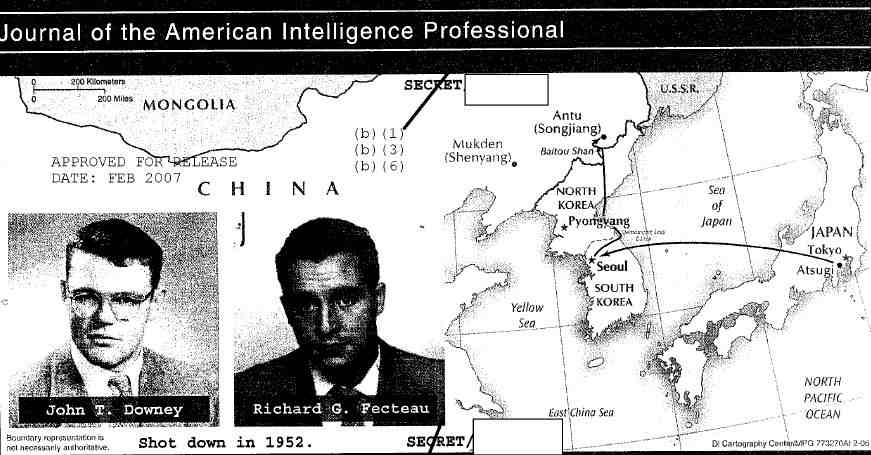
Harrow School
http://www.bbc.co.uk/go/rss/int/news/-/news/
Elite schools lead education boom in Asia
By Adrian Addison (AFP) – Jun 1, 2011
HONG KONG — A strong brand name can go a long way in Asia. From watches to
cars, clothes to fine artwork, food to handbags -- even education.
The offspring of the booming region's wealthy elite are enrolling in some of the
world's most famous schools and universities. But they don't have to get on a
long-haul flight to do so.
Many of the world's most prestigious institutions have built, or are building,
new campuses in some of Asia's thriving cities.
Harrow School is one of
England's most famous fee-paying schools with a long and impressive list of
"old boys".
British wartime leader Sir Winston Churchill, the poet Lord Byron, India's
first prime minister Jawaharlal Nehru, King Hussein of Jordan and even the
pop singer James Blunt once wore the school's famous straw boater hat.
Next year Harrow will open a new campus for 1,200 students in Hong Kong,
which follows Harrow schools already opened in Bangkok and Beijing, to help
satisfy a growing demand for ultra high-end schooling in Asia.
It won't be cheap.
Parents will have to pay a debenture -- basically a deposit -- of HK$600,000
($77,000) to secure a place plus annual fees of up to HK$145,000.
Mark Hensman, the executive headmaster of Harrow International Schools, says the
demand for expensive schooling is being driven by parents whose ambitions for
their children have risen in line with their incomes.
"These aspirations result specifically in the need to learn English and
gaining qualifications that will facilitate access to western
universities," he told AFP.
"The trend in recent years has been for the growth of international schools
to be sustained by a rapidly increasing demand from local parents rather than
from expatriate parents.
"Governments in these countries are struggling to meet these expectations
in their local education system and so international schools are increasingly
filling the vacuum."
...
It was Harrow's links to the Thai royal family that originally brought the
school to Asia -- 23 princes were educated at the original Harrow school over a
100 year period including the present king's father.
A visit to Thailand by the teachers of the crown prince's sons in the
mid-1990s led to a proposal the school open a branch in Bangkok in 1998, as many
Thai parents were already sending their children to the UK and the US.
"Significantly, more and more British public schools are opening schools
abroad and some of the British public schools which have previously opened
international schools are looking to open more," Harrow's Hensman said.
"We are looking to open up to another two schools in the region."
see:
So the Milner-Rhodes-Rothschild
RAII / Chatham House Group owns the Hotel....
GRANDSON Rory Monck:
http://thepeerage.com/p27321.htm
Rory Penryn Monck was educated at Harrow School
http://www.flickr.com/photos/minstrelsonthehill/5535573095/
...
In this picture is
the Grandson
of Charles Sydney Goldman who put up the finance for the building of
Suvretta House in the early 20th c,
a letter was found recently in one
of the towers during restorations requesting that the Hotel stays unchanged
forever and I think that they have achieved that beautifully, it is a
magical place
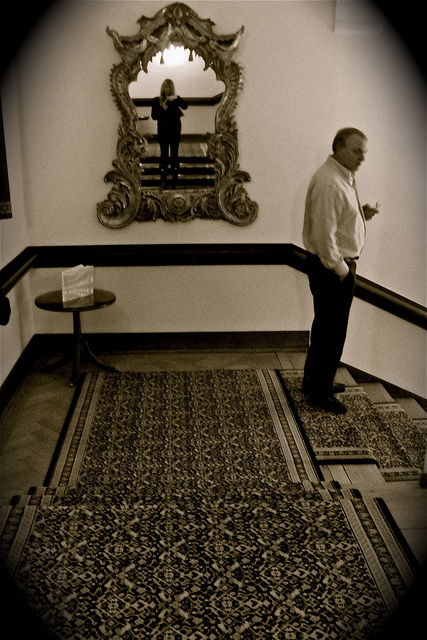 http://en.wikipedia.org/wiki/Harrow_School
Harrow School, known
simply as "Harrow",
http://en.wikipedia.org/wiki/Harrow_School
Harrow School, known
simply as "Harrow", is an English independent school for
boys situated in the town of Harrow, in north-west London.[1]
...
Harrow has many notable alumni, who are known as Old Harrovians,
including
seven former British Prime Ministers including Winston Churchill
and Robert Peel (the creator of the modern Police Force and founder of the
Conservative Party), and the first Prime Minister of India, Jawaharlal Nehru.
In addition,
nineteen Old Harrovians have been awarded the Victoria Cross.[8]
The school has educated three monarchs: Mukarram Jah the last Nizam of
Hyderabad, King Hussein of Jordan and his cousin, Faisal II, the last King of
Iraq, and had among its pupils a large number from the
Thai, Indian,
Malaysian and Middle Eastern royal families.
A
number of members of the British Royal Family have also attended the school.
Other notable alumni include writers (including Lord Byron, Sir Terence
Rattigan and Richard Curtis), numerous aristocrats (including the
current
richest British subject, the Duke of Westminster and the prominent reformist
Lord Shaftesbury) and business people (including
DeBeers
chairman Nicky Oppenheimer, ...
http://www.harrowschool.org.uk/
 The actual name change:
Goldman to Monck :
http://www.gazettes-online.co.uk/issues/34602/pages/1363/page.pdf
The actual name change:
Goldman to Monck :
http://www.gazettes-online.co.uk/issues/34602/pages/1363/page.pdf
WE, Withers & Co. of 4 Arundel Street, Strand, London, W.C.2, Solicitors
for
VICTOR ROBERT PENRYN MONK MONCK of The Albany, Piccadilly, London,
W.i, heretofore
called Victor Robert Penryn Monk Goldman, hereby give
notice that on the
22nd day of February 1939 the said Victor Robert Penryn
Monk Monck renounced and abandoned the use of his said surname of Goldman and
in lieu thereof assumed and
reverted to the surname of Monck which is the
original surname of his family and further that such change of name is
evidenced by a deed dated the 22nd day of February 1939 duly executed by the
said Victor Robert Penryn Monk Monck and attested and enrolled in the
Enrolment Department of the Central Office of the Royal Courts of Justice on
the 23rd day of February 1939.—Dated the twenty-third day of February 1939.
WITHERS and CO., Solicitors for Victor Robert Penryn Monk Monck, formerly
Victor (158) Robert Penryn Monk Goldman.
NOTICE is hereby given that PETER February 1939 duly executed by the said John
Monk Monck and attested and enrolled in the
Enrolment Department of the Central Office of the Royal Courts of Justice on
the 23rd day of February 1939.—Dated the twenty-third day of February 1939-
WITHERS and CO., Solicitors for John Monk Monck, formerly John Goldman
Monk (159) Goldman.
http://www.thailandtravelinformation.info/travel/monarchy-of-thailand
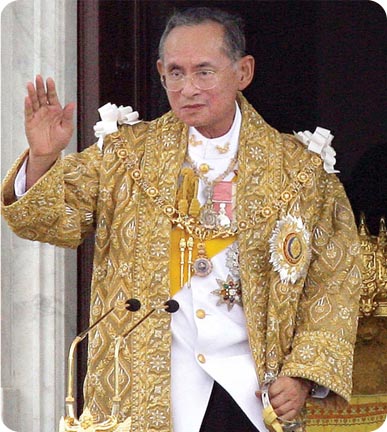 King Bhumibol Adulyadej (Rama IX) was born in Cambridge, Massachusetts,
United States of America, on 5 December 1927
King Bhumibol Adulyadej (Rama IX) was born in Cambridge, Massachusetts,
United States of America, on 5 December 1927, younger son of Their Royal
Highnesses Prince Mahidol of Songkla and the Princess Mother (formerly Miss
Sangwal Talapat), and is the direct grandson of His Majesty King Chulalongkorn
(Rama V) and Queen Savang. His Majesty the King has one older sister, Her
Royal Highness Princess Galayani Vadhana of Naradhivas, and one older brother,
His Majesty the late King Ananda Mahidol (Rama VIII).
His Majesty became King of the Kingdom on Thailand on 9 June 1946. The
Coronation Ceremony came later in 1950, after His Majesty has finalized his
education in Switzerland, where he met the aristocratic Mom Rajawongse Sirikit
Kitiyakara, who has since become HM Queen Sirikit. During that time, Siam has
become Thailand, and was still unstable since the change from Absolute
Monarchy to Constitutional Monarchy in 1932. The King came to the Throne after
his brother's death, and was careful not to offend the military government.
Since the change to Constitutional Monarchy, the people of Thailand was still
in need of a King who can guide the country into prosperity.
http://www.mir.com.my/rb/photography/companies/Leica/Leica-M6/M6Gold-ThaiKing1996/index.htm
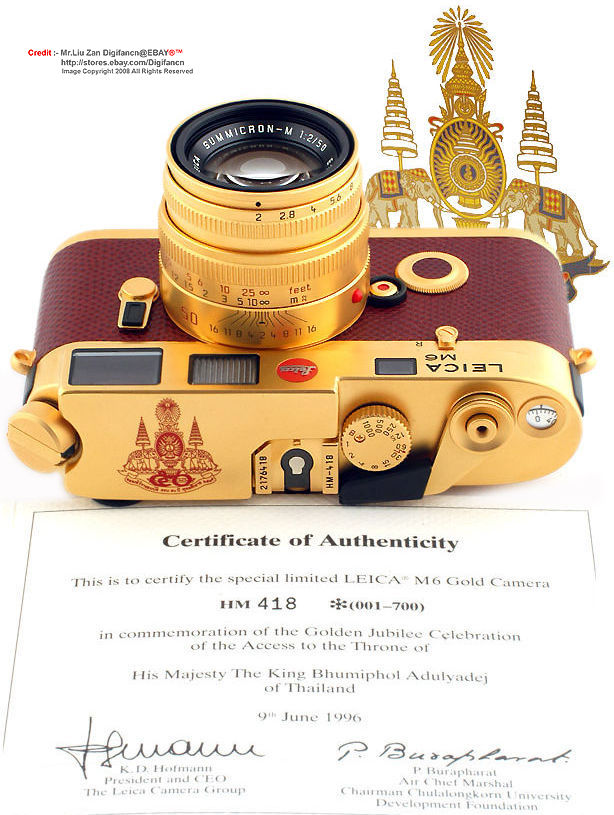
Thailand has a very much loved Monarch in King Bhumibol Adulyadej
(affectionately call as "Nai Luang" or "Chao Yu Hua" by
Thai folks or referred as RAMA IX by foreigners as the Ninth Reign successor
of the Chakri dynasty which began ruling of Thailand back in 1782 during the
Ratthanakosin era.
Born in 5th December, 1927 and at current age approx. 80 years old, His
Majesty King of Thailand had his Coronation held back in 6th May, 1950 and is
the
current world's longest-serving monarch in the world. However, not many
people would know the King was actually born in Massachusetts, US and
educated
primarily in Switzerland. The King has implemented many Royally-initiated
projects to look after the poor and underdeveloped remote regions in Thailand
over the last few decades. He even had gave up living in luxuriously decorated
Royal Palace and converted converted royal garden in the premises as a
agricultural research centre. One known favorite residence of His Majesty was
a simple 2 storeyed beach front wooden pavilion, Maruekatayawan Palace which
is located in a small seaside town of Hua Hin. During recent years, due to old
age related issues, the King is spending most of this time there
http://www.psu.ac.th/en/book/export/html/292
Biography of His Royal Highness Prince Mahidol Adulyadej
The university’s namesake, His Royal Highness Somdej Chao Fa Mahidol Adulyadej
Kromma Luang Songkla Nakarin, formerly Prince Mahidol Adulyadej, was the father
of King Ananda Mahidol and King Bhumibol Adulyadej. HRH Prince Mahidol was born
on 1st January 1892, the 69th child of His Majesty King Rama V and the 7th of
Queen Savang Vadhana.
Prince Mahidol was brought up according to the Royal Thai tradition,
started his education at the Royal School within the Grand Palace and ordained
at the age of 13 as a Buddhist novice. Before his ordination, the title of
Somdej Chao Fa Mahidol Adulyadej Kromma Khun Songkla Nakarin was bestowed upon
him.
He was later sent to study at Harrow, a renowned public boarding school in
England, for about one year and a half.
http://www.harrowschool.ac.th/
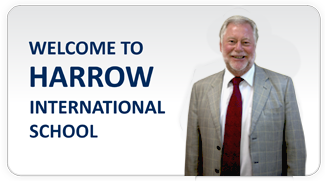
http://www.telegraph.co.uk/news/worldnews/asia/china/1470384/Harrow-to-export-tradition-by-opening-Beijing-branch.html
Harrow to export tradition by opening Beijing branch - Aug 2004
Harrow School, the alma mater of old boys from Sir Winston Churchill to Sir
Mark Thatcher, is to take advantage of China's communist reforms by opening a
branch in Beijing.
The school, to be operated under franchise by a Hong Kong businessman, will
teach A-levels and English language from next year.
It is not the first public school to have begun operating in China - Dulwich
College opened a branch in Shanghai last year and has plans for others in
Beijing and Suzhou. But Harrow is the first to target local Chinese, rather
than the expatriate community.
...
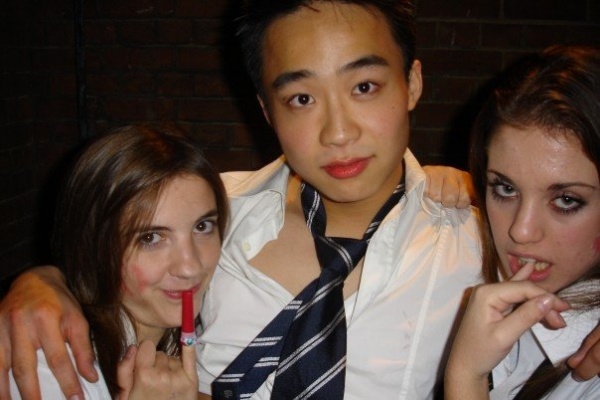 Bo Guagua - Oxford
Bo Guagua - Oxford
http://en.wikipedia.org/wiki/Bo_Xilai
Bo Xilai (simplified Chinese: 薄熙来; traditional
Chinese: 薄熙來; pinyin: Bó Xīlái; born July 1949) is
the current CPC Chongqing Committee Secretary, first-in-charge of the Western
interior municipality and a member of the Politburo of the Communist Party of
China. Between 2004 and November 2007 he was Minister of Commerce of the
People's Republic of China.
...
In 1966, shortly after the Cultural Revolution was called, Bo and his family
were imprisoned for five years, after which they were placed in a labour camp
for another five years. After the death of Mao Zedong, in 1976, the members
of the Gang of Four were officially blamed for the chaos of the Cultural
Revolution, and Bo's family was released. During the ten years of their
detainment Bo's father was tortured and his mother was beaten to death.
According to Hong Kong based media http://www.stnn.cc/(Chinese:星岛环球网),
Bo was one of the Red Guards during the Cultural Revolution
...
They have one son, Bo Guagua. He was the
first student from mainland China to attend Harrow School for boys in the UK
[citation needed]. . Guagua was later accepted to Balliol College, Oxford,
where he started studying for a PPE degree in 2006.
Yale's special "relationship" with China is long term and well
documented.
I never state China was "funded" by the U.S. - However in 1972 Mao was
visited by Rockefeller setting up a line of credit for China, this preceded
Nixon's trip to China which finalized the relationship...
see: In
1969, Rockefeller Official Said US Would Be De-industrialized
http://usb52.com/article/kiss_rock.html
Document 10: Kissinger and Chase Manhattan Bank chairman David Rockefeller,
13 March 1972, 11:12 a.m.
Source: Nixon Presidential Materials Project. National Security Council Files.
HAK Office Files. Box 87. PRC Personal Requests 1971-73 Kissinger telephone
recording transcript
Rockefeller traveled to China, in 1973 resulting in his bank becoming the
National Bank of China's first correspondent bank in the United States.
http://www.gwu.edu/~nsarchiv/NSAEBB/NSAEBB123/
...
http://www.gwu.edu/~nsarchiv/NSAEBB/NSAEBB123/telcon-19720313.pdf
Document 10: Kissinger and Chase Manhattan Bank chairman David Rockefeller, 13
March 1972, 11:12 a.m.
Source: Nixon Presidential Materials Project. National Security Council Files.
HAK Office Files. Box 87. PRC Personal Requests 1971-73
After congratulating Kissinger on some undisclosed triumph and offering him a
plane ride to the next Bilderberg meeting, Rockefeller asked how he could
get a visa to visit China. Kissinger was not too surprised (the president of
American Express was also trying to get one) and said he would try to find out
through "various channels." He assured Rockefeller that the Chinese
were "less hung up on the name Rockefeller than the Russians. They don't
think they're running the country."
1949:
On October 1, Mao Tse Tsung declares the founding of the People's Republic
Of China in Tiananmen Square, Beijing. He is funded by Rothschild created
Communism in Russia and also the following Rothschild agents: Solomon
Adler, a former United States Treasury official who was a Soviet Spy; Israel
Epstein, the son of a Jewish Bolshevik imprisoned by the Tsar in Russia for
trying to forment a revolution there; and Frank Coe, a leading official of the
Rothschild owned IMF
Cloak
& gown: scholars in the secret war, 1939-1961 By Robin W. Winks
http://saintpaulsistercities.org/changsha/index.html
...
Yuelu Academy was founded in 976 AD (Song Dynasty), destroyed by war in
1127, and rebuilt in 1165 (Southern Song Dynasty). The celebrated philosopher
Zhu Xi taught in at the Academy in 1165. It was destroyed by the Mongols but was
restored in the late-fifteenth century (Ming Dynasty).
In 1903, it became Hunan High School. The modern day Hunan University is
a descendant of the academy. The architecture of some of the buildings was
restored from 1981–1986, presumably according to the Song design.
The 1903 Treaty of Shanghai between China and Japan opened the city to
foreign trade. Consequently, factories, churches, and schools were built.
A college was started by Yale University bachelors and later became a medical
center named Xiangya and a secondary school named the Yali School.
Mao Zedong, founder of the People's Republic of China began his political
career in Changsha. He was a student at the Hunan Number One Teachers' Training
School from 1913 to 1918. He later returned as a teacher and principal from 1920
to 1922.
The school was destroyed during the civil war but has since been restored. The
Former Office of the Hunan Communist Party Central Committee where Mao Zedong
once lived is now a museum that includes Mao's living quarters, photographs, and
other historical items from the 1920s
More about the Peking China Medical College:
http://en.wikipedia.org/wiki/Frederick_Taylor_Gates
Frederick Taylor Gates (1853–1929) was an American Baptist clergyman,
educator, and the principal business and philanthropic advisor to the major oil
industrialist and philanthropist John D. Rockefeller (Senior), from 1891 to 1923
...
Gates designed the China Medical Board (CMB) in 1914. Rather than viewing
China through the traditional missionary lens of millions of heathens to be
converted, Gates placed his faith in science. He complained the missionaries in
China were trapped in the "bondage of tradition and an ignorance and
misguided sentiment in the supporting churches."[4] They had made few
converts and fumbled the opportunity to spread Western science
...
Gates planned to take over the Peking Union Medical College and retrain
missionaries there. Working at the intersection of philanthropy, imperialism,
big business, religion, and science, the China Medical Board was his last major
project.
...
In 1924 Gates overreached, asking the Rockefeller Foundation Board to invest
$265 million in the China Medical Board. The fantastic sum would make
Chinese medical care the finest in the world, and would eliminate
denominationalism influence from the practice of medicine and charity work in
China. The Board refused and Gates became a victim of his own progressive
emphasis on the "rule of experts;" the experts on China and medicine
disagreed with him, he was marginalized and resignation from the CMB
http://www.pumc-pharm.com/about/pumc-history.htm
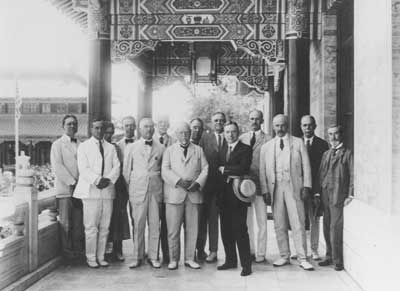
1921 - Trustees of Peking Union Medical College. John D. Rockefeller, Jr.,
PUMC’s largest donor, is center (holding hat). (Source: Paul Monroe
Papers, Special Collections, Columbia University, Teachers College Library)
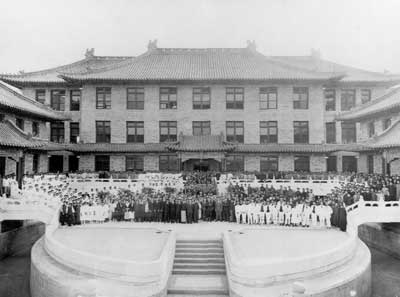
1921 - Peking Union Medical College dedication ceremony. (Source: Paul
Monroe Papers, Special Collections, Columbia University,
Teachers College Library)
"PUMC" is the acronym for "Peking Union Medical College" –
founded in 1906 by the nationalist Chinese government and American and British
Christian organizations. PUMC was then reorganized in 1917 by the Rockefeller
Foundation to be, according to Dr. Simon Flexner, “the Johns Hopkins of
China.”
Today, Peking Union Medical College is one of China’s most selective
medical colleges and technically advanced hospital systems, providing
medical services to prominent political and social leaders.
...
Partnership to Meet the Unmet Medical Needs of Patients in China
In 1995, PUMC Pharmaceutical Co., Ltd. was established as a joint venture
between our parent, NHC, and the Chinese Academy of Medical Sciences (CAMS),
under the auspices of the Chinese Ministry of Health. Our mandate was to pioneer
the development and provision of new medicines to meet the unmet medical needs
of patients in China. In early 2008, we consolidated our ownership of the
company, but retain our long-standing ties with China's leading regulatory and
medical authorities.
http://beckerexhibits.wustl.edu/mig/articles/stevenson.html
...
When the China Medical Board of the Rockefeller Foundation began recruiting
faculty members to teach at the Peking Union Medical College – an almost
quixotic initiative to bring Western medical science to the Orient – standard
policy was to contact American universities which were beneficiaries of
Rockefeller support. Among the personal contacts was Robert J. Terry, head of
the anatomy department at Washington University, whose full-time teaching
position had been endowed by the petroleum dynasty’s philanthropic arm. Terry
recommended Stevenson. The younger man must have seemed an ideal choice, given a
Rockefeller commitment “to maintain the religious tone and work in the
[Chinese] college and hospitals” – part of an agreement with the London
Missionary Society, which had sold its Union Medical College in Beijing [2] to
the CMB. Not only was Stevenson a recent graduate of a newly reorganized and
prestigious Washington University School of Medicine, he was also an ordained
clergyman with the Disciples of Christ.
...
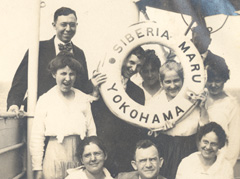
Paul and June Stevenson on the deck of the Siberia Maru, en route to
China, 1917
There was one substantial obstacle to Stevenson’s recruitment by the China
Medical Board, namely, PUMC was not ready for him in 1917. The anatomy building
in Beijing was then only in the planning stage. This problem was overcome,
thanks again to the Disciples of Christ. The denomination maintained medical
missions in several Chinese cities, notably in the Yangtze River valley. Its
foreign missions organization agreed to co-sponsor the Stevensons and to employ
Paul in one of their hospitals until his PUMC position could function.
Accordingly, in the summer of 1917, the Stevensons and their two infant children
departed for Shanghai. Their first lengthy stay, lasting about a year’s time,
was in Nanjing, at the oldest Disciples mission in China. Here the Stevensons
began intensive study of the Chinese language.
...
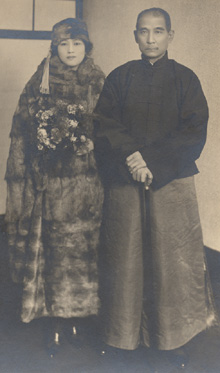 Chinese
political leader Sun Yat-sen and his wife Qingling Soong, 1925 [ research ->
Soong = Sassoon = British Opium trade ]
Chinese
political leader Sun Yat-sen and his wife Qingling Soong, 1925 [ research ->
Soong = Sassoon = British Opium trade ]
[
http://www.newswithviews.com/Spingola/deanna99.htm
...
After Britain’s First Opium War (1839-1842) against China, the real power
behind the Chinese Emperor was the Soong family who were agents of the House
of Sassoon, Jewish multi-national opium traders originally from Baghdad who were
later forced to flee to Bombay, India. They obtained exclusive rights
from Great Britain to market opium to Shanghai and Hong Kong from which the
queen received a healthy share of the millions of dollars of profit.
By 1890, about 10 percent of China's total population were opium smokers.[10] In
1874, attention was drawn to China’s alleged pervasive decadence by members of
the Yale School of Divinity – no doubt because of all that opium.[11]
So, in 1903, a year after the Japan/Great Britain alliance, Yale Divinity
School established schools and hospitals throughout China – known as Yale in
China.
http://www.earnshaw.com/shanghai-ed-india/tales/library/fortune/t-fortune2.htm
Sir Ellice Victor Sassoon is rooted deep in the economic past. His
ancestors grew to power in the opium trade in the nineteenth century, invading
every nook and corner of the Far East and becoming much involved in the opium
wars that Great Britain waged on China, and out of which grew those very
treaties that have made Shanghai a consecrated spot. In the nineteenth
century Sir Victor's great-grandfather, David Sassoon, transferred his
headquarters from Bagdad to Bombay, and his eldest son, Albert Abdallah, was
honored by Queen Victoria with a baronetcy for his contributions to India's
prosperity. David's descendants include Sir Victor, the hero of this piece;
Sir Philip, England's Undersecretary of State for Air; Siegfried, the able poet;
and the Marchioness of Cholmondeley, friend of the British royal family.

]
Early in 1925, Sun came to Beijing to confer with Duan and others about
the future of the country. While he was in the capital he became seriously ill
and was admitted as a patient to the most advanced treatment center in the
city, PUMC Hospital. He was diagnosed as suffering from advanced abdominal
carcinomatosis.
By March he was dead. The disposition of Sun’s body now posed a
delicate political problem for the college. Nationalists of every faction
revered the deceased as a hero and there were immediate plans by the party
leadership for building a gigantic mausoleum in his honor, where the embalmed
body could be seen by his people, more or less like the remains of Lenin, who
had died the previous year in Moscow. The embalming was assigned to Stevenson.
He was required to respect rigorously the traditional Chinese taboos against
removing internal organs from the body. The work was performed in a temple
located between Beijing and Zhoukoudian. Stevenson had custody of the body
for two years – he kept it from visible decay by immersion in mineral oil,
which he regularly changed (his own pun intended) – a period during which the
political struggle determined where the final resting place would be.
Ultimately, following a decree of the new supreme leader, Chiang Kai-shek,
Sun’s tomb was constructed at Nanjing. All parties agreed Stevenson fulfilled
his assignment flawlessly – although subsequent mishandling by others in
Nanjing prevented placing the body on display – and he was later to be awarded
the “Order of the Blue Jade” by the Nationalist government for his work.
http://www.medicalarchives.jhmi.edu/welch/travelph.htm
William H. Welch - Welch made two trips to Asia in 1915 and 1921 as a
commissioner of the China Medical Board, a subsidiary group formed by the
Rockefeller Foundation to promote modern Western medicine in China.
It was on his first trip to Asia that Welch began to keep diaries. Thereafter,
when he was abroad, he always recorded his daily experiences in a journal. The
entries became more lengthy as he grew older.
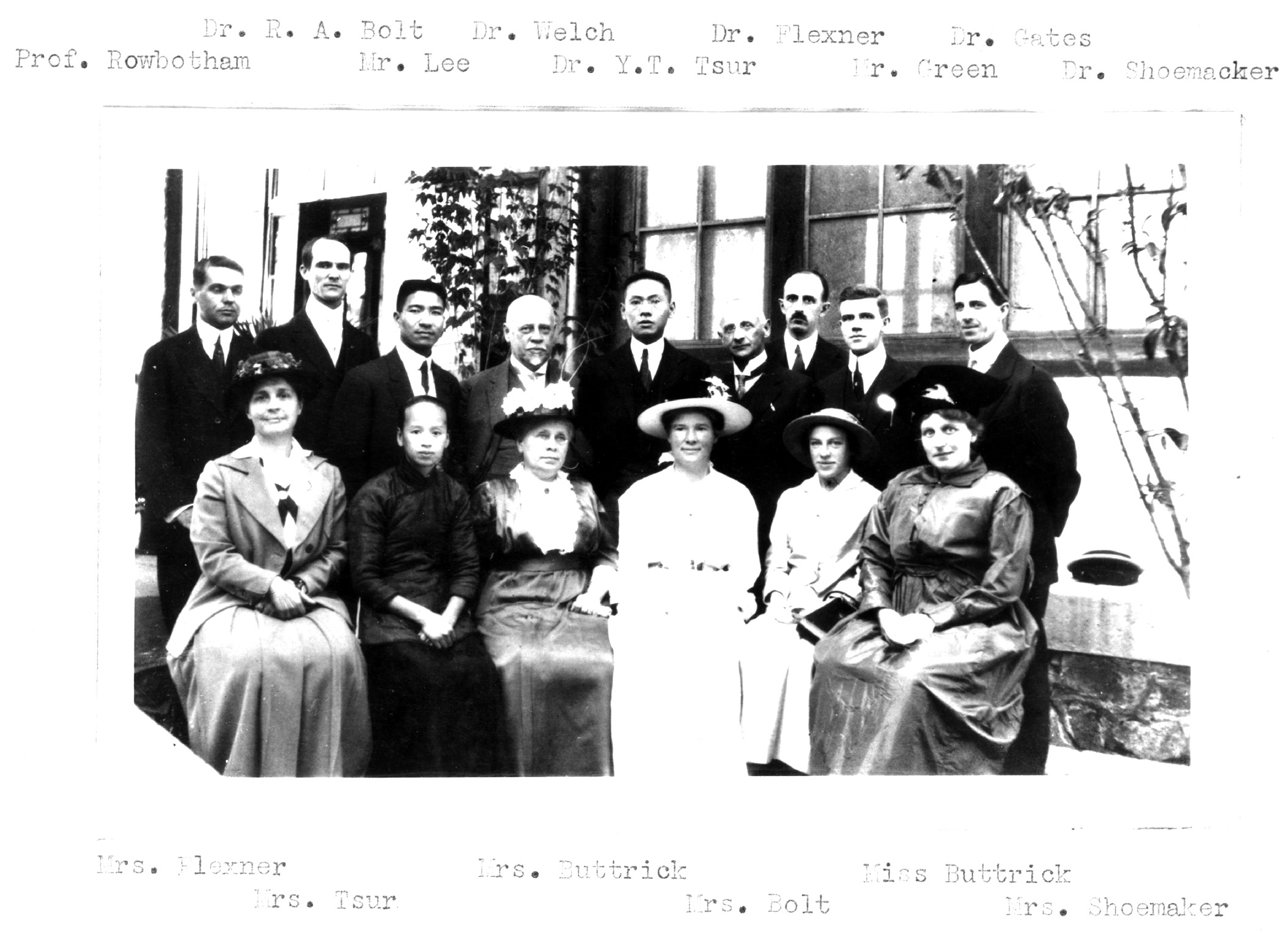
China Medical Commission of the Rockefeller Foundation. Visit to Tsing Hua
College, Peking, China, Oct. 5, 1915
Note Welsh and Flexner are pals...
China used as a testing ground:
http://en.wikipedia.org/wiki/Peking_Union_Medical_College
On July 1, 1915 the recently established China Medical Board assumed full
support of the Union Medical College, having previously acquired the property.
The Commission's members had included both William Welch, the first Dean of the
Johns Hopkins Medical School and Simon Flexner and the China Medical Board modeled
the school after Johns Hopkins University School of Medicine following the
recommendations of the Flexner Report which set the foundation of
modern Medical Education in the United States and Canada.
The PUMC was reorganized in 1917 and celebrated its 90th anniversary with a
ceremony attended by the President of Johns Hopkins University, the Chair of the
China Medical Board and representatives of the Rockefeller family and
Rockefeller Brothers Fund. During the "Cultural Revolution" Peking
Union Medical College was re-named "Capital University of Medical
Sciences".
http://www.rockarch.org/publications/guides/ruchina.pdf
...
Simon Flexner was the first director of Rockefeller Institute for Medical
Research,
serving from 1902 to 1934.
In 1914 he was appointed a trustee of the newest philanthropy created by John D.
Rockefeller, the China Medical Board, an institution created to support the
development of Western medicine in China. As the leading medical research
figure on the board, Flexner was a crucial figure in the CMB's actions for the
next two decades.
Flexner traveled to China in 1915 with other CMB officials to survey
Chinese medical schools. They visited Mukden, Beijing, Tientsin, Tsinanfu,
Hankow, Wuchang, Changsha, Nanking, Shanghai, and Hangchow. Flexner personally
made friendships during this visit that he drew on for many years thereafter,
receiving his friends in New
York, referring Americans visiting China to his acquaintances, and reconnecting
with them on a return visit to China in 1921.
However, the 1915 visit was momentous primarily because the CMB decided to found
a new, state-of-the-art Western-style medical school in China, the Peking Union
Medical College. Fully in operation by 1921, when Flexner attended its
dedication, the PUMC trained two generations of Chinese students in scientific
research and medicine, many of
whom were leaders in those fields in China well into the second half of the 20th
century.
The interchange of staff between The Rockefeller and PUMC was substantial.
Many Rockefeller staff went to the PUMC to instruct the staff and students in
the advanced techniques of modern medicine and scientific research. Van Slyke in
1922 and 1940, Cohn in 1924-25, Ten Broeck in 1926, Pearce in 1932, and Kuttnor
in 1936 are important examples. Other Americans, such as Bauer and Cowdry, had
their first professional appointments at PUMC and later became important figures
at The Rockefeller.
Many Chinese graduate students and young physicians came to The Rockefeller
to study in its laboratories. As early as 1918, before PUMC was fully in
operation, Dr. Edgar Chen was conducting research at The Rockefeller in
preparation for being appointed an assistant in bacteriology at PUMC.
Flexner stated at this time that he would "give careful
consideration" to any Chinese student who wished to study at the
Rockefeller, and indeed the archives of the university for the 1920s, 1930s, and
1940s record a number of Chinese scholars arriving to work in the laboratories
for six months to a year.
Those who moved between New York and Beijing campuses probably felt at home,
because the architect for the buildings and landscaping of both institutions was
Charles A. Coolidge of Boston, who designed many university and hospital
complexes.
Regarding Jay Hopper - Dennis Hoppers father:
http://www.professionalsoldiers.com/forums/archive/index.php/t-29114.html
Actor Director Dennis Hopper (Easy Rider, Apocalypse Now, Blue Velvet) died
today at age 74. He was also, as some of you may know, an OSS lineal descendant.
His father Technical Sergeant Jay M. Hopper was an OSS medic who served in
Kai Yuan, China with OSS Detachment 204.
OSS Schools and Training Branch set up a small training base there for
newly arrived SO personnel in the Theater. Jay Hopper ran the camp dispensary
with a contract physician named Viktor Gorchenko.
Armed with Cameras: The American Military Photographers of World War II By Peter
Maslowski
Doctor Goo - Victor Goorchenko
http://www.ibiblio.org/hyperwar/USG/JCS/OSS/OSS-Functions/index.html
OSS Detachments in the Far East: --
204 China, S&T Detachment base at Kai Yuan,
near Kunming
http://en.wikipedia.org/wiki/Kunming
It was important during World War II as a Chinese military center,
American air base, and transport terminus for the Burma Road. ...
After 1949 Kunming developed rapidly into an industrial metropolis with the
construction of large iron and steel and chemical complexes, along with
Chongqing, Chengdu and Guiyang in the southwest...
Until Mao Zedong's death, Kunming was still generally thought in much of the
rest of the country as a remote frontier settlement and so it acted as a
place up to then for the government to exile people who had fallen politically
out of favor, especially during the Cultural Revolution.
http://www.saconavy.com/Memorial.htm

SACO (pronounced SOCKO), Sino-American Cooperative Organization, was a U.S.
Naval Group which operated during World War II behind Japanese lines in
China.
Some of the men who walked the seemingly endless berms around the flooded rice
fields declared that they had joined a Rice Paddy Navy.
SACO consisted of 2,964 American (Navy, Army, and Marine) servicemen, 97,000
organized Chinese guerrillas, and 20,000 “individualists” who included rival
pirate groups as well as lone-wolf saboteurs.
Aided by the Chinese Government, SACO supplied the Fleet with regular weather
reports from many occupied areas in the Far East by the end of 1942. The
group successfully rescued 76 downed aviators. 71,000 Japanese were killed
as the result of actions by and information from SACO.
The American casualty rate was noteworthy, three were captured and only five
were killed. Unknown to most of the Americans was that each was
“protected” by a Chinese, usually unseen, who considered the loss of his
charge a great dishonor to his own family and ancestors.
The Rice Paddy NAVY
Half a century has passed and finally the U.S. Navy and the Chinese
government feels safe in lifting the curtain from another on the “best kept”
secrets of the war – a U.S. Navel Group with members serving in scores of
Chinese units all over China – a united effort that produced smashing
blows of the Pacific Fleet against Japanese held islands, the Japanese navy and
finally, the whole of Japan.
...
Victor Goorchenko Russian Doctor 1990
http://odh.trevizo.org/oss.html
...
The OSS in China
The OSS saw China both as a base of operations into Japan and as battlefield for
guerilla warfare that could tie down Japanese troops from fighting elsewhere in
the Pacific theater. Since the Japanese controlled Manchuria and Korea, the only
regions close enough to reach Japan, the OSS concentrated on developing guerilla
warfare units within the Chinese Nationalist Army of Chiang Kai-shek. This
effort was hindered both by bureaucratic battles, corruption within the
Nationalists, and their tendency to use their best units (and Allied supplies)
to fight the Chinese Communists rather than against the Japanese.
The COI had sent representatives to China between January and May 1942, but the
OSS was constantly rebuffed by the Nationalist government in Chungking. The head
of the Bureau of Investigation and Statistics, the Nationalist Chinese
intelligence service, was General Tai Li, who wished to maintain complete
control over all clandestine activity in China. Tai Li was assisted in this
endeavor by Captain M. E. Miles, the commander of US Naval Group China. In
January 1943, Donovan sought to get around this by making Miles the Chief of OSS
Activities in the Asiatic Theater, a nominal title that meant little to the OSS
in Southeast Asia but gave Miles control of all OSS activity in China. With his
new power, Miles and Tai Li created the Sino-American Cooperative Organization
(SACO) in April 1943, which officially ran all clandestine and guerilla warfare
projects in China.
SACO was utterly corrupt, and it existed mainly to hinder any American
intelligence activity independent of Tai Li. Tai Li’s vast spy network was
geared more against the Nationalists’ domestic enemies than the Japanese; so,
it fell to the OSS to focus the Nationalists on waging guerilla warfare against
the foreign enemy. However, Miles had little interest in such operations,
concentrating on meteorological and coastal shipping information. Whatever
intelligence Miles and his Navy Group did receive was promptly cabled to the
Navy Department in Washington before it was handed over to the OSS.
The OSS in SACO was left mostly at handing out hoards of supplies to Tai Li,
though three camps were established after September 1943 to train the Chinese in
sabotage, photography and intelligence techniques.
Finally, in December 1943, Donovan renegotiated to create Detachment 202 at
Chungking, whose commander became the Strategic Services Officer, OSS/China-Burma-India,
thus relieving Miles of his command over the OSS in the Far East. While
Detachment 202 could operate free of Navy interference, it was still under the
authority of the obstructive Tai Li.
Nevertheless, an espionage school was established in Happy Valley near Chungking
in January 1944, and by April 1944, Detachment 202 had their first Chinese
agents working in the field. Detachment 202 gradually developed guerilla warfare
operations in China, though the impediments posed by Tai Li and the poor quality
of those Chinese they were allowed to recruit kept the OSS from any effective
intelligence work.
Besides SACO, the OSS also operated through the Air and Ground Forces
Resources and Technical Staff (AGFRTS, or “Agfighters”) within the
Fourteenth Air Force, the only American combat command operating throughout
China.
Besides gathering tactical intelligence on aerial targets and rescuing downed
fliers, the OSS used AGFRTS to run every kind of clandestine program in China
without the interference of SACO. Through negotiations between Donovan and the
commander of the Fourteenth Air Force, General Claire Chennault, R&A
officers were assigned to Chennault’s staff in February 1944. AGFRTS was then
activated as a unit in April 1944, headquartered in Kweilin. It continued to
serve the Fourteenth Air Force until early 1945, when it was designated as a
completely OSS unit and allowed to pursue intelligence beyond the air war in
China.
In January 1945, the OSS in China was recognized as an agency independent of
SACO and freed from the interference of Tai Li. While the Chungking base
remained the seat of OSS liaison with SACO,
Detachment 202 moved their headquarters to Kunming.
Other units were created, including Detachment 203 at Chungking, to carry out
R&A, SI and MO duties;
Detachment 204 at Kaiyuan to running training schools;
Detachment 205 at Dinjan, India, being the main supply base for OSS/China; and
Detachment 206 at Chengtu, focusing on X-2 operations and liaison with the 20th
Bomber Command.
Field Commands were also established to send small OSS teams behind enemy lines,
based at Hsian (for operations north of Yangzte River), Chihkiang (for
operations south of the Yangzte River), and Szemao (for operations in
Indochina). “Mercy Teams” were also created, six-man OSS units that
parachuted behind enemy lines to liberate Allied POWs.
With its guerilla warfare campaign in full swing, the OSS returned to the
original idea of sending agents into Japan from China. The Nationalists were not
active in the north, where the Communists fought the Japanese. It was not
until July 1944 that the Nationalists allowed the US to send representatives to
the Communist capital in Yenan.
The DIXIE misson consisted of personnel from G-2, the State Department,
Twentieth Bomber Command, the Fourteenth Air Force, the Office of War
Information, and the OSS. A trade in intelligence was established and the
Communists were amenable to a complete OSS training and operations program, but
the Nationalists would not authorize such a measure. The DIXIE Mission was
gradually withdrawn in June and July of 1945. No OSS personnel were ever sent
into Japan during the war, not simply for lack of nearby airbases but also
because the OSS recruited so few Asian-Americans.
China was also used as a based from which to sending agents into Siam and French
Indochina. A group of Siamese students were recruited in America and trained at
a base at Szemao in the southern Yunnan province of China in early 1944, though
little was achieved. In the spring of 1943, Frenchmen were recruited and trained
in North Africa, then sent to Chungking for infiltration into Indochina, which
also produced few results. An spy network in Indochina was formed in 1942 by a
cabal of American oilmen called the Gordon-Bernard-Tan Group, coming under the
aegis of the OSS through AGFRTS in April 1944. Headquartered across the border
in Lungchou, the GBT Group sent spies into Hanoi, Haiphong and Saigon until it
was virtually eliminated during the complete Japanese takeover of Indochina in
March 1945.
Near the end of the war, OSS/China consolidated its headquarters to a new
base in Shanghai in September 1945. A liaison staff remained at Chungking while
the rest of OSS in China returned to the United States through Kunming.
Following Japan’s surrender, SO in China was dissolved, while X-2 and SI
personnel were transferred to the new Strategic Services Unit (SSU) of the War
Department. R&A personnel were also transferred to the SSU, although once
they returned to the United States, these officers were sent to the State
Department.
...
https://www.cia.gov/library/center-for-the-study-of-intelligence/csi-publications/csi-studies/studies/vol53no1/spymaster-dai-li-and-the-chinese-secret-service.html
Spymaster: (Tai) Dai Li and the Chinese Secret Service
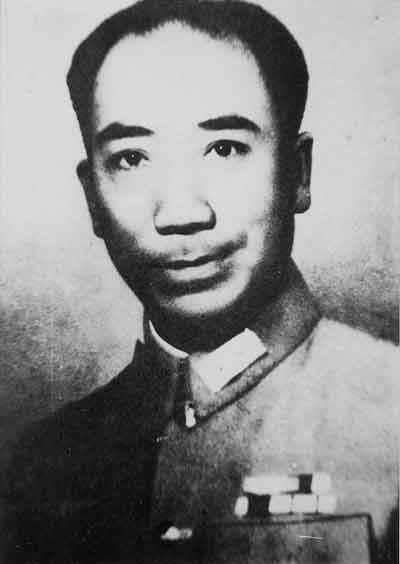
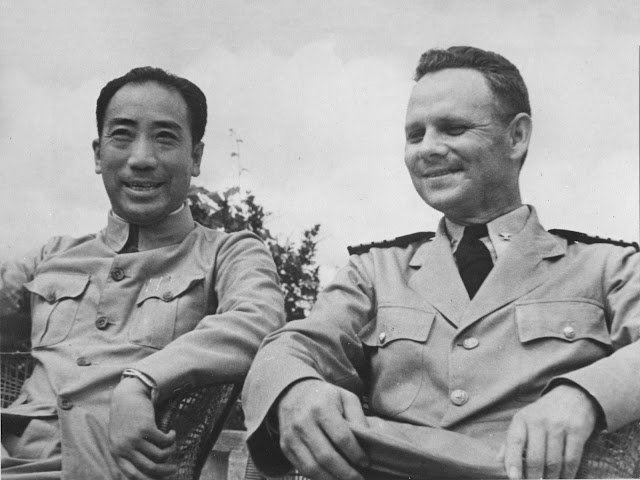 Dai Li and "Mary" Miles Christmas 1942
Dai Li and "Mary" Miles Christmas 1942
...
After the Japanese attack on Pearl Harbor, Americans started streaming into
China, some with big ideas for winning the war and access to the funds to do
it. Dai had never taken well to foreigners and avoided dealing with them. Then
he met a US Navy officer open to his ideas. Commander Milton E. Miles, known
to history as “Mary” Miles, was the nearest thing the US Navy had to a
China expert. A graduate of the Naval Academy, he had spent five years with the
Asiatic fleet. In early 1942, Chief of Naval Operations Admiral King sent him to
China to establish weather stations and “to heckle the Japanese.”
Dai Li took Miles on a trip into occupied China and impressed him with
how easily the Juntong could operate behind Japanese lines. Before the trip was
over, Dai proposed the creation of a 50,000 strong Chinese guerrilla army under
Sino-American control. Without consulting Washington, Miles agreed, and the two
started working on the creation of what became the Sino-American Cooperative
Organization (SACO) to carry out espionage, special operations, and signals
intelligence. The Chinese would provide the manpower; the United States the
rest. Dai Li would be the SACO director, Miles his deputy.
Washington’s approval of the SACO agreement required that Miles be
appointed chief of OSS activities in China. OSS chief “Wild Bill”
Donovan resisted the idea, but because OSS needed a Chinese base for its Asia
operations, he agreed to “an unhappy alliance with Miles and Dai Li.” The
OSS was admitted to China “as subordinate partners of General Dai Li’s
intelligence service.” Personnel from OSS and the US Navy started arriving
at Dai Li’s base, “Happy Valley,” outside Chunking to instruct Dai’s
people in everything from guerrilla warfare to criminal investigation, even an
“FBI school” to train Dai Li’s secret police.
There were problems from the start. Dai’s secret police were directed
against Chiang’s internal enemies rather than the Japanese. There was the
matter of torture: Happy Valley, which had a sanitized mess hall and
western toilets for the Americans, also had “a grim prison about which
unpleasant stories were told.” There was Miles, who insisted that nothing be
kept secret from the Chinese; they would work directly with the Americans and
everything would be shared. There was Dai Li, whose hand was seen in thwarted
OSS operations. Free Thai agents being infiltrated into Thailand were delayed
and several killed. Dai Li had his own plans. He would invade Thailand with a
force of 10,000 Chinese guerrillas disguised as Thai—on 10,000 Tibetan ponies.
The situation was further complicated by Allied suspicions that Dai was
trading secrets with Japanese intelligence. In October 1943, Donovan was
ordered to gather intelligence in China’s communist-controlled areas. Donovan
told Roosevelt, “We cannot do our job as an American intelligence service
unless we operate as an entirely independent one, independent of the Chinese and
our other allies.” The president agreed.
Donovan visited China in late 1943. Over a dinner in Dai Li’s residence,
Donovan told the spymaster that OSS would work unilaterally inside China. Dai
responded that he would execute any OSS agent found operating outside the SACO
agreement. Donovan slammed his fist on the table and shouted, “For every
one of our agents you kill, we will kill one of your generals!” The next day
Donovan met with Chiang Kai-shek, who spoke of Chinese sovereignty, and asked
that OSS act accordingly.
...
It was not until July 1944 that the Nationalists allowed the US to send
representatives to the Communist capital in Yenan.
http://www.worldpolicy.org/blog/2011/12/15/china-vs-us-turning-point-part-

Yenan, Mao's remote headquarters in the 1940's
China vs. the US: the Turning Point (Part 2)
By Seymour Topping
In Yenan, Mao reached out to the United States for cooperation. In January
1945 Mao sent a secret message to Washington through the Dixie Mission proposing
that he and Zhou Enlai, his foreign policy deputy, visit Washington for talks
with President Roosevelt.
http://en.wikipedia.org/wiki/Yan'an
Yan'an (Yen-an), is a prefecture-level city in the Shanbei region of Shaanxi
province in China, administering several counties, including Zhidan County
(formerly Bao'an), which served as the Chinese communist capital before the city
of Yan'an proper took that role.
Yan'an was near the endpoint of the Long March, and became the center of the
Chinese communist revolution from 1936 to 1948. Chinese communists celebrate
Yan'an as the birthplace of the revolution.
...
In December 1936, at the start of the Second United Front, Yan'an was taken over
by the Chinese Communists.[1] They had arrived in the area in October 1935 after
making the famous Long March from Jiangxi. When Edgar Snow went there in
1936, it was under Kuomintang control and a Red army siege had recently been
lifted.[2] Unknown to him at the time, there had also been contacts there
between the Communists and the generals who later staged the Xi'an Incident.
Snow actually met Mao at Bao'an (Pao An).
Having rebelled against Chiang, the local warlords decided to hand over Yan'an
to the Communists, who were now allies. They pulled out and the Red Army walked
in without a fight. This is described by Agnes Smedley in her book Battle
Hymn of China. She was in Xi'an at the time and got to Yan'an shortly after the
take-over.
...
During the Second World War almost all buildings, except a pagoda, were
destroyed by Japanese bombing, and most inhabitants took to living in yaodongs,
artificial caves or dugouts carved into hillsides which were traditional
dwellings in Shaanxi. While Yan'an was the center of Chinese communist life many
prominent Western journalists including Edgar Snow and Anna Louise Strong
met with Mao Zedong and other important leaders for interviews.
Politically, Yan'an symbolizes for many a utopian period in modern China's
history where Chinese communists sought to realize their idealized vision of
life, culture, and social justice, and thus stands for a former "golden
age" when communist principles and ideals were actively pursued by many
sincere, youthful supporters.
During the Second World War, Yan'an played host to the United States Army
Observation Group, also known as the Dixie Mission. A joint military
and civilian mission, it was sent to establish official ties with the Communists
and explore possible plans of cooperation against the Japanese. The Americans
had a presence in Yan'an from 1944 to 1947.
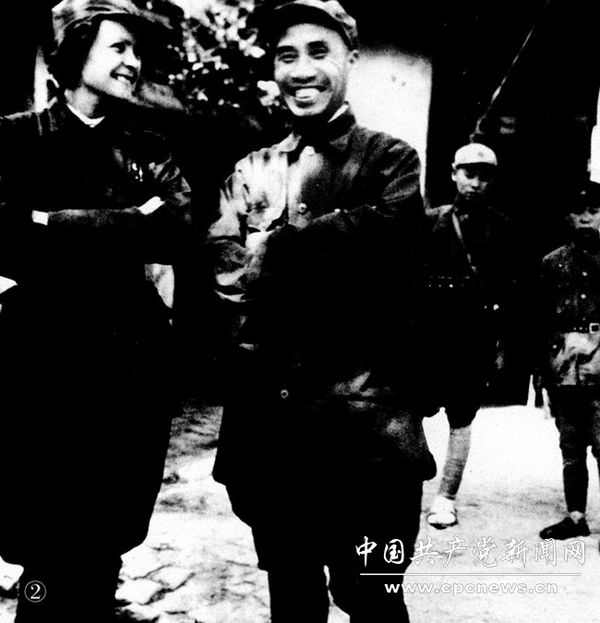
Foreign reporters who interviewed Mao Zedong and Zhu De in Yan'an 1937 -
Zhu De in Yan'an with American reporter Helen Foster Snow in May 1937.
1937 - Wales,
Nym - Visited the headquarters of Chinese Communist leaders in Yenan for four
months
http://libcom.org/tags/yenan-literary-opposition
Yenan Literary Opposition
In 1942 at the Yenan Red Army camp Mao Tse Tung used a tactic to deal with
criticism that he would repeat in later years; firstly encouraging a free
airing of opinion and criticism of the "cadres" and the
bureaucratic regime they administered, then denouncing as reactionary those
who responded with criticism. In practice this was a flushing out of
dissidents so as to neutralise them. Daring to criticise the leadership led
to decades of persecution for those who spoke out - and, for Wang Shi-wei,
to his murder.
In 1942 in Yenan, China, where the Red Army had settled in cave
dwellings at the end of their Long March retreat.
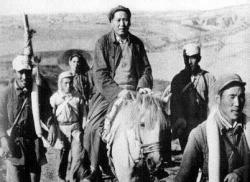 MaoTsetung fleeing Yenan
MaoTsetung fleeing Yenan
http://en.wikipedia.org/wiki/Yan'an_Rectification_Movement
The Yan'an Rectification Movement
Zhengfeng or Cheng Feng was the first ideological mass movement initiated by
the Chinese Communist Party (CCP), going from 1942 to 1944. The movement
took place at the communist base at Yan'an, a remote and isolated
mountainous area in northern Shaanxi, after the communists' Long March.
...
More than 10,000 were killed in the "rectification" process, as
the Party made efforts to attack intellectuals and replace the culture of the
May Fourth Movement with that of Communist culture
| - - - - -
links:
RELATIONS
BETWEEN FOREIGN FORCES AND THE POPULATION OF CHINA
In accordance with the Silver Purchase Act passed by the US Congress in June
1934, the US Treasury began massive purchases of silver worldwide. Two
countries were especially concerned: Mexico, at that time an important silver
producer, and China whose monetary system was based on silver in spite of the
fact that the country was not a substantial producer. As a result of the
American purchases the price of silver tripled which was indeed one of the
objectives of the Silver Act. While Mexico profited, this price increase
was detrimental to China in several respects: it increased the foreign debt
based on silver, it drained silver from the whole country toward the financial
center of Shanghai thus bringing about a country-wide deflation and at the time
a speculation frenzy lead by major banks controlled by the Nationalists.
Due to the silver shortage, the Nationlist government decided in November 1935
to nationalize silver and to issue a fiat paper money. This move emulated a
similar action for gold made by the Roosevelt administration in March 1933. The
issuance of such an unbacked currency eventually led to the hyper inflation of
the late 1940s.
How
China Was Stolen - Silver Purchase Act of 1934
In the spring of 1928, T.V. Soong (Chiang’s Triad-connected brother-in-law)
forced the Shanghai banks to become dependent on high-interest
"guaranteed" government bonds. Skeptical bankers were arrested. By
1932, Chinese banks located in Shanghai were stuck with between 50 per cent and
80 per cent of Nationalist government bonds.
Also in 1928 Soong founded a government "Central Bank" (patterned
on the US Federal Reserve), the "State Bank of the Republic of China."
Soong appointed many of the directors of private banks to a figurehead board of
directors of the Central Bank. Nationalist officials who controlled the issuance
of government bonds often gained seats on the boards of private banks. Just as
in the US, those with inside information on Central Bank manipulations quickly
became a privileged class of kleptocrats.
...
In June 1934 the Silver Purchase Act was passed. This Act instructed the United
States Treasury to purchase silver until the world price of silver rose above
$1.29 per ounce, or until the monetary value of the U.S. silver stock reached
one-third the monetary value of the gold stock. (Note that this huge US
government expenditure occurred at the worst time in the US Great Depression,
when most ordinary Americans were struggling desperately to avoid bankruptcy).
OSS
in Action: The Pacific and the Far East
US
Navy's Secret war in China
RESEARCH BOOKS/MATERIAL – DRUGS
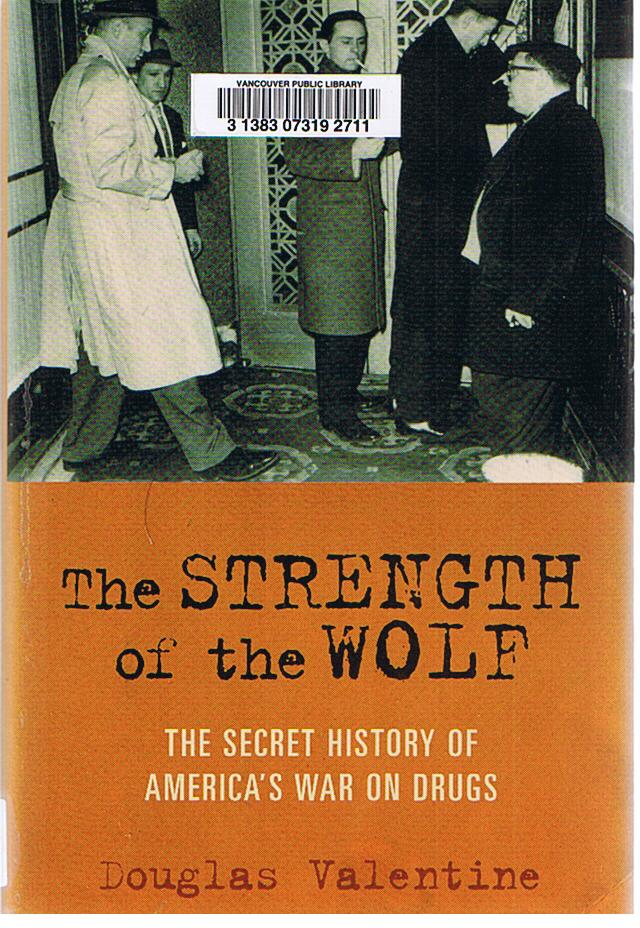
(p. 47) –
White…was to investigate rumors that Detachment 101…organized by Garland
Williams…was providing opium to Burmese guerrillas fighting the Japanese…the
rumors were true…America’s spymasters would never sever the
drug-smuggling connections they established during the war, nor could the
FBN exert any influence over the situation. On the contrary, the FBN assumed a
collateral role in narcotics-related espionage activities…The Luciano Project
and Truth Drug programs are examples, as was the formation of the
Sino-American Cooperative Organization (SACO) by Navy Secretary Frank Knox, OSS
chief William Donovan, and Chiang Kai-shek’s intelligence chief, General Tai
Li. SACO would effectively put an end to any drug control over Nationalist
China. SACO went into action in 1943, when a team of Americans under Treasury
Agent…which included FBN agents…It was an open secret that Tai Li’s agents
escorted opium caravans…and used Red Cross operations as a front for selling
opium to the Japanese…he received the same immunity afforded Detachment
101.
Shaul Eisenberg - China - Israel
Israel has been a major, albeit covert, player in Southeast Asia since Israeli
multi-billionaire tycoon Shaul Eisenberg began supplying weapons to Cambodia's
genocidal Khmer Rouge regime in the 1970s. Eisenberg, a close business
partner of China's military, was also an early arms supplier to Khmer Rouge
leader Pol Pot
http://www.mcshame.us/page27.html
The Tape Worm Economy
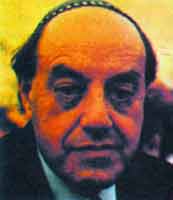
Shaul Eisenberg - Merchant of Death
AIG's Greenberg was deeply involved in Chinese trade in the 80s with
Kissinger. Greenberg was also very close to Shaul Eisenberg, the Merchant
of Death who headed the Asian section of Israel’s Mossad, selling
sophisticated military equipment to the Chinese Communist military. Greenberg
appointed Kissinger as chairman of AIG’s International Advisory Board
http://www.echinacities.com/expat-corner/temple-city-part-ii-judaism-in-shanghai_2.html
China was the only country which didn’t require a visa at that time. Among
the Jews who arrived were Michael Blumenthal who went on to become the US
Secretary of Treasury in the Jimmy Carter administration, and businessman
Shaul Eisenberg.
http://jaxrevenge.blogspot.com/2007/12/shaul-eisenberg-weapons-smuggler.html
Shaul Eisenberg, Weapons Smuggler
Israel has been a major, albeit covert, player in Southeast Asia since Israeli
multi-billionaire tycoon Shaul Eisenberg began supplying weapons to Cambodia's
genocidal Khmer Rouge regime in the 1970s. Eisenberg, a close business partner
of China's military, was also an early arms supplier to Khmer Rouge leader Pol
Pot.
Eisenberg was active with Asia's Jewish community during World War II,
not as an compatriot of the Allies but as a close intelligence and business
partner of Japan's Imperial government, which was allied with Nazi Germany and
Fascist Italy in the Axis Alliance.
Escaping Nazi-controlled Europe, Eisenberg settled in the Far East, making
his primary bases of operation Japanese-occupied Shanghai and Japan itself.
In Shanghai, Eisenberg, along with Imperial Japanese military intelligence
units, formed units of future Jewish terrorist groups -- the Irgun and the
Shanghai Betar (Betar was founded in the 1930s by the Polish Zionist
Yakob Jabotinsky, a supporter of Italian Fascist leader Benito Mussolini, to
battle the British for control of Palestine and the ideological godfather of
later neoconservative oracle Leo Strauss).
The Japanese taught the Jewish paramilitary forces in Shanghai, including
some who escaped from Joseph Stalin's Jewish Autonomous Region creation in the
Soviet Far East on the Chinese border, how to disrupt colonial occupiers'
logistics and command and control elements, strategies that had been successful
against the British, Dutch, French, and American colonial authorities in Asia.
...
| - - - - - -
Shanghai Ghetto
The Shanghai ghetto, formally known as the Restricted Sector for Stateless
Refugees was an area of approximately one square mile in the Hongkou
District of Japanese-occupied Shanghai, where about 20,000 Jewish refugees[1]
were relocated to by the Japanese-issued Proclamation Concerning Restriction of
Residence and Business of Stateless Refugees after having fled from Nazi
Germany, Austria, Czechoslovakia, Hungary, Romania, Poland, and Lithuania before
and during World War II.
...
The International Settlement of Shanghai was established by the Treaty of
Nanking. Police, jurisdiction and passport control were implemented by the
foreign autonomous board. Under the Unequal Treaties between China and European
countries, visas were only required to book tickets departing from Europe.
Following the Battle of Shanghai in 1937, the city was occupied by the army of
Imperial Japan, and the port began to allow entry without visa or passport.
By the time when most German Jews arrived, two other Jewish communities had
already settled in the city: the wealthy Baghdadi Jews, including the
Kadoorie and Sassoon families, and the Russian Jews.
The last ones fled the Russian Empire because of anti-Semitic pogroms pushed
by the tsarist regime and contre-revolutionary armies as well as the class
struggle manifested by the Bolsheviks. They had formed the Russian community
in Harbin, then the Russian community in Shanghai.
...
The Japanese occupiers of Shanghai regarded German Jews as "stateless
persons". [13]
In 1943, the occupying Japanese army required these 18,000 Jews to relocate to a
3/4 square mile area of Shanghai's Hongkew district where many lived in group
homes called "Heime" or "Little Vienna"
...
The ghetto was officially liberated on September 3, 1945, after some delay to
allow Chiang Kai-shek's army to take political credit for the liberation of
Shanghai. With the establishment of the State of Israel in 1948 and the fall
of Chiang Kai-shek in 1949, almost all the Shanghai ghetto Jews left.
Partial list of notable refugees in the Restricted Sector for Stateless Refugees
Shaul Eisenberg, who founded and ran the Eisenberg Group of Companies in
Israel
http://www.iraqwar.mirror-world.ru/article/236394
Calling Shaul Eisenberg
By: Christopher Bollyn (sent by Invictus) on: 26.10.2010
...
Shaul Nehemia Eisenberg, a highest-level Mossad chief and head of Israel
Corp., Atasco, and Atwell Security, is suspected of being the chief mastermind
of the false-flag terrorism of 9/11.
Eisenberg is also thought to be dead, since 27 March 1997.
Did Shaul Eisenberg, the founder of Israel Corporation, fake his death in
1997 to avoid scrutiny and prosecution for a long list of very serious
crimes – including running Mossad's U.S. drug network and 9/11?
Shaul Nehemia Eisenberg worked closely with the Japanese military training
Betar and Irgun terrorists during World War II.
While such a "Huck Finn" stunt may seem ludicrous, at least three
other Israeli criminals who apparently faked their deaths (or coma) to avoid
being arrested for serious crimes come to mind: Amiram Nir, Alexander Voronin,
and Ariel Sharon. As I explain in Solving 9/11, Eisenberg owned the
Mossad company called Atwell Security. Atwell tried to obtain the security
contract for the World Trade Center (and Port Authority) in the late 1980s.
According to members of Eisenberg's family, now living in New York City,
Shaul Eisenberg died in China on March 27, 1997. On April 1 of that year, April
Fool's Day no less, the New York Times ran this paid death notice:
The Associated Press published a similar obituary for the 76-year-old
"billionaire Shaul Eisenberg" who supposedly died on March 27, 1997:
JERUSALEM — Billionaire Shaul Eisenberg, a refugee from Nazi Germany who
built up a global business empire, died of a heart attack yesterday during a
trip to Beijing, his family said. He was 76.
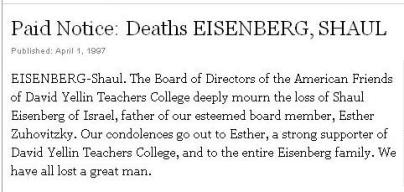 Calling
Shaul Eisenberg October 25, 2010
Calling
Shaul Eisenberg October 25, 2010
Claims by his family notwithstanding, the Israeli media, on the other hand,
writes about Shaul Eisenberg as if he were still very much alive. Globes, an
Israeli business news source, for example, published two articles in the
spring of 2010 that indicated that Eisenberg was alive:
Ogen Yielding Real Estate Ltd. (TASE:OGEN) is expanding the BMC Software complex
in Tel Aviv's Ramat Hahayal high-tech zone. Ogen will add ten floors to the
seven-floor Building C at an investment of NIS 70 million. Construction has
already begun and is scheduled to be completed by December 2011...Shaul
Eisenberg controls Ogen through Isralom Ltd. subsidiary Ocif Investments and
Development Ltd. (TASE: OCIF).
- Michal Margalit in Globes, June 6, 2010
| - - - - -
Eisenberg in TIME Magazine in 2008:
http://www.time.com/time/magazine/article/0,9171,1825136,00.html
ISRAEL'S SECRET WEAPON By BRUCE W. NELAN July 21, 2008
At a formal dinner in a Beijing hotel last week, Israeli Prime Minister
Yitzhak Rabin toasted a rotund 72-year-old at the table and offered a tribute:
''Mr. Eisenberg opened the doors to China for Israel.'' It was a rare moment
in the public spotlight for Israeli tycoon Shoul Eisenberg, but senior officials
at the dinner knew exactly what Rabin meant.
Modern weaponry is at the heart of the Jerusalem-Beijing relationship, and
Eisenberg has been selling Israeli defense technology to the Chinese for more
than a decade. Eisenberg is the real-life version of the international power
brokers who appear in the pages of popular thrillers, and he is usually
described with some of the same adjectives: shadowy, reclusive, discreet. Worth
an estimated $1.3 billion, he is a legendary figure in Asia, a modern taipan.
His holdings include all or part of hundreds of companies in 30 countries
...
Calling Eisenberg an arms dealer does not do justice to the scale and
astonishing variety of his operations. He may have handled Israel's military
sales to China, but at the same time he was completing hundreds of other deals
...
By coincidence,CIA Director R. James Woolsey had just reported to a
congressional committee in Washington that the value of Israel's military sales
to China over the past 10 years ''may be several billion dollars.''
...
as early as December 1978, Eisenberg was in China sizing up business
opportunities. According to a senior aide to Menachem Begin, Eisenberg paid
a call on the then Prime Minister and said that he could use his influence to
open China to Israeli goods -- mostly military -- if Begin would give him
exclusive rights to all weapons deals. It was a time when China was looking
for first-rate military technology that it could not obtain from the West.
...
Since 1979, Israeli security officials say, the country has sold China $3.5
billion worth of arms components and technology -- not finished weapons, but
parts and processes to improve China's tank guns, armor and targeting systems,
missiles, aircraft electronics and military computers, among other things
...
Eisenberg followed [to China] in 1940 but found no business opportunities in
China that time around. So he sailed for Japan, thinking he might make it
to the U.S. But in Japan he met a family active in the steel business and
began selling iron ore principally to their company, Nippon Steel. A year
later, he married Leah Freudlsberger, whose father was an art lecturer at
a Tokyo university and whose mother was from a distinguished Japanese family.
When the war ended, Eisenberg's fortunes took off.
...
Today the Eisenberg Group, with 40 offices around the world, is divided into
two main holding companies -- the Israel Corp. and Panama-registered United
Development Inc
| - - - - -
Shaul Eisenberg - Permindex - Red China Nuclear Program
Quote: Evidence suggests that "Red China's" first explosion of a
nuclear device was in fact a joint venture between Israel and Red China.
Quote
Kissinger and Ford's long-time Michigan financial backer, industrialist Max
Fisher were both financially and ideologically linked to Eisenberg
Max Fisher - Eisenberg and the JFK Assassination:
http://www.amfirstbooks.com/IntroPages/Book_Preview_Pages/piper-michael_collins/Final_Judgment/FJ-14-PhotoSection.07.html
Final Judgment
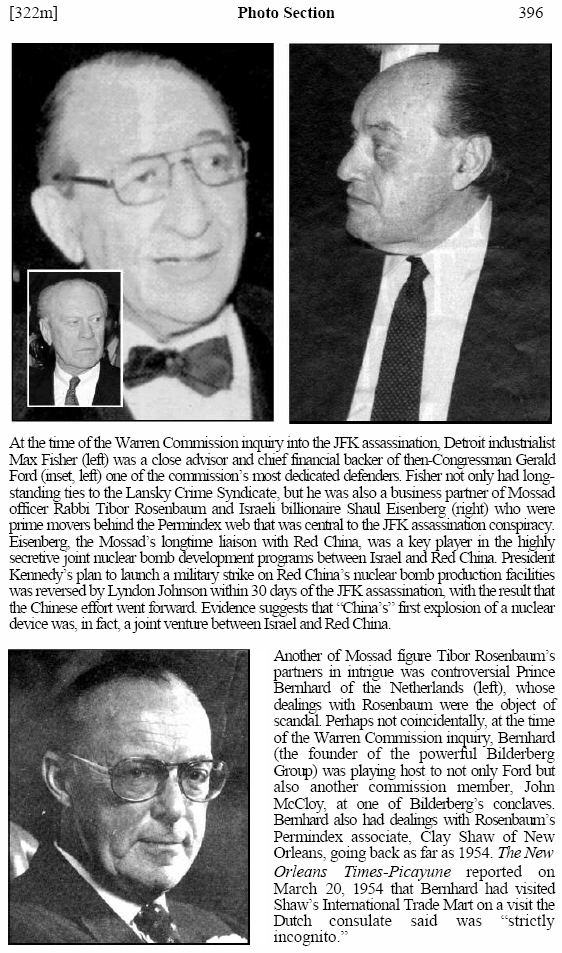
The Sequoia Seminars - 1954 - LSD Therapy - History
Henry Burton Sharman ->> Jesus as teacher Canadian
Missionaries to China -->> James Gareth Endicott -- >>
Zhou Enlai -->> OSS Dixie Mission? -->> Japan Unit 731
--->>> BioWarfare Korea ---> Frank Olson BioWarfare and
Chemical Warfare - Fort Dietrick - LSD
http://www.canadastudies.com.cn/cs/118943.html
Professor Stephen L. Endicott from York University Visited Sichuan
University
Accompanied by Vice-President Shi Jian and the staff member of International
Affairs, Sichuan University, Professor Stephen L. Endicott from York
University, his family and Professor Andy Cragg fromThe Frost Centre of Trent
University, Canada visited School of Foreign Languages of Sichuan University
on August 12, 2011. In spite of eighteen four years old, Professor
Endicott and his family spent nearly two hours in the meeting room of the
School talking about cultural exchanges between Canada and China including
Sichuan Province, donate towards Canadian Studies Center, Sichuan University
some valuable books and compact disks. On behalf of the Center’s James G.
Endicott Research Group, Professor Zhao Yi gave thanks to Professor Endicott
for his valuable presents.
Professor Endicott introduced the impressions he had got from visiting
Leshan City where his farther James G. Endicott was born. He also met with
Professor Luo Xianhua, Professor Zhou Kaiwan and Professor Ye Shangwei who
translated in Chinese the book James G. Endicott: Rebel out of China written
by Professor Endicott. At last he talked genially with Professor Lin Biguo,
Professor Zhang Changgui, Professor Ao Fan and other colleagues and friends at
the School of Foreign Languages.
...
Professor Endicott’s farther James G. Endicott was born in Leshan, Sichuan
Province and moved back to Canada with his parents at the age of two. In 1925
when he was seventeen years old, James G. Endicott was sent back to Chongqing,
Sichuan as a missionary by United Church of Canada. In 1940 he was appointed
as a political consulter of Chiang Kai-shek government and a social advisor of
“New Life Movement” initiated by Madame Chiang Kai-shek.
Between 1944 and 1945
James G. Endicott first contacted Communist Party Leader Zhou Enlai and Dong
BIwu etc. in conducting as a liaison between American military representatives
and Communist Party for the war effort against Japan troops.
After the anti-Japanese War ended, he launched a English Shanghai Newsletter
to propagandize Chinese Communist Party against Kiang Kai-shek government. It
was for this reason James G. Endicott was reproached as “public enemy number
one” by the United Church authority after he went back to Canada in 1947.
...
Endicott was impressed by the Communists and became friends with
Zhou Enlai as the Chinese Civil War resumed, and he became a supporter of the
Chinese Communist Party. During the war he
provided an underground network where pro-communist forces could meet and
exchange ideas
| - - - -
http://en.wikipedia.org/wiki/H._B._Sharman
H. B. Sharman (Henry Burton, 1865–1953) devoted his life to educating
others[1] about the life and teaching of Jesus.
Henry Burton Sharman was born 12 August 1865, in Stratford, Ontario,
the eldest of eleven children
...
Many of his students went on to lead groups in universities and retreat
centers. Groups that carried on his seminar method included Pendle Hill, Sequoia
Seminars, and the Guild for Psychological Studies [1]. Among his
Canadian students who were influential were the controversial missionaries
to China, the Endicotts, James
Gareth Endicott[8] and his wife Shirley,[9] and Murial Duckworth, the
tireless peace activist.[10]
He was also influential in the life and teaching of his famous Unitarian
sister-in-law, Sophia Lyon Fahs.[11] One sociological study of Sharman's
influence made much of a split in his students that occurred in the late 1940s
and continued after his death, some focusing on transformation of the
individual, and others the transformation of society.[12]
In addition to Records of the Life of Jesus, Sharman published
Studies in the Life of Christ (1896);
The Teachings of Jesus about the Future, according to the Synoptic Gospels
(1909);
Jesus in the Records (1918); Jesus as Teacher (1935);
Studies in the Records of the Life of Jesus (1938);
Son of Man and Kingdom of God: A Critical Study (1943) and Paul as Experient
(1945),
he also supervised the translation of some of his works into Chinese and
Japanese.
All are currently out of print, except for Records of the Life of
Jesus, which has been reprinted by the Guild for Psychological Studies.
Sharman's original version used the English Revised Version of the gospel
text, published in 1881.
In 1991, the Guild for Psychological Studies published a new edition,
based on the Revised Standard Version.
Jesus as teacher [microform] ([c1935])
http://www.archive.org/details/MN41440ucmf_0
http://www.archive.org/stream/MN41440ucmf_0#page/n7/mode/2up
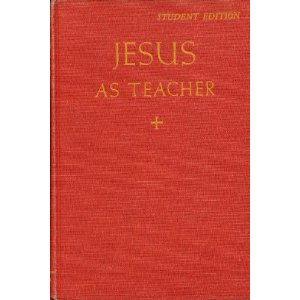
It is very interesting to look at James Gareth Endicott:
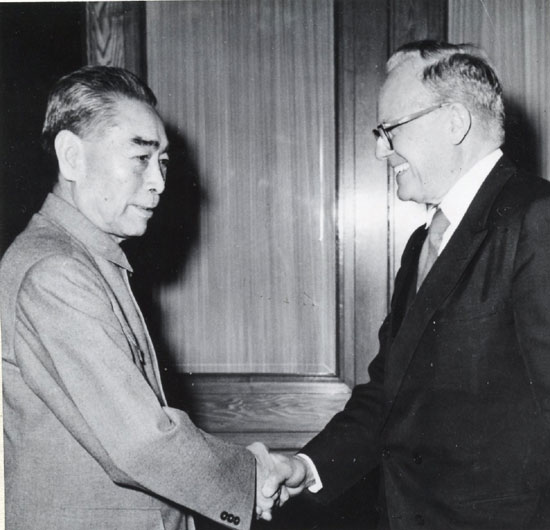
http://en.wikipedia.org/wiki/James_Gareth_Endicott
James Gareth Endicott
Endicott was born in Szechuan Province, China, the third of five
children to a Methodist missionary family and became fluent in Chinese.[1] His
family returned to Canada in 1910. His father, James Endicott, was elected the
second Moderator of the United Church of Canada from 1926 to 1928.
Endicott enlisted in World War I as a Private.[1] After the war he was
educated at the University of Toronto's Victoria College where he was
president of the student council and a founder of the university's Student
Christian Movement.[1]
Endicott earned a Masters degree and was ordained as a minister in the United
Church of Canada. In 1925, Endicott returned to China as a missionary
remaining there for most of the following two decades.
Missionary in China
Endicott taught English in China and became professor of English and Ethics
at West China Union University. He became social advisor to Chiang
Kai-shek and political advisor to his New Life Movement and served
as an advisor to US military intelligence from 1944 to 1945 as a liaison
between the American military and the Chinese Communist forces fighting
against the Japanese in World War II .
Initially a supporter of Chiang Kaishek and his wife, he once compared
Chiang to Abraham Lincoln and described Madame Chiang as a combination of
Helen of Troy, Florence Nightingale and Joan of Arc.[1] He became
disillusioned after seeing Chiang's officers starve their troops and by the
Kuomintang's corruption.[1]
Endicott was impressed by the Communists and became friends with Zhou Enlai
as the Chinese Civil War resumed, and he became a supporter of the
Chinese Communist Party. During the war he
provided an underground network where pro-communist forces could meet and
exchange ideas . [2]
After the war, he spoke at student demonstrations, urging opposition to the
Nationalist government and provoking criticism from the church in Canada. This
led to his resignation from the ministry and the mission on May 5, 1946 after
the United Church of Canada gave him an ultimatum to either modify his public
statements or quit.[1] At Zhou En-lai's urging, he moved to Shanghai to
publish the underground anti-Kuomintang Shanghai Newsletter. The
newsletter was aimed at westerners in the Kuomintang stronghold as well as at
trying to convince western governments that Chiang's regime was corrupt and
dictatorial.
Return to Canada
In 1947, he returned to Canada. At a time when western countries were
backing Chiang and were optimistic about his government, Endicott advised
the Canadian government that the Kuomintang regime's fall was imminent and
then went public with his predictions and his denunciation of the Kuomintang
as corrupt. His comments were denounced as traitorous by the media and he
was labelled the most reviled Canadian of the year for his support of the
Chinese Revolution and the Communist Party of China and was criticized by the
United Church for his support of the revolution.
He continued his support for the Chinese Communist Party by giving lectures
and publishing the Canadian Far Eastern Weekly which had 5,000 subscribers
at its peak.
Canadian Peace Congress
In 1949, he founded and became chairman of the Canadian Peace Congress and
helped publish its Peace Letter bulletin. He also became a senior figure in
the World Peace Council serving as president of the International Institute
for Peace from 1957 until 1971.
In 1950, as a Canadian delegate to the World Peace Council in Stockholm,
Endicott sat on the committee that drafted the Stockholm Peace Appeal which
was the petition that began the international "Ban the Bomb"
movement
Korean War
Endicott returned on a visit to China in 1952, during the Korean War and,
on his return to Canada, charged the United States with using chemical and
biological weapons during the war. His charges led him to be vilified in
the Canadian press as "public enemy number one" and he was
censured by the United Church for his support of Mao Zedong and the Chinese
Communists.[1]
...
The government threatened to charge him with treason and sedition, but did not
follow through, while others called for him to lose his passport and mailing
privileges.[1][4]
Later work
Endicott was awarded the Stalin Peace Prize in 1952 for his efforts working
for "peaceful coexistence between the Christians and the
Communists."
He continued his advocacy for the People's Republic of China by
publishing the Canadian Far East Newsletter and though he publicly
backed the Soviet Union in the initial years of the Sino-Soviet split he was
sympathetic to China's arguments and reported them in the newsletter. Endicott
was offered the presidency of the World Peace Council in the early 1960s but
declined due to his wife's declining health and what he anticipated as a
personally untenable position of leading the council during a period of
growing tensions between the Soviet Union and the People's Republic of China
and their respective factions on the council.
| - - - - -
Update: Did the U.S. use Biological Warfare in Korea and how that
ties in with the Sequoia Seminars:
http://archives.truenorthperspective.com/July_08/July_25/us_and_bio_war.html
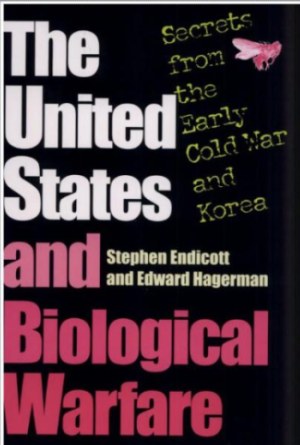
United States and Biological Warfare: Secrets From the Early Cold War and
Korea, The
By Stephen Endicott and Edward Hagerman
One of the more sensational events of the early Cold War in Canada was the
allegation by the Reverend James G. Endicott that the United States had
resorted to germ warfare in pursuing the war in Korea under the banner of the
United Nations.
This allegation, made in the early months of 1952, based on Endicott's
observations in Northeast China and reports from the Chinese, was quickly
dismissed by the Canadian government and efforts were made to discredit
Endicott's charges and to undermine his credibility. Resorting to the method,
later known as "plausible denial," the Canadian and American
governments heaped scorn on the man who was seen as no more than a mouthpiece
for the Red China regime.
...
Endicott, however, never gave up, drawing closer and closer to proving his
allegations. Later revelations that the United States had taken over
Japanese biological experiments, along with the Japanese scientists who
conducted them provided more hard evidence. Only his death in his late
nineties prevented Endicott from completing the picture.
The complete (or nearly complete) picture has now been drawn by two scholars
from York University, utilizing recently declassified materials from American,
Canadian, and British government archives, along with documents from the
Chinese Central Archives.
Stephen Endicott (son of the aforementioned Reverend James G.) and Edward
Hagerman have done a masterful job in marshalling the evidence and
providing the arguments to make the case for the charge that the United States
indulged in biological (bacteriological, germ) warfare under the umbrella of
the Korean War.
After using atomic weapons in Asia, in hindsight, it seems hardly a deviation
for the United States to experiment with biological weapons less than a decade
later, and to move on to agent orange, napalm and other devices (including —
alleged — biological weapons) in Vietnam in the `60's. In preaching its
"higher" standards of behavior to Asians, the West has always been
blessed with a shortness of memory.
The United States and Biological Warfare is replete with photos and
documents, such that it is difficult not to join with the authors in their
summation that the covert planning of the Strategic Air Command for the
delivery of bacteriological weapons, along with pressures to widen the
Korean War combined with the "circumstantial evidence from the United
States, Canada, Australia, Korea, and China," lead "to the
conclusion that the United States took the final step and secretly
experimented with biological weapons in the Korean War."
Their book is one that deserves wide discussion, not only for what it tells us
about how governments deliberately misinform and mislead their citizens, while
sacrificing the rights of individuals, but for what it means in the history of
Western (American) relations with Eastern Asia.
http://www.aljazeera.com/programmes/peopleandpower/2010/03/201031761541794128.html
Dirty little secrets
Al Jazeera investigates claims that the US used germ warfare during the
Korean War.
Diarmuid Jeffreys Last Modified: 04 Apr 2010 11:25 GMT
Youtube - BIO
Warfare in Korea - Unit 731 - Fort Deitrick
...
North Korea alleges that the US used biological weapons against Korean
civilians during the war– dropping "germ" bombs containing
insects, shellfish and feathers infected with anthrax, typhoid and bubonic
plague on villages across the country.
The US has always vehemently denied these claims, dismissing them as crude and
outlandish communist propaganda from a secretive and totalitarian state.
Nevertheless, the accusations have refused to go away. Pyongyang continues to
press for an apology for an "outrage" that the US insists never
happened
A Twenty Year Mystery
In a specially extended edition, People & Power set out to investigate
this extraordinary story.
Our journey began in North Korea where we were given unprecedented access to
follow a leading Japanese academic, Professor Mori Masataka, who has been
trying to unravel the mystery for the last twenty years.
On this, his fourth visit to the country, Mori's intention was to talk to men
who claim to have witnessed, first hand, biological attacks on villages in
1952.
But neither he nor People & Power's location producer, Tim Tate, were
under any illusions.
North Korea is one of the world's most secretive states and is usually
impenetrable to journalists. Everywhere our cameras went, government officials
went too, strictly monitoring where and what we could film.
In a vast museum in the centre of Pyongyang, Mori explored a room given over
to what the North Koreans claim is direct evidence of US germ warfare –
including specimen jars filled with flies, mosquitoes and fleas all allegedly
injected with deadly pathogens.
A smartly uniformed army officer, Captain Ryu Uk Hui, drew his attention to
some salvaged bomb casings.
On impact, she said, they were adapted to split open and release the insects
to infect the local population. A film-show followed.
The grainy black and white footage, purportedly North Korean news film from
1952, appeared to show masses of insects crawling on the snow covered ground
beside the bomb casings.
All this could have been phony, of course, and that is how the US has always
responded to such claims, especially to filmed "confessions" from 36
captured US airmen - also screened in Pyongyang's museum - in which they give
the North Koreans apparently detailed accounts of their participation in the
US "germ" raids.
Accounts that, it must be said, were all retracted on the air crews' return
home to the US after the war.
...
Later, we are driven deep into the North Korean countryside, to a village
called Hwanjin, where two elderly farmers are patiently waiting.
It is clear they have been tidied up for the occasion and both wore patriotic
badges pinned to their tunics, yet their weathered faces, calloused hands and
still grimy fingernails speak of long years spent in the fields.
Although it is impossible to be sure, neither seems to be a Communist Party
apparatchik primed for the occasion. And one speaks with convincing passion
about the events that took the life of his father and many others, in the days
after the insects came.
"It was in March", says Yun Chang Bin. "The flies were big and
their colour was brown-ish.
"Not long after that, about April, terrible epidemics like typhoid fever
were spread. People in the village developed high temperatures. Loss of
appetite and then aches on the arms and legs, there was much pain."
There were some 50 households in the village, he went on, and more than thirty
people died.
"My father died. He suffered a high fever, and then he was not able to
use the lower half of his body, he wasn't able to eat and was not able to
move."
As his fellow farmer nods encouragingly beside him, Yun Chang Bin looks
directly at Professor Mori.
"I want you to go and tell the peace-loving people in the world about the
atrocity the Americans committed to inflict pain to us, to make us unhappy, to
kill all us Korean people, by scattering germ bombs to exterminate us."
...
But however convincing he has found these accounts, Mori knows that testimony
from North Korean citizens will not be enough to convince a sceptical world
that the US used germ warfare in Korea.
"A scientific investigation or medical or biological investigation should
be carried out. I think it is definitely necessary that a non-political
purely-scientific organisation should be sent to North Korea to
investigate", Mori says.
As it happens, within months of the original allegations being made back in
the 1950s, North Korea invited an international commission to visit the
country.
International commission
Composed of scientists from France, Italy, Sweden, the Soviet Union and
Brazil, and led by Joseph Needham, a distinguished - if left-leaning - British
embryologist, the commission toured the affected areas, interviewed the sick
and the dying and carried out a detailed analysis of their infections.
The resulting 600-page report included results of post-mortem on the
victims: these identified bubonic plague, cholera and anthrax.
It concluded that germ warfare had been deployed exactly as the North Koreans
claimed. Yet despite its apparent wealth of scientific evidence, it was again
dismissed by the US as communist disinformation.
Which is why, if a new international enquiry was ever undertaken, it would
have to spread its net far further than North Korea and to the US, in
particular, where the truth almost certainly lies, buried deep in the Cold War
secrets of a superpower.
was there that People & Power discovered that during the 1940s and
1950s American scientists at the US Army base in Fort Detrick, Maryland, had
developed ways of delivering bomb-loads of insects infected with bubonic
plague and other deadly pathogens.
Our investigations also uncovered two remarkable documents in the US National
Archives.
Unit 731
They revealed that the US had bought the expertise of Unit 731, a Japanese
army biological warfare team, which conducted human experiments in the 1930s
and 1940s to perfect the technology of bacteriological warfare: in World War
2, the Japanese military had dropped thousands of "germ bombs"
across Northern China, killing millions of civilians.
...
A third crucial document - marked "Top Secret" - showed that in
September 1951, the US Joint Chiefs of Staff issued orders to begin
"large scale field tests ... to determine the effectiveness of specific
BW [bacteriological warfare] agents under operational conditions."
If these "field tests" were indeed undertaken, then they may have
drawn again on the expertise of the Japanese biological warfare team.
In Japan, People & Power found home video footage from one of the former
members of that team, shot just before his death, in which he claimed that its
leaders had indeed assisted the US in mounting "an attack" in Korea.
But perhaps the most telling evidence came from a former US air force officer
who took part in bombing raids over North Korea.
Kenneth Enoch was shot down in January 1952 and held as a POW for 20 months.
"Confessions"
While in captivity, he was one of 36 US air force officers who made written
and filmed "confessions" that they had taken part in "germ
bomb" missions.
When these POWs were repatriated in 1953, the US department of defence
threatened to charge them with treason for co-operating with their captors.
Each then retracted their confessions in front of military cameras: each
claimed they had been tortured or indoctrinated by North Korean and Chinese
guards.
But when we tracked down and interviewed Enoch, now a sprightly 85 and living
in a gated retirement community in Texas, he denied having been ill-treated or
indoctrinated – and appeared to make at least a partial admission that the
US did use biological weapons in the Korean War.
"The people who deal in that don't have to go and fight, and that's a
pretty sweet deal for them. You know, but they send it with you," he
said. Nevertheless, he continued to deny that he personally played any part in
biological weapons attacks.
Records of Enoch's bombing missions over North Korea were removed by US air
force investigators from the official records in March 1952 – two months
after he was captured and one week before he made his confession to "germ
warfare".
People & Power asked both the US state department and the department of
defence for an interview about the issue raised in our film.
They turned down the offer and also declined to answer ten specific questions
we put to them about North Korea's allegations
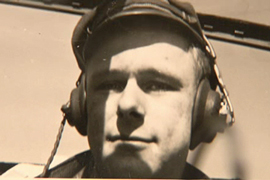
At one point, Enoch said his statements had been coerced by the North
Koreans
...
So who is to be believed? Professor Mori Masataka, thinks he knows the
answer. "Use of germ weapons in war is in breach of the Geneva
Convention. I think that's why the Americans are refusing to admit the
allegations. But I have no doubt. I'm absolutely sure that this happened."
The clear implication, of course, is that were North Korea's claims ever to be
proved, the US might be open to prosecution for war crimes – which
would be awkward, to say the least, at a time when the US is relying on its
moral authority to underpin international efforts to combat global terrorism
and nuclear proliferation.
Either way, one thing is clear. Until the allegations are laid to rest and
the US's innocence or culpability is established beyond doubt - perhaps by an
independent enquiry – one of the most enduring Cold War mysteries will
continue to haunt Washington's relationship with the world's most secretive
state.
This episode of People & Power aired from Wednesday, March 10, 2010.
\ - - - - -
Ok - But what does all this have to do with LSD? You ask .... Frank Olson
http://www.wsws.org/articles/2002/nov2002/arti-n13.shtml
TV film on death of Frank Olson
German documentary charges US used biological weapons in Korean War
By Peter Schwarz
13 November 2002
The claim by the Bush administration that Baghdad is threatening the world
with weapons of mass destruction is the main pretext for its war preparations
against Iraq. However, a documentary recently broadcast by the German state
television channel, ARD, suggests that the US government is itself hiding
biological warfare programs from the rest of the world, and actually employed
such weapons in 1952 during the Korean War.
The documentary, entitled Codename Artichoke—the Secret Human Experiments of
the CIA, was aired by ARD last August. A book with the same title was
published shortly afterwards. The authors of both the film and the book, TV
journalists Edmond R. Koch and Michael Wech, focus on the case of biochemist
Dr. Frank Olson, who died on November 28, 1953 after a mysterious fall from
the 13th floor of the Hotel Pennsylvania in New York City.
At the time of his death, Olson had been given the highest clearance for
access to classified information. He was one of the leading scientists doing
research in the field of biological weapons, and had been working for ten
years in the biological warfare facilities at Maryland’s Camp Detrick
(today, Fort Detrick) near Washington DC.
He also occupied a leading position in “Operation Artichoke,” a CIA
program that coordinated all projects of the Army, Navy and CIA involving
psychedelic drugs, fatal poisons and similar substances. Those involved in
this project included German doctors who had experimented with human beings in
the Nazi concentration camps.
Artichoke involved the use of torture and drugs to interrogate people. The
effects of substances such as LSD, heroin and marijuana were studied, using
unsuspecting individuals as human guinea pigs. The CIA was eager to
identify military uses for substances that altered the psyche. The agency was
at that time obsessed with the idea that the Soviets or the Chinese might
employ methods of brainwashing to recruit double agents or manipulate the
population of entire nations.
Artichoke also included the development of poisons that take effect
immediately. These substances were later used in attempts on the lives of a
number of foreign leaders, e.g., Abdul Karim Kassem (Iraq), Patrice Lumumba
(Congo), and Fidel Castro (Cuba).
Before Frank Olson plunged to his death from a window of the Hotel
Pennsylvania in 1953, he exhibited symptoms of behavioural disturbance.
Friends, family members and colleagues shown in the film and quoted in the
book assume that he had seen things that he felt went too far, and intended to
quit his work with the CIA. Prior to his death he had seen a psychiatrist on
several occasions, always in the company of a CIA watchdog. He died one day
before he was scheduled to be committed to a psychiatric hospital.
Olson’s death was officially described as suicide due to depression. Only in
the mid-1970s, when the CIA’s secret activities were scrutinised in the wake
of the Watergate scandal, did the government admit to a certain degree of
responsibility: Ten days before his death, the CIA had administered LSD to
Olson without his knowledge. President Gerald Ford subsequently apologised to
the family, and the CIA paid compensation to his widow.
According to the documentary, this was a further cover-up operation. The film
presents evidence suggesting that the death of the biochemical expert was not
suicide, but murder.
Frank Olson’s son, Eric, is convinced that his father was assassinated. He
has been trying for decades to clear up the circumstances of his father’s
death, and has gathered numerous pieces of evidence supporting the thesis of
murder, which he made available to the authors of Codename Artichoke.
In 1994 Eric Olson had his father’s body exhumed and examined by a
renowned forensic scientist, who concluded that in all probability someone had
knocked Frank Olson unconscious in the hotel room and thrown him out of the
window, in contrast to the official version, which claimed Olson had
jumped.
After the report on the post-mortem had been published, the public
prosecutor’s office in Manhattan initiated proceedings against an unknown
person. However, the prosecutor lost interest as soon as the CIA intervened
into the questioning of the main witness, the CIA agent Robert Lashbrook,
who had accompanied Olson continuously prior to his death and had been in the
hotel room when Olson fell out of the window.
A memorandum dated July 11, 1975 and printed in the book strongly indicates
that the CIA has something to hide. Addressed to the White House chief of
staff, the memo urgently recommended an official apology by the president so
as to forestall any trial or official hearing on the Olson case. Otherwise,
the memo said, “it might be necessary to disclose highly classified national
security information.” Ten days later President Ford met with the Olson
family in the White House.
The addressee and the author of this memo are still active and hold prominent
positions in government. The former is Secretary of Defence Donald Rumsfeld,
who was then White House chief of staff, and the latter is Vice President Dick
Cheney, who was then Rumsfeld’s deputy.
The following year, after delays in the payment of the promised compensation
to the family, another well-known political figure intervened: then-CIA
Director George Bush, who himself went on to become US president and whose son
is George W. Bush.
Why the cover-up?
In the mid-1970s, Cheney, Rumsfeld and Bush senior collaborated to prevent a
thorough investigation into Olson’s death, because they feared that it might
“disclose highly classified national security information.” What
information?
The authors of the documentary have traced numerous clues, but given the mass
of multifaceted evidence presented, it is often difficult to distinguish fact
from fiction. Olson undoubtedly knew about many things that would have
discredited the US administration, and it is entirely plausible that the
government sought to silence him.
The authors describe how German physicians who had worked in Nazi
concentration camps were rapidly rehabilitated after the war through the US
denazification program and put to work on US research projects on biological
and chemical warfare. The book also notes that Olson and his colleagues
carried out large-scale field experiments with biological weapons. In one
case they spread a certain bacillus—which they regarded as
harmless—across San Francisco Bay, as a dress rehearsal for a major
biological attack on a large city.
Both genuine and alleged enemy agents were subjected to horrifying
interrogations, some of which Olson must have witnessed personally, the
authors conclude. In some cases these interrogations led to the death of the
accused. The most convincing proof of this is a telegram from 1954, in
which the CIA director inquires about “bodies available for terminal
experiments.”
In addition, thousands of people were used, without their knowledge or
consent, for experiments with LSD, mescaline, morphine, seconal, atropine and
other drugs. The CIA even ran its own brothels in order to lure its victims.
As the inspector general of the US Army later stated in a report to a Senate
committee: “In universities, hospitals and research institutions” an
“unknown number of chemical tests and experiments ... were carried out with
healthy adults, with mentally ill and with prison inmates.”
Most of these activities were exposed in the 1970s, when two commissions
appointed by Congress—the Rockefeller and the Church
commissions—investigated the secret activities of the CIA. A further
investigation was published by John Marks, a former employee of the State
Department. After legal proceedings based on the Freedom of Information Act,
Marks gained access to several thousand pages of classified CIA material. This
material is utilised extensively in the documentary.
In 1969 the US officially cancelled all research programs on biological
weapons. Fort Detrick was closed down. Today the site is used by the US Army
Medical Research Institute for Infectious Diseases (USAMRIID), which,
according to the official line, strictly limits itself to the analysis of
biological weapons for defence purposes. In 1974, the US signed onto the
international convention against biological warfare.
Were biological weapons used in Korea?
There must be reasons for the continuing secrecy surrounding Olson’s death
that go beyond the facts which surfaced in the 1970s. One possible reason
is linked to Korea—and to last year’s anthrax attacks against leading
politicians of the Democratic Party and others that cost the lives of five
people.
During the Korean War, both Pyongyang and Beijing repeatedly accused the US
of employing bacteriological weapons. These accusations were supported
by eyewitness reports, photos, laboratory analyses and the remains of
biological bombs.
In 1952, two international commissions which examined the war area with
Soviet and Chinese help concluded that the US army had indeed used such
weapons. This was confirmed in written statements by US pilots who were
held prisoner by Korea. Some of them appeared before the international press
and repeated their confessions.
The US categorically denied these accusations, describing the evidence
presented as forged, characterising the international commissions as
instruments of communist propaganda, and claiming that the soldiers’
confessions were the result of “brainwashing.” Allen W. Dulles, the CIA
director, even gave a speech devoted to brainwashing, in which he accused
North Korea of “having turned around a whole number of our boys.”
When the prisoners of war who had made these confessions returned from
Korea in the summer of 1953, they were interrogated by the Artichoke team,
which had announced its eagerness to do so weeks in advance. In a memorandum
to the top leadership of the CIA, the team said it wanted to use those “who
have been exposed to and accepted in varying degrees Communist indoctrination
... as unique research material in the Artichoke work.” Among other things,
hypnosis, anaesthetics and LSD were to be used on the former POWs. In this
way, Artichoke hoped to gain insight into the enemy’s interrogation methods
and to make sure that the returned soldiers did not work for the other side.
Koch and Wech, however, believe that Artichoke’s main concern was the
confessions of the Air Force pilots. The authors suspect that they contained
at least some true revelations.
The authors ask: “Was their will to be broken with LSD? Were they to be
subjected to artificial amnesia to make them forget what they saw and did?
Biological warfare? Experiments with anthrax and other deadly epidemics?”
Frank Olson probably witnessed some interrogations of soldiers returning
from Korea. This is the conclusion drawn by the authors from a careful
reconstruction of his travels. As the leading expert on the release of
biological weapons, he must have known about the use of such devices if and
when they were actually employed. Was this first-hand knowledge the ultimate
reason for his demise? Did the CIA silence him when it became clear he was
seeking to distance himself from the agency?
This suspicion is given credence by a reliable witness, Norman Cournoyer.
In the early years of Camp Detrick, Cournoyer had worked closely with Frank
Olson, and remained his best friend until the end. He knew about Olson’s
intention to leave the CIA.
In April 2001, Cournoyer, who had read an article about the case in the New
York Times Magazine, contacted Eric Olson and said he would tell him the truth
about his father’s death. “Korea is the key,” he is quoted as saying.
The authors continue: “And then Norman Cournoyer confirmed that the
American Air Force had indeed tested biological weapons during the Korean
War.” Frank Olson had learned about this and began to despair about what he
was doing. In conclusion, Cournoyer said: “Was this the reason for the CIA
to kill your father? Probably.”
According to Eric Olson, this statement is in line with remarks of his mother,
who used to say: “Your father was always worried about Korea.”
According to Koch and Wech, there is a direct connection between the
cover-up of the Olson case and the sluggish investigations into the anthrax
attacks of October 2001. Last year’s attempts on the lives of two
high-ranking representatives of the American state have not been cleared up to
this day. Despite the fact that all evidence points to Fort Detrick and one
possible perpetrator is known by name, the investigation has plodded along
without any suspects being identified by the government.
A serious probe into either Olson’s death or the recent anthrax attacks,
the authors believe, could bring to light things that would severely damage
the credibility of the United States. They suspect that the anthrax
attacker’s knowledge of certain facts makes it impossible for the FBI to lay
hands on him.
The authors suggest that this knowledge relates to secret biological warfare
programs. They ask, “Is it conceivable that the US army carried out further
research on biological weapons in spite of binding international treaties,
even after the official termination of offensive projects involving biological
weaponry in 1969?” They then charge that there are “very concrete
indications that the Pentagon does not give a damn about international
agreements on biological warfare.”
They cite several such indications: the production of a genetically improved
version of the anthrax bacterium, which was reported by the New York Times on
September 11, 2001; the plans by military institutes to develop new microbes
that are able to dissolve certain materials; and the consistent refusal of the
Bush administration to sign a supplementary protocol to the international
convention on biological weapons that would give teams of United Nations
experts access to American military laboratories. In the course of the
negotiations in Geneva, according to the authors, it became known that
Secretary of Defence Rumsfeld wanted at all costs to prevent any such
inspections.
* * *
Codename Artichoke—the Secret Human Experiments of the CIA is available
in German only from C. Bertelssmann Verlag, Munich.
http://www.youtube.com/watch?v=ocBogdBLCLk
Secret Human Experiments of the CIA
http://www.earnshaw.com/shanghai-ed-india/tales/library/fortune/t-fortune2.htm
Sir Ellice Victor Sassoon
is rooted deep in the economic past. His ancestors grew to power
in the opium trade in the nineteenth century, invading every nook
and corner of the Far East and becoming much involved in the opium wars that
Great Britain waged on China, and out of which grew those very treaties that
have made Shanghai a consecrated spot. In the nineteenth century Sir
Victor's great-grandfather, David Sassoon, transferred his headquarters from
Bagdad to Bombay, and his eldest son, Albert Abdallah, was honored by Queen
Victoria with a baronetcy for his contributions to India's prosperity. David's
descendants include Sir Victor, the hero of this piece; Sir Philip,
England's Undersecretary of State for Air; Siegfried, the able poet; and the
Marchioness of Cholmondeley, friend of the British royal family.
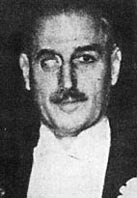 Legend
of the Sassoons ... David Sassoon set up the Sassoon company in
Bombay, India, in 1833.
Legend
of the Sassoons ... David Sassoon set up the Sassoon company in
Bombay, India, in 1833.
In 1844, he set up a branch in Hong Kong, and a year later, he set up his
Shanghai branch on the Bund to cash in on the opium trade.
At that time, about one-fifth of all opium brought into China was shipped on the
Sassoon fleet. They brought China opium and British textile and took away silk,
tea and silver.
 Sir
Victor Sassoon, a Most Fortunate Expat
Sir
Victor Sassoon, a Most Fortunate Expat
http://en.wikipedia.org/wiki/David_Cholmondeley,_7th_Marquess_of_Cholmondeley
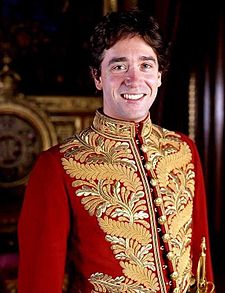
David George Philip Cholmondeley, 7th Marquess of Cholmondeley, KCVO, DL
( /ˈtʃʌmli/; born 27 June 1960), was styled from birth Viscount
Malpas until 1968, and subsequently Earl of Rocksavage until 1990.
He is a British peer and is the current Lord Great Chamberlain of the United
Kingdom, as a 14-partite holder of that office.[1]
Lord Cholmondeley is a direct descendant of Sir Robert Walpole (1676–1745),
the first Prime Minister of Great Britain. He is the son of Hugh
Cholmondeley, 6th Marquess of Cholmondeley and his wife, the former Lavinia
Margaret Leslie.[2]
He is also a direct
descendent of both the Rothschild family and the Sassoon family.[3]
He has three elder sisters, the Ladies Rose, Margot (married Tony Huston), and
Caroline (married Baron Rodolphe d'Erlanger).
...
[ I've noticed that the Rothschild's tend to bear twins? hmm... ]
The announcement that she was expecting twins, was revealed by Richard
Kay of The Daily Mail[5] and Mandrake of the Daily Telegraph. On 12 October
2009, the Marchioness gave birth to twin sons, Alexander Hugh George and
Oliver Timothy George,[6][7] who were originally expected in January.
...
The family seats are Houghton Hall, Norfolk, and Cholmondeley Castle, which is
surrounded by a 7,500 acres (30 km2) estate near Malpas, Cheshire.[10]
According to the Sunday Times Rich List, Cholmondeley is considered to be
amongst the wealthy with an estimated net-worth of approximately £60m,
attributed primarily to his inherited land-holdings.[11] Houghton Hall,
ancestral home of the Marquess of Cholmondeley since the establishment of the
title in 1815, has now opened some of its rooms to the public.
...
The Marque gives the Queen hummers...
Cholmondeley began acting as the hereditary Lord Great Chamberlain to Her
Majesty in 1990.[1] In the Queen's Birthday Honours List for 2007, Lord
Cholmondeley was made a Knight Commander of the Royal Victorian Order (KCVO) for
his 17 years' service as Lord Great Chamberlain
http://www.forbes.com/lists/2010/79/singapore-10_Victor-Sassoon_HK3P.html
Singapore's 40 Richest - #36 Victor Sassoon
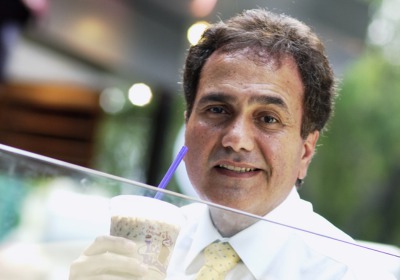
Net Worth: $206 million Age: 53
Marital Status: Married, 5 children
http://neetoday.tumblr.com/post/70412789/emily-hahn-14-january-1905-18-february-1997-her
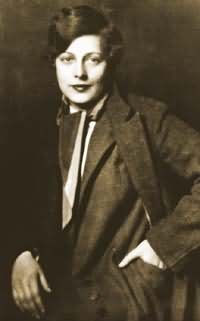
Emily Hahn, 14 January 1905-18 February 1997
Her years in Shanghai, China (from 1935 to the Japanese invasion of Hong Kong
in 1941) were the most tumultuous of her life. There she became involved
with prominent Shanghai figures, such as the wealthy Sir Victor Sassoon,
and was in the habit of taking her pet gibbon, Mr. Mills, with her to dinner
parties, dressed in a diaper and a minute dinner jacket.
Supporting herself as a writer for The New Yorker, she lived in an apartment in
Shanghai’s red light district, and became romantically involved with the
Chinese poet and publisher Sinmay Zau. He gave her the entrée that enabled
her to write a biography of the famous Soong sisters, one of whom was married to
Chiang Kai-shek.
“Chances are, your grandmother didn’t smoke cigars and let you hold wild
role-playing parties in her apartment”, said her granddaughter Alfia Vecchio
Wallace in her affectionate eulogy of Hahn. “Chances are that she didn’t
teach you Swahili obscenities. Chances are that when she took you to the zoo,
she didn’t start whooping passionately at the top her lungs as you passed the
gibbon cage. Sadly for you … your grandmother was not Emily Hahn.”
http://en.wikipedia.org/wiki/Emily_Hahn
...
Hahn frequently visited Sinmay's house, which was highly unconventional for a
Western woman in the 1930s. The Treaty of the Bogue was in full effect, and
Shanghai was a city divided by Chinese and Westerners at the time. Sinmay
introduced her to the practice of smoking opium, to which she became addicted.
She later wrote, "Though
I had always wanted to be an
opium addict, I can't claim that as the reason I went to China."
After moving to Hong Kong, she began an affair with Charles Boxer,[1][2]
the local head of British army intelligence. According to a December 1944
Time article, Hahn "decided that she needed the steadying influence of a
baby, but doubted if she could have one. 'Nonsense!' said the unhappily-married Major
Charles Boxer, 'I'll let you have one!' Carola Militia Boxer was born in Hong
Kong on October 17, 1941".
When the Japanese marched into Hong Kong a few weeks later Boxer was
imprisoned in a POW camp, and Hahn was brought in for questioning.
"Why?" screamed the Japanese Chief of Gendarmes, "why ... you
have baby with Major Boxer?" "Because I'm a bad girl," she
quipped. Fortunately for her, the Japanese respected Boxer's record of wily
diplomacy.
As Hahn recounted in her book China to Me (1944), she was forced to
give Japanese officials English lessons in return for food, and once slapped
the Japanese Chief of Intelligence in the face. He came back to see her the
day before she was repatriated in 1943 and slapped her back.
China to Me was an instant hit with the public. According to Roger Angell
of The New Yorker, Hahn "was, in truth, something rare: a woman deeply,
almost domestically, at home in the world. Driven by curiosity and energy, she
went there and did that, and then wrote about it without fuss."[3]
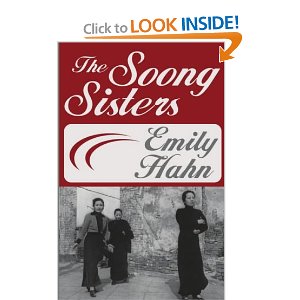
http://www.independent.co.uk/news/people/obituary-emily-hahn-1261955.html
Obituary: Emily Hahn
Sarah Anderson
Saturday 17 May 1997
...
"Mickey" Hahn was born in 1905 in St Louis, Missouri; her
father was a hardware salesman and her mother a suffragette. She and her
siblings were brought up to be independent and to think for themselves and
she became the first woman to take a degree in mining engineering from the
University of Wisconsin.
She went on to study mineralogy at Columbia and anthropology at Oxford,
working in between as an oil geologist, a teacher and a guide in New Mexico
before she arrived in New York where she took up writing seriously. Letters that
she had written to her brother-in-law were published in the New Yorker in 1929
and she continued to write for the magazine, under four different editors, on a
variety of topics until a few weeks before her death.
In 1935 she travelled to China for a short visit and ended up by staying nine
years in the Far East.
She loved living in
Shanghai and met both Mao Tse-tung and Chou En-lai,
eventually writing a biography of the Soong sisters, published in 1941.
She became the lover of Zau Sinmay, an intellectual, whom she
particularly liked for his overwhelming curiosity about everything, she felt it
rubbed off on her, and together they founded the English-language magazine Candid
Comment.
She maintained that where she lived was unimportant to her: "I don't pay
attention to my surroundings. I really don't. I don't bother." Perhaps it
was to satisfy her maternal instinct that one day when she saw a gibbon, Mr
Mills, in the Shanghai Pet Store she went home, having bought him, in a state of
"hysterical happiness". During her time in China she learned to
smoke opium, persisting for two years until, inevitably, she became addicted;
she was then cured by a hypnotist.
| - - - -
http://english.eastday.com/eastday/englishedition/node20665/node20667/node22808/node45576/node45577/userobject1ai846193.html
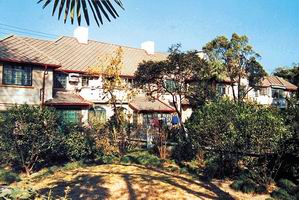
The former residences(above)of American author Emily Hahn(below left) and her
Chinese poet lover Shao Xunmei(below right) were typical Spanish-style
villas at 1754 Huaihai Road. Four years ago, a property developer converted the
villas into new, creamy-yellow houses(top) nd they were sold to Taiwanese
businessmen.(Photo: Shanghai Daily)
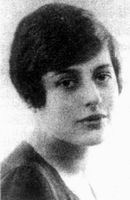
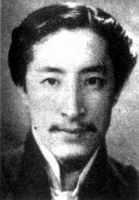
A book published in China last month entitled "Xiang Meili" - American
author Emily Hahn's Chinese name - looks back at the life and loves of this
remarkable journalist and writer in the Shanghai of the 1930s.
Xiang Meili was the name given to Hahn by her Chinese poet-lover, Shao Xunmei (Sinmay
Zau). Although their movie-like affair is a highlight of the new book, their
former homes at 1754 Huaihai Road are gone and it's hard to find traces of their
lives there today.
...
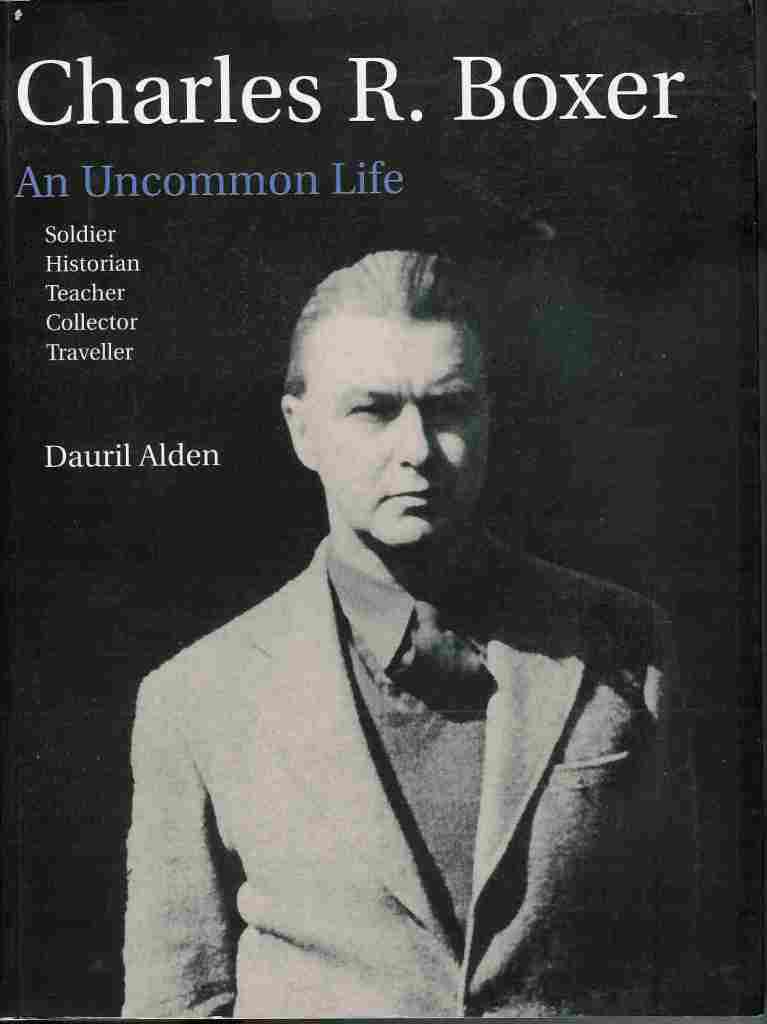 - One of my heroes is Charles Boxer (1904-2000). I knew him as a
brilliant historian of the Dutch in Japan, the East Indies and Brazil
- One of my heroes is Charles Boxer (1904-2000). I knew him as a
brilliant historian of the Dutch in Japan, the East Indies and Brazil
http://en.wikipedia.org/wiki/C._R._Boxer
Charles Ralph Boxer FBA (8 March 1904 at Sandown on the Isle of Wight –
27 April 2000 at St. Albans, Hertfordshire) was a distinguished historian of
Dutch and Portuguese maritime and colonial history.
The son of Colonel Hugh Boxer and his wife Jane Patterson, Charles Boxer was
educated at Wellington College and the Royal Military College, Sandhurst,
Boxer was gazetted a second lieutenant in the Lincolnshire Regiment in 1923 and
served in that regiment for twenty-four years until 1947. He served in Northern
Ireland, then,
from 1930 to 1933, he was a language officer in Japan assigned to the 38th
Infantry Regiment based at Nara, Nara Prefecture, Japan. At the same time,
he was assigned to the non-commissioned officers school at Toyohashi.
In 1933, he qualified as an official interpreter in the Japanese language.
Posted to Hong Kong in 1936, he served as a General Staff Officer 3rd grade
(GSO3) with British troops in China at Hong Kong, doing intelligence work.
In 1940, he was advanced to General Staff Officer 2nd grade (GSO2). Wounded
in action during the Japanese attack on Hong Kong on 8 December 1941, he
was taken by the Japanese as a prisoner of war and remained in captivity until
1945. After his release, Boxer returned to Japan as a member of the British
Far East Commission in 1946-47. During his military career, Boxer published 86
publications on Far Eastern history with a particular focus on the 16th and 17th
centuries.
In 1945, he married Emily Hahn (d. 1997), with whom he had two daughters.
He had earlier been married to Ursula Norah Anstice Tulloch
More about Rewi Alley and Indusco, Inc.:
http://www.ssclf.net/ResearchInfo.aspx?prod_id=11

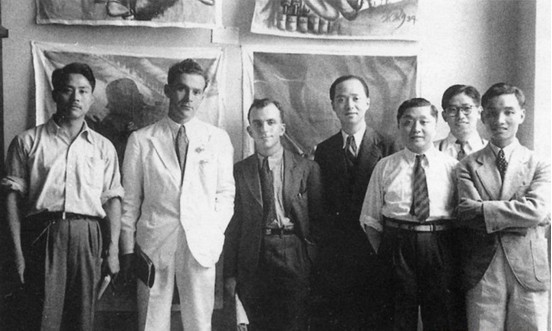
(From left to right) Ye Qianyu, Edgar Snow, Israel Epstein, Jin Zhonghua,
Zhang
2011-8-24
Soong Ching Ling was the pioneer of public welfare in China. Attaching
great importance to China' publicities, Soong exerted significant impact on the
public through her penetrating insight and unique way of publicity work. During
the War of Resistance against Japanese Aggression, she personally selected a
painting for public welfare promotion, which remains a good example even today.
From Fugitives to Refugees
Japanese troops invaded the northeast China on September 18th, 1931 and
this was the notorious "September 18th Incident," which threw China
into a moment when the nation's existence was at stake. Soong Ching Ling was
very anxious about the situation and held talks with friends to discuss how to
resist the Japanese aggression. On Jan. 28, 1932, Japanese troops invaded
Shanghai and the 19th Route Army bravely resisted the aggressors. Soong Ching
Ling, in spite of Japanese bullets and bombs, toured the battlefield at Wusong,
expressing her care and concern for the Chinese officers and soldiers. She also
organized to donate cashes for workers on strike, set up the National Hospital
for wounded soldiers, and made public speeches to inspire the Chinese people
against Japanese aggression. "
...
On Nov. 12, Shanghai fell to Japanese troops, but Soong Ching Ling persisted in
her work on the "isolated island"--the International Settlement.
Urged by her friends for times, she secretly left Shanghai for Hong
Kong by ship on Dec. 23, escorted by her New Zealand friend, Rewi Alley.
In June 1938, Soong Ching Ling founded the China Defense League (CDL) in Hong
Kong, appealing to all peace-loving people and democracy supporters to help
China in her fight against the Japanese aggression. In August of the same year,
"The Chinese Industrial Cooperatives" supported by Soong Ching Ling
was founded in Wuhan for the sake of coastal economic resurgence and the
workers' employment. In Jan. 1939, "The International Committee of
Chinese Industrial Cooperatives" was founded in Hong Kong, with Soong Ching
Ling as Honorary President. After these organizations were founded, it was
urgent to do effective publicity work in order to increase donations as soon as
possible.
...
The Japanese attack on Pearl Harbour on Dec. 8, 1941 broke out the Pacific
War. On the same day, Hong Kong was bombed by the Japanese war planes and the
situation became seriously intensified. On Dec. 10, Soong Ching Ling left
for Chongqing on the last flight from Hong Kong, six hours before Kai Tak
Airport fell to Japanese troops
 Soong Ching
Ling posing with Ding Cong and Chen Yanqiao in April 1939
Soong Ching
Ling posing with Ding Cong and Chen Yanqiao in April 1939
http://en.wikipedia.org/wiki/Soong_Ching-ling
Soong Ching-ling (27 January 1893 – 29 May 1981), also known as
Madame Sun Yat-sen, was one of the three Soong sisters—who, along with
their husbands, were amongst China's most significant political figures of the
early 20th century. She was the Vice Chairman of the People's Republic of
China. She was the first non-royal woman to officially become head of state
of China, acting as Co-Chairman of the Republic from 1968 until 1972. She
again became head of state in 1981, briefly before her death, as the Honorary
President of the People's Republic of China
...
...she exiled herself to Moscow after the expulsion of the Communists from
the KMT in 1927.
... During the Chinese Civil War, she sided with the Communists. The
Kuomintang issued an arrest order for Soong on October 9, 1949, while she was in
Beijing with the Communists.[3]
,..
After the establishment of the People's Republic of China in 1949, she became
one of two Vice Chairman of the People's Republic of China (now translated
as "Vice President"), Head of the Sino-Soviet Friendship Association
and Honorary President of the All-China Women's Federation. In 1951 she was
awarded the Stalin Peace Prize (Lenin Peace Prize after destalinization).
...
She became the first female President of the People's Republic of China: from
1968 to 1972 she acted jointly with Dong Biwu as head of state.
...
Soong aroused the jealousy of Mao Zedong's wife Jiang Qing, who attempted to
have her purged by Red Guards during the Cultural Revolution. However, Mao
himself and Zhou Enlai ordered her not to be touched along with several other
communist and non-communist cadres.
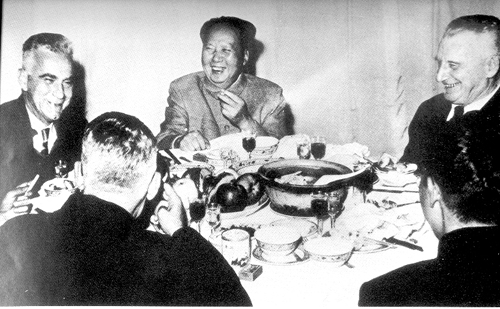 Rewi
Alley and the Beijing Bailie University
Rewi
Alley and the Beijing Bailie University
Rewi Alley / Mao
http://nzchinasociety.org.nz/rewi-alley/
Rewi Alley
The most famous New Zealander in China – Rewi Alley contributed perhaps
more than any other foreigner to the Chinese revolution. He was the founder
and inspiration for the NZ China Friendship Society, dedicating 60 years
of his life to his adopted country, while remaining a New Zealander at heart.
Rewi organised thousands of industrial co-operatives during the war against
Japan. He also pioneered technical training schools, the most famous at
Shandan in the Gobi Desert.
Rewi Alley was born in Springfield, Canterbury, New Zealand in 1897. He went to
primary school at Amberley and Wharenui (Christchurch) where his father was
headmaster.
In 1912 he entered Christchurch Boys’ High School and in 1916 enlisted in
the New Zealand Expeditionary Force which fought in France. He was twice
wounded and received the Military Medal for bravery. Returning home at the end
of World War 1 he bought a farm with an old schoolmate in the Moeawatea Valley
inland from Waverley (Taranaki), where they struggled for six years of farming
depression.Then he left New Zealand and headed for China, arriving on April
21st 1927. He obtained work in Shanghai as a fire officer and later as Chief
Factory Inspector. During this time he saw the terrible conditions of the
Chinese workers at first hand and identified with their struggles.
In the summer of 1929 during his annual leave, he travelled far inland to
Suiyuan Province helping the China International Famine Relief Commission.
Likewise in 1932 he worked on flood relief in Hubei Province. During the
mid-1930s he became friendly with many Chinese and foreign progressive people
and worked with them, sometimes in underground activities supporting the Red
Army.
The Japanese invaded China in force in 1937 and Rewi became actively involved
against them. He initiated and organised the Gong He (Gung Ho) movement for
industrial co-operative factories in unoccupied China, working in the field
in both Nationalist and Communist held areas. By 1942 they had set up about 2000
such co-operatives. Around this time he turned his main attention to schools
which were training youth in the skills needed in the co-operatives. He founded
these schools and called them Bailie Schools after his friend Joseph Bailie,
an American missionary who had pioneered the ideas of integrating theory and
practice in education in China.
http://ricci.rt.usfca.edu/biography/view.aspx?biographyID=8
Joseph Bailie
Joseph Bailie, American missionary (male), was born on 11 July 1860, the
son of William Bailie and (Mrs.) Mary Lou Bailie of Ballycloughan, Ireland.
Having been accepted by the Foreign Mission Board of the Presbyterian Church in
the United States of America (PN), he arrived in China in 1890. He engaged in
ministerial and educational work in Suzhou, Jiangsu, Nanjing, and Beijing.
He died in 1935.
http://www.ampltd.co.uk/digital_guides/ctwe-8/brief-chronology.aspx
...
1928
Rewi Alley met Dr Joseph Bailie, an American missionary of Irish extraction,
after reading one of his newspaper articles on technical improvements in the
Chinese village. The two men became close friends. Bailie urged Rewi to
understand China from the social base of its villages and to make time to see
them at first hand. Rewi started to make trips to towns, temples, gardens and
canals on the perimeters of Shanghai, and making visits to villages further
afield at the weekends.
...
1929
After 10 months Rewi Alley was appointed as an inspection officer for the
Shanghai Fire Department. This entailed visiting factories throughout Shanghai.
One weekend in the spring he witnessed the execution of 6 young men at Wuxi who
had been trying to form a communist union of the town’s silk filiature
workers. Rewi spoke about the Wuxi shootings with Henry Baring, a
schoolteacher acquaintance in Shanghai, who gave Rewi a copy of Karl Marx’s
Das Kapital to read. They discussed labour and social conditions in
Shanghai.
...
At the end of 1932, he met Agnes Smedley, left wing journalist, writer and
revolutionary, who had asked to be shown round the Shanghai factories. He
spoke to her about his disillusion with the Kuomintang, their control of the
press and the suppression of workers in the city, the shooting of the silk
workers at Wuxi, the execution of other alleged Communists and other dreadful
events. Rewi Alley already knew a little of the covert operations of Communists
in Shanghai. He now saw the Communists as the champions of China’s oppressed
population.
1933
Eager for change, Rewi Alley and Agnes Smedley joined a small group of
western Marxist intellectuals, including Edgar and Helen Snow, to form a secret
Marxist-Leninist study group in Shanghai, set up with the aid of the Chinese
Communist Party. For the next 5 years he wrote (under various aliases
including Han Sumei and Chao Tachi) for the radical journal Voice of China and
worked secretly for the Communist underground, including having to wash
‘bloody money’ obtained by Red Army raids executed under the guise of
anti-Japanese strikes.
...
1935
...
Rewi, Agnes Smedley and Song Qingling were involved in setting up a secret
medical depot for Mao Zedong’s forces in the north-west. This was
established by persuading Dr Wunsch to set up a legitimate dental practice in
Xian as a cover for passing important medical supplies on to Communist forces.
1936
...
His friend, Dr Joseph Bailie, shot himself after a failed cancer operation.
...
1939
Ida Pruitt, a Chinese-born American heading the social services department of
the big Rockefeller hospital in Beijing, provided important support. By mid
1939 she had founded in Hong Kong the International Committee to receive
overseas funds for the ‘Gung Ho’ movement. This was headed by Ronald
Hall, the Anglican bishop of Hong Kong and South China. Ida Pruitt set off to
America to embark on further fund raising there. This led to the
foundation of Indusco Inc with the backing of leading personalities such
as Eleanor Roosevelt and Henry Luce.
Rewi Alley continued to travel relentlessly all over China on CIC work and
had a number of meetings with Mao Zedong. Mike worked as translator for the
Canadian surgeon Norman Bethune in his front line operating theatres.
...
1984
Rewi Alley was officially
recognised by the New Zealand Government when he
was awarded a Queen’s Service Order for services to the community
http://en.wikipedia.org/wiki/Queen's_Service_Order
The Queen's Service Order was established by Queen Elizabeth II on 13 March
1975, awarded by the government of New Zealand "for valuable voluntary
service to the community or meritorious and faithful services to the Crown or
similar services within the public sector, whether in elected or appointed
office". This order was created after a review of New Zealand's honours
system in 1974.
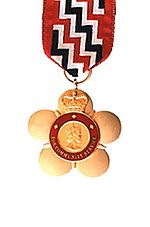 Recipients of this award are entitled to use the post-nominal letters "QSO"
Recipients of this award are entitled to use the post-nominal letters "QSO"
http://asteria.fivecolleges.edu/findaids/umass/mums564.html
Following the Japanese invasion of China in 1937, the New Zealand expatriate
Rewi Alley threw his considerable talents behind the war effort. Having lived
and worked in China almost continuously for a decade, Alley was intimately
familiar with the country, well traveled, and well connected, including to Mao
Zedong and the Communist underground.
After witnessing first hand the devastation of the Japanese assault in Shanghai,
Alley gathered a group of eleven like-minded friends at a local restaurant in April
1938 to help organize and support the resistance. The result of that meeting
was the formation of the Chinese Industrial Cooperative Movement (CIC), also
known as the Gung Ho Movement from the Chinese slogan for "work
together." From the outset, the CIC was an ambitious enterprise built
upon the chaos of war and, at least initially, it drew support from both
Communists and Nationalists. The plan was to establish a network of industrial
cooperatives throughout the unoccupied regions of the country, away from the
vulnerable coastal cities, mobilizing labor from among the large pool of
refugees to produce everything from vehicles to armaments, machinery, clothing,
and other durable goods needed for the war effort. With the blessing of the
British and Chinese governments, Alley arranged to have factories freighted
inland to keep production flowing, engaging the Chinese workers in the gung
ho spirit to do the work themselves. To fund the movement, in 1939, Alley's
energetic associate Ida Pruitt created Indusco, Inc., as a New York-based
fundraising arm of the CIC.
...
Alley's friend and CIC co-founder, Edgar Snow, considered Alley to have been
as important to China during the Sino-Japanese War as T.E. Lawrence was to the
Arabs during the First World War, "and perhaps more," symbols of
active resistance, as much as agents of change. "Where Lawrence brought to
Arabia the destructive techniques of guerrilla warfare," Snow wrote,
"Alley is teaching China the constructive organisation of guerrilla
industry."
[ fyi - The Rockfellers are baptists ...
http://en.wikipedia.org/wiki/Ida_Pruitt
Ida Pruitt was the daughter of North China Southern Baptist
missionaries Anna Seward Pruitt and C.W. Pruitt.
...
In 1918, she came back to the United States and studied social work in Boston
and Philadelphia until hired by the Rockefeller Foundation in New York as
head of the Department of Social Services at the Peking Union Medical College (PUMC)
where she remained until 1938.
...
During the Japanese occupation of China (1937–1945), Ida assisted Rewi
Alley as he organized the Chinese Industrial Cooperatives. The CIC was
formed to organize cooperative factories throughout the countryside to support
China's industry. Schools were built to train the Chinese (often crippled or
orphaned) to work in and manage the factories. Indusco, the fundraising arm
of the CIC in the United States, was formed, and Pruitt served as its executive
secretary from 1939 to 1951.
...
In 1946. She rented an apartment with Maud Russell on West 93rd Street in
New York City and remained there until 1951 when she retired ... Ida Pruitt died
on July 24, 1985, in Philadelphia.
http://www.gungho.org.cn/en-info-show.php?infoid=842
...
Following the official inauguration of the Chinese Industrial Cooperative
Association in Hankou, 1938, thousands of co-ops were organized throughout the
country. All sorts of daily necessities were produced in large quantity by the
co-ops, giving necessary support to the army and people in the warfront against
Japanese invaders. While the Snows did not personally organize co-ops in the
field, as Alley did, they campaigned tirelessly, soliciting support for them in
the United States, the Philippines, and elsewhere.
This was done in close association with the International Committee of
Indusco, whose chairwoman was Madame Sun Yat-sen.
Along with Ida Pruitt, Helen Snow helped set up and run the American
Committee in Aid of the Chinese Industrial Cooperatives in New York City,
becoming its vice-chairperson. Mrs. Anna Roosevelt, the U.S. President’s
mother, was honorary head. Mrs. Eleanor Roosevelt, the President's wife, was a
sponsor. The committee collected some $5 million U.S. dollars in wartime relief
funds for Indusco.
http://www.pbs.org/wgbh/americanexperience/features/primary-resources/eleanor-fbi/4/
Primary Resources: FBI Files
...
Mrs. Roosevelt deserve a great deal more publicity than they have
heretofore received. Time after time, she has gone out of her way to endorse
or to give assistance to known Communists.
Take the case of her notorious endorsement of Alger Hiss, in her column of
August 16, 1948. "Smearing good people like Alger Hiss and Lauchlin Currie
[both Soviet espionage agents] is, I think, unforgivable...Anyone knowing either
Mr. Currie or Mr. Hiss, who are two people whom I happen to know fairly well,
would not need any denial on their part to know they are not Communists.
Their records prove it."
Eleanor Roosevelt is unmistakably the wheel-horse of the Democratic Party.
Without her aid, no aspirant to the Democratic Presidential nomination is
supposed to stand a ghost of a chance. Her political moves pivot from a base
centered within the organization known as the American for Democratic Action
(ADA). She was one of the ADA's founders and is its honorary chairman and one of
its supreme potentates. Knowing her long pro-Communist record, it is
inconceivable that any of the sycophantic Democratic Presidential aspirants
currently clustering around this Queen Bee of the ADA could be unaware of their
public responsibility to repudiate her endorsement.
...
(2) American Committee in Aid of Chinese Industrial Cooperatives (INDUSCO,
INC.) - member advisory board - November 1950 (Senate Internal Security
Subcommittee, Hearings, Institute of Pacific Relations, Part 11, March 1952, p.
3794)
...
(39) INDUSCO, INC. (See also citation number 2, same organization, earlier
date) - member of advisory board - letterhead, April 1951 (LJLC, p. 52)
reference: http://www.archive.org/stream/instituteofpacif11unit/instituteofpacif11unit_djvu.txt
(The document referred td was marked "Exhibit No. 559," and is as
follows:)
Exhibit No. 559
Honorary Chairman : Admiral Harry E. Tarnell.
Honorary Vice Chairman : Frances Curtis, Marshall Field, Owen Lattimore.
INDUSCO INC.
American Committee in Aid of Chinese Industrial Cooperatives
"Gung Ho" — ^Work Together
439 FOURTH AVENUE, NEW YORK 16, N. Y.
Telephone MUrray Hill 3-3792
November 1950.
Dear Friend : The weekly letters from the Bailie Memorial Technical Training
School in Sandan tell of the progress in the projects which your gifts have
helped to make possible. There is so much to be said for the remarkable job the
school has done and continues to do.
There is the desert land that grows wheat, vegetables, and flax where nothing
grew before. There are the numerous production centers that turn out cloth,
cbemicals, rugs, pottery, machines, glass, paper, and many other articles where
nothing was produced before. Most important of all are the young people —
future machinists, chemists, animal husbandry experts, cooperative specialists,
scientific farmers and producers for the villages of China — who but a few
years ago were poverty-stricken youngsters without a future or hope. -•
What a truly great gain for freedom from want.
What makes it meaningful to us is that Americans join with people from all over
the world to help make the Sandan Bailie School a living center of inter-
national good will, where your friendship is a concrete and creative thing.
I want to urge you to continue to keep the Sandan Bailie School a splendid
example of this friendship and help. The cost of running the school had
decreased considerably because of the school's ability to supply many of the
things it needs. But our help — and it is getting through to them and
getting through in record time these days— is needed for teachers' salaries,
for new teaching equipment, for replacement of worn equipment, for medical
supplies in the school hospital, and for development of experimental projects.
We would like to be able to say to Sandan at Christmas — "your American
friends are with you ; we can promise the funds you need to carry you to the
next year's harvest."
Won't you send us as generous a check as you can today?
Very sincerely,
sig Ida Pruitt
Ida Pruitt.
Board op Directors : Maxwell S. Stewart, Chairman ; Rev. Dwight J. Bradley, D.
D.,
Vice Chiairman ; Ida Pruitt, Secretary ; Charles S. Gardner, Treasurer ;
T. A. Bisson,
Frances Curtis, Mrs. Frederick B. Fisher, Talitha Gerlach, Carl Goderez, Helen
M.
Harris, Mrs. Philip Jaffe, 01«a Lang, Mrs. Owen Lattimore, Bishop S. Harrington
Littell,
Rev. William H. Melish. Walter Rautenstrauch, Alfred B. Sidwell, Nym. Wales,
Richard
Watts, Jr., C. Martin Wilbur, Thomas Wright. Representative in China, Rewi
Alley.
Officers of Indusco, Inc.
President, Maxwell S. Stewart ; Vice President, Mrs. Gifford Pinchot ;
Secretary, Mrs. Owen Lattimore ; Treasurer, Charles S. Gardner.
Advisory Board
...
Mrs. Franklin D. Roosevelt
Mr. Morris. Do you know that Mr. Rosinger was the editor of the last
large publication of the IPR ?
Mr. Fairbank. He was the editor of the State of Asia which was a symposium.
Mr. Morris. That was financed by the Rockefeller Foundation, was it not, and
it was an extensive project of the IPR?
Section for "The
United China Relief Fund"
This seems to be run be the same people that were using other funds to support
Mao's army. ... Also this would be a way for Rockefeller Luce and others to
funnel support with the front that it was "for the children" ...
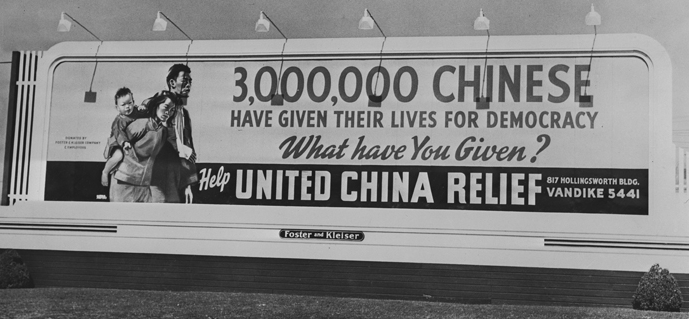
United Service to China was founded as United China Relief on February 7,
1941. Their fund drive in 1942 brought in $7 million dollars for relief in
China.
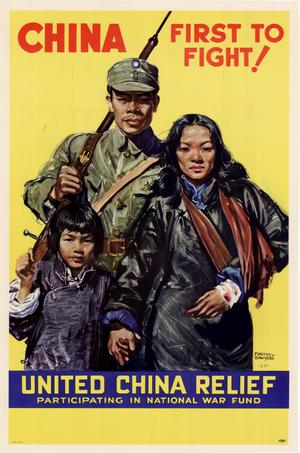
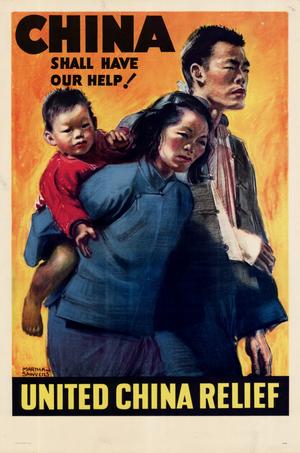
http://findingaids.princeton.edu/getEad?eadid=MC135&kw=
Creator:
United Service to China (U.S.).
Title and dates:
United Service to China Records
1934-1967
bulk 1941-1950
Abstract:
The Records of United Service to China, Inc., known from 1941 to 1946 as
United China Relief, Inc., document the activities of the organization from
the early formation in 1940 to its official consolidation with the American
Bureau for Medical Aid to China in 1966.
In addition there is a limited amount of material from other Chinese relief
agencies that predate the founding of United China Relief / United Service to
China. The Records focus on UCR/USC attempts to raise money in the United
States, to educate Americans about China and the Chinese people, and to
carry on relief work in China. The collection consists primarily of correspondence
among the various individuals and agencies involved with UCR/USC, along with
other material produced by the agency, such as minutes and publicity material.
In addition, the collection includes a series of photographs dealing with
China during the 1940s and efforts in the United States to raise money for China
during the same period.
...
History of United Service to China
United Service to China was founded as United China Relief on February 7, 1941
as a membership corporation in the state and county of New York. However, the
origins of UCR/USC stretch back more than a year to January 1940 when a
group of men known as the Committee of Five first suggested that the
various relief agencies raising money for China could work more effectively if
they were to work together.
The Committee of Five promoted, without much success, this idea throughout the
year among the various agencies associated with relief for China. This
committee consisted of Dr. Claude Forkner, Mr. Roger Greene, Dr. Edward H. Hume,
Dr. John Earl Baker, and Dr. B. A. Garside.
The Coordinating Committee for China Relief and Rehabilitation decided in
December 1940 that the idea had some merit and began studying ways in which to
coordinate their fundraising activities. This committee consisted of
representatives from the American Bureau for Medical Aid to China (ABMAC), the
China Emergency Relief Committee, the China Aid Council, the American Committee
for Chinese War Orphans, the Church Committee for China Relief, China Famine
Relief, the American Committee for Chinese Industrial Cooperatives (Indusco,
Inc.), and the Associated Boards for Christian Colleges in China (ABCCC).
These agencies decided to establish a corporation that would carry on a joint
fundraising campaign. All of the agencies on the committee except China Famine
Relief elected to become cooperating agencies of the newly formed United
China Relief, Inc.
The original intent of the cooperating agencies was that UCR would be a
temporary institution which would last only long enough to conduct a 1941
fundraising campaign.
The goal of this campaign was to raise $5 million, approximately four times
as much as the agencies had been able to raise separately in 1940. UCR was
unable to meet this goal by the original July 31 deadline, so the board extended
the deadline several times. By the end of the year, UCR had been so
successful that the agencies decided to maintain it as a permanent institution
in order to raise money on a permanent basis.
In 1942 UCR conducted a very successful campaign, raising approximately $7
million for relief for China. However, this was UCR's last independent
campaign for several years, because in 1943 UCR joined the National War Fund and
conducted most of its fundraising through that agency and under its supervision.
This arrangement was a great financial success for UCR.
The next major change in the organization came at the end of the war in 1945.
Most of UCR's efforts up to this time had been focused on short-term relief work
in China to deal with the devastation of the country by the war with the
Japanese. After the war the UCR turned instead to projects with more
long-term benefits, such as education. The directors felt that the best way
they could fulfill their duty to China was to help the Chinese help themselves.
As a reflection of its new mission, the board decided in 1946 to change the
name of the corporation to United Service to China, Inc.
USC attempted to conduct its first independent campaign in several years in 1946
and extending through 1947. This was not as successful as the campaigns during
the war years had been, a condition which the directors attributed to lack of
interest in philanthropic organizations among the American people.
In an attempt to generate more income, USC joined with an organization known
as American Overseas Aid - United Nations Appeal for Children in a joint
campaign, through which they had hoped to receive $4.8 million, but
eventually received only a few hundred thousand dollars. Although USC tried
other fundraising techniques, such as direct mail to those considered most
likely to contribute, USC revenue was still far less than in previous years.
In addition, growing Communist influence in China made it seem less and less
likely that USC would be able to generate support for China, no matter how
assiduously it campaigned. As a result, USC had to scale back its
activities. USC operated on an ever decreasing scale until the end of 1950, when
the directors decided that USC should become inactive. They dismissed all of
their employees and ceased all active solicitation as of December 31, 1950.
During the next few months, all the assets of USC except for a small reserve
fund were handed over to the two cooperating agencies which were still operating
and associated with USC: the American Bureau for Medical Aid to China (ABMAC)
and the United Board for Christian Colleges in China (UBCCC, formerly ABCCC).
The contributors to USC were informed of the change and asked to make all their
contributions either to ABMAC or UBCCC. In the years that followed, USC carried
on very limited activities. It did not solicit funds, but it did receive some
unsolicited contributions and bequests from estates. It passed these funds,
along with interest from the reserve fund, on to its cooperating agencies. The
board met once every year in order to maintain USC‘s legal status. The
meetings usually lasted only 10 to 15 minutes and consisted of little more than
reelecting all the members of the board for the upcoming year.
In 1965, the board decided that USC could do more for China by giving all of
its funds to agencies which were actually active in China than by waiting to
reactivate itself at some unknown time in the future. It decided to
liquidate its reserve fund and hand over the funds to the cooperating agencies
to help them continue their programs. The board therefore ordered that the
officers of the corporation look into (1) recovering all the funds from dormant
accounts which had previously been held by local committees of UCR/USC, and (2)
finding a way of terminating USC's legal existence. The officers conducted the
search for the dormant funds, but the amount that they recovered was negligible.
At the next meeting of the board, in November 1966, the directors voted to
divide the financial assets and liabilities of USC evenly between the American
Bureau for Medical Aid to China (ABMAC) and the United Board for Christian
Higher Education in Asia (UBCHEA, formerly UBCCC). They also voted to
consolidate USC and ABMAC, so that ABMAC would take on all the legal obligations
of USC, and it would go out of existence as of the close of business on December
31, 1966.
In total, UCR/USC had
raised over $52 million to aid China, 90% of it between 1941 and 1946, and 99%
between 1941 and 1950.
http://www.umkc.edu/university_Archives/invtry/EPS/EPS-INV1.htm
...
Special Correspondence
Indusco: Chinese Industrial Cooperatives (C.I.C.)
In the late 1930’s, Edgar Snow, Nym Wales, and Rewi Alley established the
Chinese Industrial Cooperative organization, Indusco. Snow’s primary
responsibility as chairman of the Membership and Propaganda Subcommittee was to
build public and financial support for Indusco. Indusco was most active through
the 1940’s.
Folder 87. Indusco correspondence 1938
includes correspondence with Rewi Alley, James Bertram, and Rewi Alley’s
article, "Hong Kong and Shanghai Promotional Committee of the Chinese
Industrial Cooperative"
The 1939 correspondence includes correspondence with Rewi Alley, Israel
Epstein (Izzie), T. V. Soong, Ida Pruitt (chairman of the Hong Kong Promotion
Committee of the C.I.C.), Mrs. SelwynClark of the China Defense League,- K. P.
Liu (secretary-general of the C.I.C.), Y. C. Meng, Chen Han-seng, Theodore (Ted)
Herman, and Guo Da (journalist). Also letters to Mao Tse-tung.
http://www.pumc-pharm.com/about/pumc-history.htm

1921 - Trustees of Peking Union Medical College. John D. Rockefeller, Jr.,
PUMC’s largest donor, is center (holding hat). (Source: Paul Monroe
Papers, Special Collections, Columbia University, Teachers College Library)
Fig.
1,—Members of the board of trustees of Peking Union Medical College:
From left to right:
Dr. Francis W. Peabody, Harvard Medical School; Dr. Henry S. Houghton, director
of the college; Miss Eggleston, assistant secretary of the board of trustees;
Edwin R. Embree, secretary of the Rockefeller Foundation; Prof. Paul Monroe,
Teachers College, Columbia University; James L. Barton, secretary, American
Board of Foreign Missions; Dr. William H. Welch, Johns Hopkins University; Dr.
Richard M. Pearce, director, Rockefeller Foundation, Division of Medical
Education; George E. Vincent, president, Rockefeller Foundation; John D.
Rockefeller, Jr. ; Roger S. Greene, resident director of the Rockefeller
Foundation China Medical Board;
F. H. Hawkins, London Missionary Society; Martin A. Ryerson, chairman, board of
trustees, University of Chicago ; J. Christie Reid, Medical Missionary
Association of London.
The Committee of Five promoted,
without much success, this idea throughout the year among the various agencies
associated with relief for China. This committee consisted of Dr. Claude
Forkner, Mr. Roger Greene, Dr. Edward H. Hume, Dr. John Earl Baker, and Dr. B.
A. Garside
http://www.nytimes.com/1992/12/29/obituaries/claude-e-forkner-92-internist-and-professor.html
Claude E. Forkner, 92, Internist and Professor
Published: December 29, 1992
Dr. Claude E. Forkner Sr., a former professor at Cornell University Medical
School and an internist, died on Dec. 20 at his home in DeLand, Fla. He was
92.
Dr. Forkner died in his sleep. He had suffered from diabetes, said his wife of
65 years, Marion Sturges DuBois Forkner.
For 30 years, from the mid-1930's to the mid-1960's, Dr. Forkner was on the
faculty of Cornell University Medical Center and an attending physician at
New York Hospital. His patients included Senator Robert A. Taft, the Ohio
Republican, the royal families of Iran, Saudi Arabia and Nepal, and film
stars, including Fredric March and Gertrude Lawrence
http://www.rockarch.org/publications/resrep/barnes.php
...
the China Medical Board and its parent organization, the Rockefeller
Foundation, supported dozens of medical schools in China,
...
"China Medical Board - CMB Director Claude E. Forkner"
...
Even after the Japanese occupation of the PUMC in December 1941, the Medical
College faculty and staff decided to stay in Beijing.
...
Rockefeller Foundation and China Medical Board contributions to public health
in wartime China were either invaluable or invisible, depending on the angle of
one's line of sight ... while most commoners had no idea that the
Foundation even existed, nor did its millions of dollars save them from
starvation, bombing, and death by treatable disease.
http://en.wikipedia.org/wiki/Edward_H._Hume
Dr. Edward H. Hume
...
Edward Hicks Hume (1876–1957) was a missionary doctor and educator best
known for his work in China for the Yale-in-China Mission and his writings
on Chinese medicine. After some twenty years of medical work, which included
organizing the Hsiang-Ya Medical College, which still functions in Changsha
today, Hume resigned over the issue of turning control over to Chinese during
the anti-imperialist campaigns of 1925-1927. He died in Wallingford,
Connecticut, February 8, 1957.
...
In 1926, as other foreigners in China condemned the anti-foreign campaigns of
the rising Kuomintang, Hume declared his understanding of their attitudes.
"No one can give effective service to China today, whom the Chinese do not
welcome. We are guests here."
When Yali students took to the streets in violent protest of the May
Thirtieth Incident of 1925, however, Hume found it impossible to simultaneously
placate them, reassure his Chinese and American colleagues, and satisfy the
trustees in New Haven. He came to doubt the worth of the American staff and even
of the Yali Bachelors, recent Yale graduates who came to Changsha to teach
English.
When the Trustees rejected his proposal that the medical school and college
be turned over to the Chinese, he offered his resignation. [4]
In the years that followed, Hume became director and executive vice-president of
the New York Post-Graduate Medical School and Hospital. From 1934 to 1937 he
conducted a survey of medical facilities for the Chinese National Health
Administration and went on to carry out such a survey in India. Hume also
helped to organize the Christian Medical Council for Overseas Work, of which he
was secretary from 1938 to 1946.
He participated or served as an officer in a number of organizations, such as Yale-in-China
(Trustee, 1927-1954, President 1934-1936, and Vice-President, 1955-1957);
the Associated Boards for Christian Colleges in China; and the American
Council of the Institute of Pacific Relations
http://en.wikipedia.org/wiki/Bettis_Garside
Bettis Alston Garside (November 22, 1894 - August 1, 1989), better known during
his life as B.A. Garside, was an author, an executive for several
philanthropic organizations focused on China, and an educator.
...
n 1922, Garside left on a Presbyterian mission to China. He studied Mandarin
until 1923, when he became an education professor at Cheeloo University in Jinan.
He served in that role until 1926.[2]
[edit] Work on Chinese education
From 1927-1932, Garside served as secretary of the China Union Universities
office in New York City.[2] In his first year in the post, Garside helped eleven
Christian colleges in China reopen after they had shut due to political turmoil
within the Kuomintang (KMT). Earlier that year, Communist influence in the KMT
created conditions leading to shuttering of several of the institutions.[3]
In October 1932, a new organization, the Associated Boards for Christian
Colleges of China (ABCCC) was formed to focus on the interests of Christian
colleges in China.[4] Garside served as Executive Secretary of the new
organization, a position he held until 1941.[2] At the ABCCC, Garside took upon
the role of promoting information about the colleges, which in the 1932-1933
academic year had combined enrollments of 5,400 students and endowments of US$12
million.[4]
In 1935, Garside received an honorary Doctor of Humane Letters degree from
College of the Ozarks.[2]
By the time of the start of the Second Sino-Japanese War in 1937, 11 of the
12 member institutions of the ABCCC were in the war zone. Garside spoke
widely to encourage the American public to boycott Japanese goods to help stop
the war, which had prompted several of the colleges to relocate.[5] Later in the
war, in 1940, Garside led fundraising efforts for the members of the ABCCC,
which had then grown to 13 colleges. In that year, over 7,700 students attended
the schools, several of which had moved because of the conflict. Garside
spearheaded a campaign to raise US$250,000 for the schools
...
In March 1941, the ABCCC became part of United China Relief, a new
organization which brought together several different philanthropic
organizations operating in China.
Other organizations joining United China Relief included the American Bureau for
Medical Aid to China, the China Emergency Relief Committee, the American
Committee for Chinese War Orphans, the Church Committee for China Relief, the
American Committee for Chinese Industrial Cooperatives, and the China Aid
Council.
The new board for this organization included Pearl Buck, William Bullitt,
Henry Luce, Robert Sproul, Wendell Willkie, John D. Rockefeller III, Theodore
Roosevelt Jr., David O. Selznick, and Thomas Lamont. Eleanor Roosevelt served as
honorary chairman.
This board chose Garside as the executive director, and he set out to
raise the money needed to help the refugees from the war.[7]
United China Relief was the largest philanthropic effort to aid the Chinese
people up to that time. This organization, which later became known as United
Service to China, raised over US$50 million in donations.[1] Garside's skill
in fundraising was shown by the receipt of over $500,000 by June 1941, a mere
three months after the launch of the original campaign seeking $5,000,000.[8]
From 1941-1967, Garside served in various executive capacities with both
organzitions.[2]
In 1959, Garside and Lowell Thomas organized the American Emergency Committee
for Tibetan Refugees.[1] Garside served on this committee until 1970.[2]
Garside was a strong supporter of Nationalist China, serving on the
Committee for Free China and One Million Against Admission of Communist China
to the UN. Garside received the Order of Brilliant Star and the Order of
Auspicious Clouds from the Republic of China.
reference: The
Nanking Massacre Project
A Digital Archive of Documents & Photographs from American Missionaries
Who Witnessed the Rape of Nanking
From the Special Collections of the Yale Divinity School Library
http://www.chinatownology.com/China_Relief_Fund.html
When the Sino-Japanese War erupted on 7 July 1937, the news spread very
quickly around the world. Overseas Chinese followed the developments very
closely and soon began exploring ways to support China.
In Singapore, leaders in the Chinese community called for a conference to
discuss ways to support China. The conference, 侨民大会,
was held on the 15 August 1937 under the close supervision of the British
colonial government who wished to remain neutral.
The conference delegates founded the Singapore Overseas Chinese Relief Fund
Committee,
马来亚新加坡华侨筹赈祖国伤兵难民大会委员会,
and chose Mr. Tan Kah Kee, 陈嘉庚, to be the chairman.
As this organization evolved, Chinese leaders in Nanyang, today’s South East
Asia, began discussing the possibility of a regional body to co ordinate fund
raising efforts. These leaders include Mr. Lee Cheng Chuan,
李清泉 from the Philippines and Mr. Zhuang Xi Yan (Tjung Sie
Gan, 庄西言) from Dutch East Indies, today’s
Indonesia.
This initiative was supported by the Chiang Kai Shek’s ,
蒋介石, Nationalist Government in China and as a result,
Chinese leaders in Singapore called for an Overseas Chinese Conference on 10
October 1938. Due to the lack of large conference venues, they hosted the event
at the Nanyang secondary school (南洋华侨中学)
in Singapore.
Overseas Chinese Conference
The Overseas Chinese Conference was attended by 180 representatives from the
Philippines, Vietnam, Thailand, Indonesia, Hong Kong, Malaya, Burma and
Singapore. The Thai government had forbid Chinese in their territory to
participate or organize any activities to support China. As a result, the
Chinese leaders from Thailand participated in the conference secretly.
These leaders founded the first Chinese regional organization in the history of
Nanyang. This organization was the Nanyang Federation of China Relief Fund,
南洋华侨筹赈祖国难民总会
or 南侨总会. Mr. Tan Kah Kee was elected as the
Chairman and the headquaters of China Relief Fund was located at the Ee Hoe Hean
Club 怡和轩俱乐部, on Bukit Pasoh in
Singapore Chinatown.
When the delegates returned hoome, they formed their local China Relief Fund
offices to implement fund raising programs. While most of the activities were
locally driven, there were also some regional programs.
For example, the Wuhan Choir, 武汉歌唱团 from
China launched a Malaya Fund Raising Tour in Singapore and Malaya. Money
raised by China Relief Fund was used to pay for medical supplies, war materials
and also weapons
http://www.thelegacy.nl.sg/exh_community.html
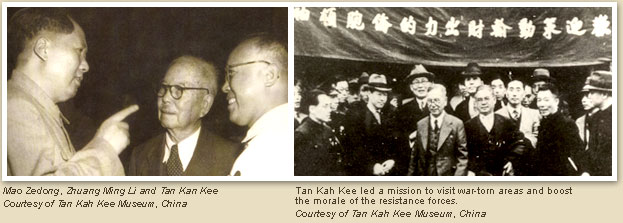
Left: Mao Zedong, Zhuang Ming Li and Tan Kan Kee; Right: Tan Kah Kee led a
mission to visit war-torn areas and boost the morale of the resistance forces.
Tan’s early anti-Japanese war efforts were launched after the 1928 Jinan
Incident, when Japanese and Chinese military clashes led to many civilian
casualties. Believing that the Overseas Chinese had a responsibility to support
their homeland when it was under threat, Tan led the Shandong Relief effort,
which raised $1 million (Chinese currency) within a month.
Tan went on to lead other relief fund efforts, culminating in the Singapore
China Relief Fund Committee and South Seas China Relief Fund Union. Under
his able leadership, the latter consolidated the efforts of Chinese communities
across Southeast Asia and contributed a total of about $5,500 million (Chinese
currency) to the Chinese war effort between 1937 and 1942. Tan was greatly
respected by the Chinese political leadership; during a 1940 mission to China,
he met Chiang Kai Shek, Mao Zedong, Zhou Enlai, Zhu De and other key members of
the Kuomintang and Chinese Communist Party.
http://poeygee.wordpress.com/2009/08/13/hello-world/
Tan Kah Kee – A granddaughter’s journey of
discovery
...
The year was 1940, and China’s luck was at its lowest point. Much of
the eastern states were occupied by the Japanese, and the Nationalist Party
under Chiang Kai-shek, still fighting a rear-guard action from the safe haven of
wartime capital Chongqing, was hopelessly corrupt. As a de facto leader of
the overseas Chinese, Tan Kah Kee has just embarked on an 8-month trip to China,
dubbed the Comfort Mission, to bring aid and moral support to those suffering
from the onslaught of the invaders. After being feted by Chiang, he visited Mao
Zedong, then living in the caves of Yenan with a few thousand of his forces.
...
Despite Chiang Kai-shek’s chagrin and veiled warnings about how the communist
were not to be trusted, (Tan Kan Kee) TKK was anxious to visit Yenan,
stronghold of the communist party, especially after having read a book by Edgar
Snow called Red Star Over China which praised Mao. Whilst the rest of the
comfort mission contingent headed in several directions to carry out their
assignment, TKK together with his two closest aides, traveled to remote
Shaanxi province to spend a much documented 8 days with Mao and his followers.
...
[ beware of stories of communist conversions... oh here's one: ]
According to TKK’s historian CF Yong, “What TKK saw in Yenan
delighted him no end as he believed he had found a new earth and new heaven. He
saw in Mao a public-minded and loyal patriot, whilst in Chiang he saw a cunning
and crafty dictator…after Yenan TKK came to the conclusion that Chiang’s
government would collapse and that Mao would win.”
...
When civil war broke out in China in 1946, TKK – who had previously
thought it futile to intervene, blaming the war on the intractable stance of the
Kuomintang – decided to throw in his lot with the ‘leftists’, and in
his capacity of head of SCRFU, telegrammed to President Truman to withdraw his
support for Chiang. This resulted in bitter enmity between the
pro-Kuomintang and Pro-TKK groups which soon polarized the Singapore and Malaya
huaqiao communities as never before, resulting in heated political rallies and
many slanging matches in the media. The British colonialists became alarmed,
especially with a resurgent Malayan Communist Party who allied themselves with
the TKK group, and issued stern warnings, as well as banned the China
Democratic League, set up to support TKK. Soon TKK was persuaded to make a
public statement to support law and order under the administration, and drop his
support for the Malayan communist uprising.
...
By 1948, after the Communist Party had succeeded in capturing much of China,
including the south, victory was imminent. A few months later, TKK received
an invitation from Mao to take part in the People’s Political Consultative
Conference in Beijing, which he duly accepted. As preparations were made for
his departure there were signs that he planned to leave the nanyang for good,
and settling in his beloved Jimei to spend his remaining years nurturing
education.
As he sailed for Hongkong in May 1949, thousands of wellwishers saw him off ,
and just as many welcomed him along each destination point in China, with his
movements and speeches well-covered in the press. In the newly minted
government’s first plenary session, TKK was elected to a 21-man Preparatory
Executive Committee as a representative of the overseas Chinese, andn later, as
a member of the national committee of the PPCC, as well as a member of the
Central People’s Government in Beijing. In other words, TKK became an official
of the PRC from its birth in Oct 1, 1949.
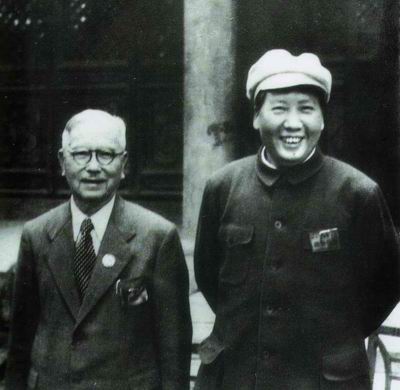
Tan Kah-Kee and Mao
http://ice.xmu.edu.cn/english/showletter.aspx?news_id=2798
Tan Kah-Kee, the Founding Father of Xiamen University
Xiamen University was founded in 1921, the first university in China to be
established by an Overseas Chinese leader. Mr. Tan Kah-Kee was the pioneer
of private education in China, spending his entire fortune in support of
education in his native country. Tan Kah-Kee is an inspirational figure in China´s
history of education, and was described by Mao Zedong as a
"Standard-bearer of the Overseas Chinese and Glory of the Nation". He
was the first President of the China Overseas Chinese League, an outstanding
Overseas Chinese leader, a great patriot, and an eminent entrepreneur, educator
and social activist
http://builders.berkeley.edu/timeline/
1997 - Tan Kah Kee Hall, named by donors from Asia for the legendary
industrialist/ philanthropist, provides muchneeded modern laboratory space for
chemistry and chemical engineering research.
China
WWII - Anti Japanese Volenteer Armies
http://www.yalechina.org/pressreleasedetails.php?PressReleaseId=20
Yale-China Celebrates 100 Years of Partnership in Changsha
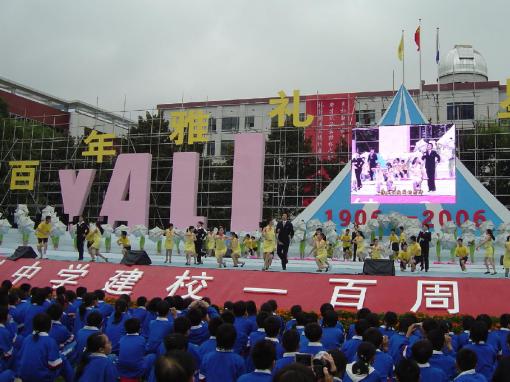
September 2006
Yale-China is privileged to celebrate two extraordinary and momentous events:
the centennials of Yali Middle School and Xiangya Hospital, both of which were
founded by Yale-China in 1906 and remain two of Yale-China's closest partner
institutions.
Yali Middle School and Xiangya Hospital, both of which have endured periods of
tumult and uncertainty, have developed into leading institutions in Hunan.
Yale-China staff, trustees, and current and former Teaching Fellows were on hand
in Changsha earlier this fall to join in the festivities.
...
Yali Middle School opened its doors on November 16, 1906, as the Yali Daxuetang,
or Yali Academy.
The name "Yali" was chosen for its translation of "Yale"
and is derived from a phrase of the Confucian Analects, "ya" meaning
elegance of expression, and "li" meaning propriety of conduct.
Thirty students enrolled in the first class, and undertook a curriculum taught
primarily by Yale graduates and Changsha educators that was designed to place
equal emphasis on Chinese and Western learning. The first Yale graduates to
teach at Yali for relatively short-term periods of one or two years arrived in
1909, and thus began the tradition of the Yale-China Bachelors at Yali.
Yale-China Bachelors (since 1995 known as Teaching Fellows) taught at Yali
Middle School from 1909 through 1948. The program resumed in 1986 and
annually places four recent Yale graduates as English instructors at Yali.
Xiangya Hospital, now one of south China's largest and finest hospitals,
celebrated the centennial of its founding on October 18, 2006.
The name "Xiangya," which is a compound of "Hunan" and
"Yale," illustrates the shared efforts and aspirations of Hunan
and Yale-China leaders a century ago to improve medical education and care in
Hunan.
Today, Yale-China and Xiangya continue to enjoy close cooperation,
particularly in the areas of nursing and public health. Xiangya Hospital is
currently constructing a new hospital complex that will make it the largest
hospital in south China.
It is important to
understand the history of these people and how these systems of tyranny and
death came into place.
Mao's self induced famine killed 38 million and Mao's system of the PRC led to
the deaths of 76 million.
So was Chiang Kai Shek’s being a corrupt warlord trying to defeat the
Japanese as bad as Mao killing 76 million of his own people? ( of course this
was exactly what the Global Eugenists were hoping for from Mao)
I think I have shown that the relief agencies were funneling money and supplies
to the communist armies and these relief agencies were controlled by Rockefeller
agents in the U.S or the communists like Tan Kah Kee
The communist symbol The red Sickle to me represents the purges and cullings....
Gun
Control = Democide
...
http://www.hawaii.edu/powerkills/DBG.CHAP2.HTM
DEATH BY GOVERNMENT - Definition of Democide
Democide is meant to define the killing by government as the concept of murder
does individual killing in domestic society. Here intentionality (premeditation)
is critical. This also includes practical intentionality. If a government causes
deaths through a reckless and depraved indifference to human life, the deaths
were as though intended.
http://www.hawaii.edu/powerkills/NH.HTM
Freedom, Democide, War: An Alternative History Series
IMPORTANT NOTE: Among all the democide estimates appearing in these
books, some have been revised upward. I have changed that for
Mao's famine, 1958-1962, from zero to 38,000,000.
And thus I have had to change
the overall democide for the PRC (1928-1987) from 38,702,000 to 76,702,000.
Details here
http://www.jayrosenblattfilms.com/human_remains.php
Human Remains -a film about the banality of evil
Written and directed by Jay Rosenblatt
30 minutes • 16mm• color/B&W • 1998
Human Remainsis a haunting documentary which illustrates the banality of evil
by creating intimate portraits of five of the 20th century's most reviled
dictators. The film unveils the personal lives of Adolf Hitler, Benito
Mussolini, Joseph Stalin, Francisco Franco and Mao Tse Tung. We learn the
private and mundane details of their everyday lives -- their favorite foods,
films, habits and sexual preferences. There is no mention of their public lives
or of their place in history. The intentional omission of the horrors for which
these men were responsible hovers over the film.
http://www.youtube.com/watch?v=t2laPyPILRk
http://www.youtube.com/watch?v=i3QunYw-AIM
Communism symbol of the sickle is
used to show that they believe in culling and political purges...
http://en.wikipedia.org/wiki/Mao_Zedong
...
From 1931 to 1934, Mao helped establish the Soviet Republic of China and was
elected Chairman of this small republic in the mountainous areas in Jiangxi.
Here, Mao was married to He Zizhen. His previous wife, Yang Kaihui, had been
arrested and executed in 1930, just three years after their departure. In
Jiangxi, Mao's authoritative domination, especially that of the military force,
was challenged by the Jiangxi branch of the CPC and military officers. Mao's
opponents, among whom the most prominent was Li Wenlin, the founder of the CPC's
branch and Red Army in Jiangxi, were against Mao's land policies and proposals
to reform the local party branch and army leadership. Mao reacted first by
accusing the opponents of opportunism and kulakism and then set off a series of
systematic suppressions of them.[21]
It is reported that horrible methods of torture were employed under Mao's
direction.[22] and given names such as 'sitting in a sedan chair', 'airplane
ride', 'toad-drinking water', and 'monkey pulling reins.'[22] The wives
of several suspects had their breasts cut open and their genitals burned.[22]
Short (2001) estimates that tens of thousands of suspected enemies,[23]
perhaps as many as 186,000,[24] were killed during this purge. Critics
accuse Mao's authority in Jiangxi of being secured and reassured through the
revolutionary terrorism, or red terrorism.[25]
http://en.wikipedia.org/wiki/Yan'an_Rectification_Movement
The Yan'an Rectification Movement
Zhengfeng or Cheng Feng was the first ideological mass movement initiated by the
Chinese Communist Party (CCP), going from 1942 to 1944. The movement took place
at the communist base at Yan'an, a remote and isolated mountainous area in
northern Shaanxi, after the communists' Long March.
...
More than 10,000 were killed in the "rectification" process, as
the Party made efforts to attack intellectuals and replace the culture of the
May Fourth Movement with that of Communist culture
http://en.wikipedia.org/wiki/Four_Pests_Campaign
The campaign against the 'Four Pests' was initiated in 1958 as a hygiene
campaign by Mao Zedong, who identified the need to exterminate mosquitoes,
flies, rats, and sparrows ... Ecological imbalance is credited with
exacerbating the Great Chinese Famine in which upwards of 30 million people died
of starvation
http://www.strategypage.com/bookreviews/276.asp
Mao: The Unknown Story, by Jung Chang and Jon Halliday
Alfred A Knopf, New York, 2005 . 814pp. Illus. maps, photos. $35.00.
ISBN:0-679-42271-4.
...
Chang and Halliday have written a meticulously researched account of Mao’s
life, and show him to be one of the most evil and depraved tyrants in
human history.
Mao was born in Hunan in 1893, and joined the Chinese Communist Party in 1921.
He did so mainly for opportunistic reasons, not out of conviction or ideology.
He needed money, and a Communist professor offered him a chance to run a
bookstore. Mao, in fact, had a lifelong aversion to work, and apart from his
book selling and some work as a journalist, never held a real job in his life.
Chang and Halliday have carefully documented and exposed many of the lies the
Communist Party told about Mao. For example, the Party likes to claim it was
founded in 1921, thus making Mao a founding member. In fact, when he joined, it
had already been in existence for a year. The authors expose a great many
myths about Mao, including that he was a competent and successful military
commander.
From the very beginning, Mao was constantly struggling for power with other
Communist leaders. His career in the Party went through many ups and downs, but
his quest for supreme power was unceasing. Mao frequently squandered the
lives of Communist soldiers, both his own and those of rival leaders. He was
perfectly capable of ordering a unit loyal to a rival into a hopeless attack, or
marching it to destruction. He purged and murdered other Communist leaders,
using pitiless terror to keep his own forces in line. He never showed any
aptitude as a military commander, though he frequently took credit for
strategies devised by others. But as a schemer and manipulator, he was without
equal.
One of Mao’s most important advantages during his ascent to power was his
ability to milk the connection with Moscow. The Chinese Communist Party
remained long firmly under Moscow’s control, and the Soviets saw Mao’s
ruthlessness as an advantage. Other Communist leaders might complain to Moscow
of Mao’s purges, but to Stalin the fact that Mao was able to purge enemies
instead of being purged proved his skill and usefulness. Thus the Soviets
frequently protected Mao from his enemies. Mao also carefully placed himself
where he could control or manipulate communications within the Party. Other
Party leaders frequently knew only what Mao told them, and much of that was
untrue.
Perhaps the most fascinating part of the whole book is Chang and Halliday’s
through debunking of the myths surrounding the Long March. Mao had a knack
for finding gullible Western journalists and intellectuals willing to serve as
his useful idiots. Almost everything written about the Long March in the
West, including Harrison Salisbury’s book on the subject, is a tissue of lies.
Chang and Halliday reveal that the Nationalists actually allowed the Communist
army to escape, in large part because Stalin was holding Chiang Kai Shek’s
son hostage. Mao took his retreating force on a needlessly long, hazardous,
and costly detour to avoid linking up with a larger Communist force led by a
potential rival. Contrary to myth,
Mao never lifted a finger to fight the Japanese, and expressed a willingness
to partition China between himself, Russia, and Japan
As ruler of China, Mao was obsessed with wielding military superpower.
Beginning in the 1950's, he caused a famine that killed an estimated 38
million...
http://www.enotes.com/topic/Yan'an_Rectification_Movement
...
Rise of Mao
The Yan'an rectification saw Mao consolidate a position of preeminence in the
CCP. To do this he undertook a "thought-reform campaign" from
1942 to 1944. The effort was partly a reflection of Mao's wish to eradicate
Soviet influence, and under the conditions of separate base communist areas and
incessant warfare, he could not rely on discipline alone to guarantee obedience
in the CCP ranks. Thus, the techniques developed to implement thought reform
("washing the brain," as it is called in Chinese) included isolating
individuals in "study groups."[7]
Operational principles
The communists established numerous schools, formulating a new type of
educational system. Among them were the Anti-Japanese Military and Political
University, the Lu Xun Academy of the Arts, the Northwest Public School, the
Central Party School, the Academy of Marxism-Leninism, the Women's
University, Yan'an University, and the Academy of the Nationality, as well as a
number of special training programs.[1] All veterans and new recruits had
to be enrolled and educated in one of these institutions in accordance with
their previous training or their expertise, before they could be trusted with
assignment to party and government positions.[1]
By the end of the Yan'an period the CCP had developed an operational set of
principles and practices that differed greatly from the centralized,
functionally specialized, hierarchical, command-oriented approach imposed by
Stalin in the USSR. In what some authors have labeled the "Yan'an
complex," the CCP emphasized a combination of qualities that can be summed
up as:
■decentralized rule with flexibility allowed to local leaders;[7]
■the importance of ideology in keeping cadres loyal;
■a strong preference for officials whose leadership spans a range of
areas;
■stress on developing and maintaining close ties with the local
population;
■focus on egalitarianism and simple living among officials.[7]
Although the communist
movement never realized these principles in practice, they became
deeply held values of the CCP, and years later would become integral parts of the
Party mythology about the success of the Yan'an era.[7]
Thought reform
During the Yan'an rectification, more sophisticated techniques of thought reform
were used than had been done previously in China. Relying on criticism,
self-criticism, "struggle," and confession, as well as the
content of the (allegedly scientific) Marxist doctrine, the methods were
heavily influenced by Soviet practices.[11]
Under the guidance of a group leader they would study documents to understand
"key principles," and then had to relate those principles to their own
lives in a "critical, concrete, and thoroughgoing way."[7] Other
members of the group put the individual under "extraordinary pressure"
to examine fully his or her most deeply held views, and to do so in the presence
of the group.[7]
The individual then had to write a full "self-confession." Other
group members isolated the individual during this process. Only when the
confession was accepted would the person be drawn back into an accepted position
in the group and in the larger society.[7]
These techniques of pressure, ostracism, and reintegration were particularly
powerful in China, according to Lieberthal, where the culture puts great value
on "saving face", protecting one's innermost thinking, and above all,
identifying with a group.[12] Individuals put through thought reform
later described it as excruciating. The resulting changes in views were not
permanent, but the experience overall seriously affected the lives of those who
went through it.
In a milder form, the CCP
used these same types of techniques on millions of Chinese after 1949, according
to Lieberthal.
How many times on your
job has your boss been critical and forced you to make a self-confession? ....
http://www.guardian.co.uk/news/2004/apr/01/guardianobituaries.obituaries
John Gittings The Guardian, Thursday 1 April 2004 02.29 EST
Chen Han-seng, a pioneer of modern Chinese social science, has died at
the age of 107, outliving the leaders of the Communist party for which he worked
with enthusiasm during the revolution, but rejected in his old age.
...
During the war, Chen worked with Soong Ching-ling, widow of Dr Sun Yat-sen,
China's first president, to raise funds for the industrial cooperative movement
in China, before moving to the US.
...
In 1924, Li Dazhao, one of the founders of the Chinese Communist party,
invited him to work for the Moscow-based Communist International - a
connection which Chen would keep secret until he published his memoirs, My
Life During Four Eras, in 1988.
...
Chen fled to Moscow twice - the first time in 1927 and again in 1935,
when he was smuggled on to a Soviet ship in Shanghai with the help of the
American radical writer Agnes Smedley. He also helped the Soviet
master- spy Richard Sorge build up contacts in China.
...
From 1945 to 1950, he represented the Chinese party in the US while
continuing his academic work.
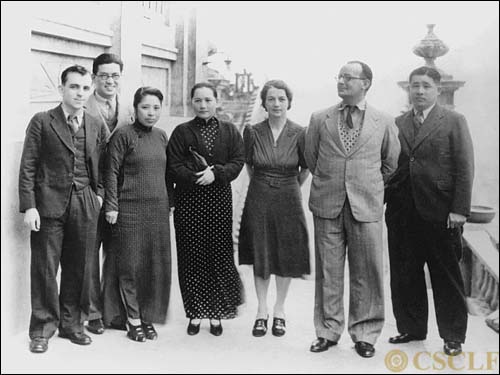

IT was the midsummer of 1951, and at the personal invitation of Soong Ching
Ling, Israel Epstein and his late wife, Elsie Fairfax-Cholmeley, returned to
China from the USA to help set up China Reconstructs in Beijing. On their
arrival at Beijing Qianmen Railway Station Chen Hansheng, vice chairman of
the editorial board, and Zhang Yan were there to meet them.
http://www.china.org.cn/english/culture/68454.htm
Legendary Life of Chen Hansheng
Chen Hansheng was widely known for his accomplishments in various fields even
before the People's Republic of China was founded in 1949.
Now 106 years old, he was once the youngest professor at Peking
University. He rigorously researched China's economic problems. He could
speak at least five foreign languages and seemed to have friends and connections
around the world. He was also an outstanding journal editor and columnist.
However, very few people knew that, first and foremost, Chen
was a professional underground revolutionary.
Ever since Li Dazhao, one of the founders of the Communist Party of China,
invited Chen to join the Communist International in 1924, Chen's life was in
constant jeopardy for the next 25 years.
Chen's reputation as a learned scholar provided him with the perfect cover for
his underground activities. His acquaintance with both the left and right wings
of the Kuomintang made him priceless for the Communist Party in the intelligence
war.
He worked with such famous agents as Richard Sorge, the
legendary German-Russian intelligence worker, and Hotsumi Ozaki, the
great Japanese patriot who loved his country too much to let it slip into the
inferno of becoming a war criminal.
In the early 1930s, Chen first helped them collect
intelligence in Shanghai for the Chinese Communist Party, then intelligence in
Japan for the Soviet Union.
Before the famous spy group was exposed and both Sorge and Ozaki were
arrested and executed by Japan in 1944, Chen had returned to Shanghai. With
the help of Agnes Smedley and Rewi Alley, Chen successfully escaped Kuomintang
searches and sailed to the Soviet Union, according to researcher Jiang
Feng.
This was only one of the three times that he narrowly escaped being arrested by
fleeing abroad.
While he was carrying out his undercover work, Chen also impressed the Chinese
public with his energetic academic activities.
Born in 1897 into a family of traditional intellectuals in Wuxi, east China's
Jiangsu Province, Chen was sent to study abroad by his mother when he was 18 in
the hope that his precocious intellect could be developed more fully.
He underwent a very systematic education in Western economics and history. He
got a Bachelor of Arts at California's Pomona University and a Master of Arts at
Chicago University, both in the United States. Then he got a doctorate at Berlin
University in Germany.
At the age of 27, when he had finished his studies and returned to China, he
became the then youngest professor in Peking University and was nicknamed the
"kid professor." But he was impatient to make his academic work be of
immediate use for his country.
Researcher
In 1927, after Li Dazhao was arrested (being killed shortly after), Chen fled
to the Soviet Union, working in a research institute on rural problems.
He was amazed to find that his Russian colleagues were satisfied with quoting
the doctrines of great thinkers but rarely undertook any down-to-earth social
investigations.
Chen deemed himself a doer and he was determined to carry out his own research
work when he returned to China.
Back in China two years later, Chen launched a series of large-scale and
well-organized surveys on the rural economy as the country had never seen
before. The campaign lasted from 1929 to 1934, covering some of the most
typically developed rural areas in North, Southeast and South China.
At that time, all kinds of opinions and theories on the peasant issue circulated
in China. A lot of blatant lies and irresponsible assertions came from different
directions, with a variety of ulterior motives. With undeniable facts and
figures, published in the magazine Rural China and in his book Agrarian Problems
of Southernmost China, Chen illustrated the extremely underprivileged and
poverty-stricken living conditions of Chinese peasants.
His conclusion was radically revolutionary for the time: "Carrying out a
land revolution, abolishing the feudal land system and giving land to the
peasants is the only solution to China's rural problem."
Walter Chee Kwon Chun, honorary trustee of the Soong Ching Ling foundations in
Beijing and Shanghai, said of Chen: "His book Agrarian Problems of
Southernmost China and articles helped me understand China's problems."
Chun returned to China in the early 1930s to work as an English-language
secretary for Sun Fo, Dr Sun Yat-sen's son and the top legislator of the
Kuomintang. Chun was Sun Fo's brother-in-law.
Chen Hansheng's work greatly helped the land revolution being carried out in
areas under the leadership of the young Communist Party.
Later, Chen established the Chinese Agricultural Economy Institute in a bid to
strengthen academic research into rural issues.
Out of the land campaign and the institute emerged a group of young economic
pioneers, many of whom later became the backbone of economic reconstruction in
the People's Republic of China.
During the "cultural revolution" (1966-76), the Gang of Four claimed
that "there was a black economic front in the 1930s." The term
"black" in those days largely meant "capitalistic."
In one sense, they had a point: The scholars did once fight together on the same
front.
Before 1949, Chen belonged to that group of people who were more famous abroad
than in their own countries. He also spent some time in Hong Kong.
Advocator
Chen spent most of the first half of his life overseas. He lived and worked
abroad during separate periods, once in Japan, once in India, twice in Europe,
and twice in the United States in addition to times spent in the Soviet Union.
Abroad, he regarded himself as an advocator for the cause of the Chinese
revolution. He became a well-known public figure in international society. His
years in the United States and Hong Kong were the most fruitful period of his
overseas activity.
In 1936, the Chinese Communist Party sent Chen to the United States to work
for Pacific Affairs, a quarterly magazine published by the New York-based
Institute of Pacific Relations.
Like most other periodicals about Asia-Pacific affairs published in the United
States at that time, Pacific Affairs used to keep a safe distance from
substantial and sensitive social issues. Chen and his colleagues turned the
magazine into a powerful medium to probe the essential social problems in the
Asia-Pacific area and disseminate progressive thought, according to Li Xinyu, an
editor of a collection of Chen's theses published between 1919 and 1949.
Meanwhile, Chen actively moved in diplomatic circles in New York and
Washington. At that time, the Kuomintang-appointed Chinese official
ambassador Hu Shi was spreading biased or false conceptions about China in
Western society. These views were sometimes thrown back in his face by Chen.
Several years before in Shanghai, Chen had already become one of Agnes
Smedley's best friends. He later also became acquainted with Rewi Alley, Edgar
Snow and Anna Louise Strong. He provided invaluable information about China to
these Western writers and journalists, through whose reports the Chinese
Communist Party's courage and hard work became known to the outside world,
according to Israel Epstein, a veteran war journalist and former editor-in-chief
of China Today magazine (formerly China Reconstruct magazine).
"I would not be in China if it was not for Chen's work," Epstein
added.
During his years in the United States, Chen got in touch with many
liberal-minded intellectuals and considerably helped to shape their views on Far
Eastern affairs.
One of those most influenced by Chen was Owen Lattimore, who had co-edited
Pacific Affairs with Chen and who was an important adviser to President Franklin
D. Roosevelt.
In May 1939, Chen moved to Hong Kong to help Soong Ching Ling, Rewi Alley and
Edgar Snow set up the International Committee for the Promotion of Chinese
Industrial Cooperatives.
During the War of Resistance against Japan (1937-45), the committee was a
crucial channel for international donations entering China. As the
committee's executive secretary and Soong's chief liaison assistant for
contacting overseas powers, Chen became an indispensable link in
communication between Chinese progressives and overseas sympathizers.
According to an investigation by Stephen MacKinnon, who co-wrote a biography of
Smedley and has researched Chen's life, Laughlin Currie -- Roosevelt's envoy
to China -- would engage in long talks with Chen every time Currie was passing
through Hong Kong.
Through Currie's reports, MacKinnon speculated, Chen must have played a role
in changing the Roosevelt government's attitude towards Chiang Kai-shek.
Chen's influence in Western society reached its peak when, under the secret
instructions of Zhou Enlai and Liao Chengzhi, he returned to New York after
World War II.
He taught as a professor at Washington State University, Johns Hopkins
University, and the University of Pennsylvania. He also lectured at some of the
other most important US universities, such as Harvard University, Columbia
University, Chicago University, and the University of California, Berkeley.
A central topic of his speeches was the Chinese land revolution, which he
vigorously defended. Through his Western educational background and the
disarming impression of an enlightened, liberal intellectual that he conveyed,
he always managed to win over his audiences.
As his friend Xue Baoding said: "He certainly is one of the best
spokespersons that the Chinese Communist Party ever sent to the West."
Editor
Although he gave such an impressive display on the international diplomatic
stage, the first thing that Chen did when he returned to China after the
People's Republic was founded was to decline Premier Zhou Enlai's proposal that
Chen become vice-minister of foreign affairs.
Chen's scholarly instinct had the upper hand. "I'd rather do some research
work," he was quoted as saying.
He worked quietly and industriously as a senior research consultant for many
institutes, hoping he could make up for the time he had dedicated to practical
activities for the Chinese revolution.
In 1952, Soong Ching Ling recommended that Chen oversee the editorial work of
the newly established bimonthly English-language periodical China Reconstructs
(now the monthly China Today). He readily accepted.
Under his charge, the magazine became a window through which the new China could
show itself to the outside world.
Israel Epstein said: "Through him, China Reconstructs magazine was
founded, and my wife and I joined the work at the magazine."
With the erudition of an economist and historian, as well as a beautiful writing
style, Chen wrote some of the best reports and essays of that time to introduce
a changed China to the West.
During the "cultural revolution," Chen again engaged himself in
semi-underground undertakings that were as daring and adventurous as those of
several decades previously.
In the worst time of political chaos, already a victim of the mass political
persecution, he taught English in his own small, humble house to any young
person who had the desire to learn.
Among his students were many young people from badly treated families, including
the son and daughter of Liu Shaoqi, the top figure on the blacklist at that
time.
Seventy years ago, Chen revealed his dream in Oriental Magazine: "If a
dream is a wish, my wish is to help the progress of human civilization."
He certainly has tried his best to realize that dream.
(China Daily June 30, 2003)
The
Cold War in Asia
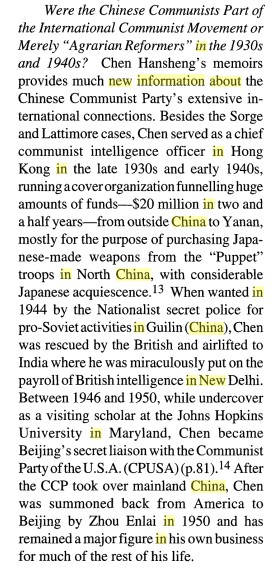
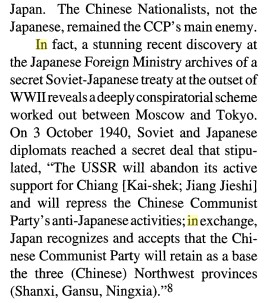
The history of the OSS in China could NOT be written:
OSS
in China — New information about an old role
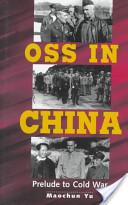
My
China eye: memoirs of a Jew and a journalist
By Israel Epstein
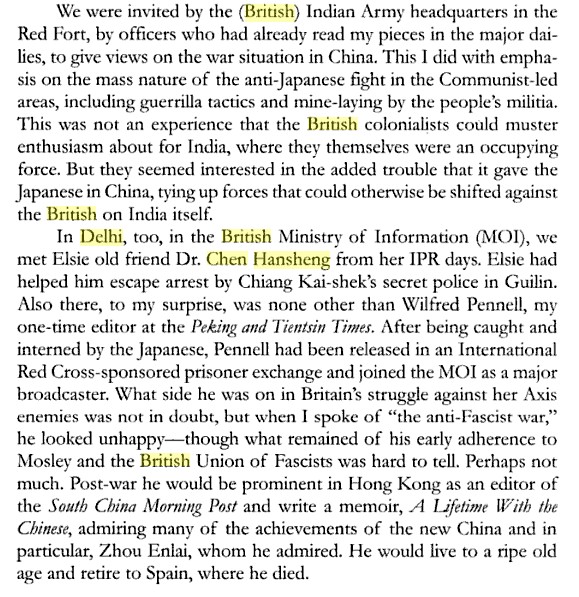
http://legacy.wilsoncenter.org/va2/docs/Vassiliev_Notebooks_Concordance.pdf
Vassiliev Notebooks Concordance
Cover Names, Real Names, Abbreviations, Acronyms, Organizational Titles,
Tradecraft Terminology
Compiled by John Earl Haynes, 20081
...
Chen, Hansheng: Covert agent of the Communist Party of China from 1920s
to the establishment of the People’s Republic of China in 1949. Chen operated
in the United States in the 1930s.98 Also known as Hanshen Chen and Henshen
Chen.
http://jmw.typepad.com/files/strategicinfluenceclass_copy.pdf
...
STRATEGIC INFLUENCE PUBLIC DIPLOMACY, COUNTERPROPAGANDA, AND POLITICAL
WARFARE
THE INSTITUTE OF WORLD POLITICS PRESS Washington 2008
...
Counterpropaganda: We Can’t Win Without It
...
Again we find internal saboteurs who deliberately twisted the American
propaganda message against a wartime enemy. With the
defeat of Germany, Russia was expected to come into the war against Japan. A
prolonged war would benefit the Soviet Union as it would give Stalin time to get
into the war. From the Soviet viewpoint, prolonging the war, despite the loss of
American and Japanese lives, would serve Moscow’s purpose.
On March 14, 1952, Owen Lattimore testified before the same Senate committee as
Dooman. During the war Lattimore served as the
director of Pacific Operations for the Office of War Information. He was asked
by the Committee, if there had not been a directive that there
would be no attacks on the Japanese Emperor in American propaganda. He agreed
that there was such a ruling but claimed that he had never
violated it. What he had done, he said, was broadcast a quotation from an
article in a Chinese newspaper attacking the Japanese Emperor.
Since this was not an attack by the United States, but only quoting the Chinese
writer, Lattimore felt that it did not violate the directive.46
Lattimore used the same excuse that Barnes, the GRU agent at the Office of War
Information in New York, had used in the “moronic little
king” incident. The subcommittee consisting of two Democrats and one
Republican concluded unanimously that “Owen Lattimore was, from
some time beginning in the 1930’s, a conscious articulate instrument of the
Soviet conspiracy.”47
Chen Hansheng, a Communist International intelligence agent who had been part
of the Richard Sorge spy ring in Shanghai and Tokyo, was sent from Moscow to New
York in 1936 to assist Lattimore in editing the journal Pacific Affairs. Chen
remained in that job until 1939. The subcommittee was aware that Chen was a
communist but until Chen’s book My Life During Four Eras was published in
1988 in Beijing, many of the details of his work and connection with Lattimore
were unknown.

OSS
in China: prelude to Cold War
By Maochun Yu - What is
interesting is this is a great book that is/was published by Yale Press and is
OUT OF PRINT!!!!
Yu is a Naval War College
Historian OK? You can get it used for about $20 - New? Talk about $185 !
With a little
investigation you can find that the 1st AVG group "Flying Tigers" did
not fly any missions until after Dec 8, 1941.
So who was fighting the Japanese in the air? What does this have to do with
Communists and Mao? The Soviet Union was actively supplying Mao and alot would
be done via air support.
http://en.wikipedia.org/wiki/Soviet_Volunteer_Group
The Soviet Volunteer Group was the ostensibly
volunteer Soviet Air Forces to support the Republic of China during the Second
Sino-Japanese War between 1937 and 1941. After the Marco Polo Bridge
Incident, the Sino-Soviet Non-Aggression Pact was signed and large Soviet
support was given to China by the Soviet Union, including the volunteer
squadrons. China paid for the support in the form of raw materials.
In October 1937, some 450 Soviet pilots and technicians assembled at Alma
Ata in the USSR to bring 155 fighter aircraft, 62 bombers, and 8 trainers
into China. By 1941, the Soviet-built aircraft sent to China would amount to
885, including two-engine and four-engine bombers, though the latter were never
used in combat.[1] Of the aircraft supplied, half were turned over to the
Chinese Air Force and half were flown and maintained by personnel from the USSR.
The Soviet air units were stationed at bases near the cities of Nanjing,
Hankou, and Chongqing, and at Lanzhou in China's northwest at the terminus of
the Russian supply route. The Russian commander is identified in most
histories as a General Asanov.[2] By the time of their withdrawal, the group's
casualties amounted to 227 pilots killed in action.[3]
The Soviet squadrons were withdrawn after the Non-aggression pact between the
Soviet Union and Japan in 1941. As a result, the Chinese turned to the United
States, which authorized the creation of the American Volunteer Group Flying
Tigers.[4]
There are several monuments to the Soviet aviators in China, including one in
Jiefang Gongyuan (Liberation Park) in Wuhan, which was built in 1956.
http://en.wikipedia.org/wiki/Aerial_engagements_of_the_Second_Sino-Japanese_War
...
Volunteer Bombardment Squadron
In the period from the end of 1937 to 1940, the Soviet Union was the primary
supplier of military aircraft to the Chinese Air Force, supplying 563 fighter
planes and 322 bombers. Some of the planes were flown by Soviet volunteer
military pilots sent to China. Aircraft provided by the Soviet Union
included Tupolev SB twin-engine and Tupolev TB-3 4-engine bombers, and their
latest Polikarpov I-15 biplane fighters and Polikarpov I-16 monoplane
fighters.[9][10]
According to Soviet records,[11] by the beginning of September 1938, China
received from the Soviet Union 361 aircraft, of which 238 were I-15 and I-16
fighter planes. Together with the American and other foreign planes, the
Chinese Air Force had a total of 602 aircraft. By the beginning of 1939,
according to Chinese information, the Chinese Air Force had less than 100
aircraft of various types. A new group of 30 Soviet I-15s arrived in Lanzhou on
18 July, while 30 Soviet I-16s arrived on 3 August 1939.[11]
...
After withdrawing its volunteer pilots from China in the summer of 1940, the
Soviet Union continued to supply aircraft to China until June 1941
http://www.j-aircraft.com/research/George_Mellinger/china_skys_part_4.htm
Soviet Fighters in the Sky of China IV (1937-1940)
by Anatolii Demin
...
S. P. Suprun’s group ( up to 50 fighters) soon became one of the main
forces containing the Japanese. Air victories appeared on the scores
of Suprun, Kokkinaki, Mikhailov, Kondratyuk, Kornienko, and others. In
December 1939 Suprun’s group was transferred to the south where the battle for
Yunnan Province had become much more intense, traveling along what would be
named the “Burma road”. Our pilot protected the airfields and
communications lines from air attacks. Already in June 1939 the 17th
squadron had been transferred to Kunming, the provincial capital to receive 12
Dewoitine D.510 fighters, but their strength clearly was insufficient. ...
http://persona.rin.ru/eng/view/f/0/30946/suprun-stepan-pavlovich
SUPRUN Stepan Pavlovich ( Hero of the Soviet Union)
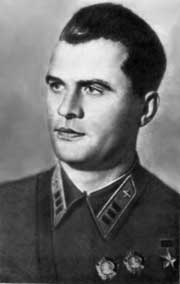
...
In May 1939 fighting in China. He commanded a group of fighters, which covered
the important objects of the Japanese air raids. In aerial combat shot down 6
enemy aircraft. May 20, 1940 for their courage and heroism in battle, Major
Suprun S.P. Hero of the Soviet Union.
After returning from China in January 1940, again served in the Air Force
Institute. Test new fighter I-21, I-26 (Yak-1), MIG-1, LaGG-1. Total mastered
the 140 types of aircraft. In March 1940 he was a member of the Soviet
commission under the chairmanship of JF Tevosyan, visiting aircraft industries
in Germany. Met with E. Heinkel and Messerschmitt VA.
...
http://www.airpages.ru/eng/ru/he100_2.shtml
I. F. Tevosyan, a member of the Bolshevik Party Central Committee, led a
large commission that went to Germany in October 1939 to study the achievements
of the German aircraft industry and to select examples for purchase.
Managers from different industries, designers, military specialists, and
employees of scientific research institutes comprised the commission.
...
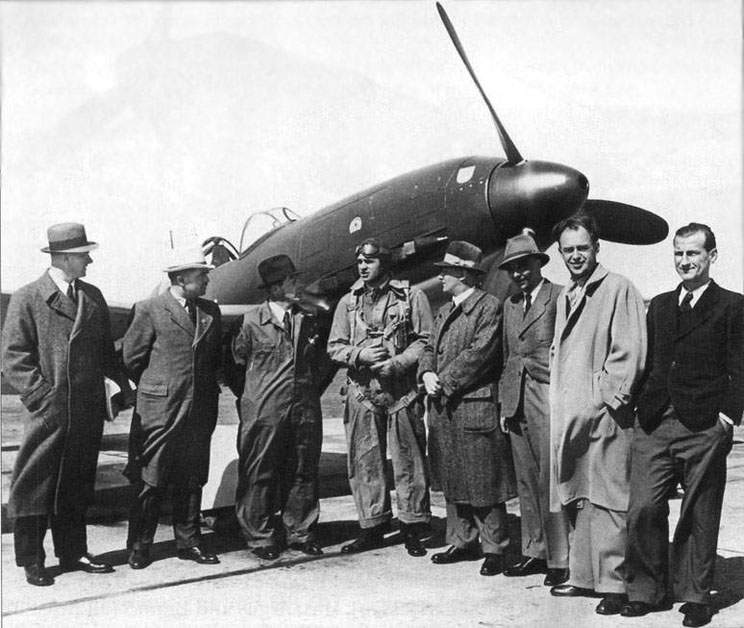
Next to an He 100, Germany, 1939. In the center - test pilot S. P. Suprun
http://www.willysthomas.net/HankowInfo.htm
AN AMERICAN IN CHINA: 1936-39 A Memoir
HANKOW - HANKOU - WUHAN
Hankow 1938
After the fall of Nanking, Hankow
became the wartime capital of a new China in which the Communists and the
Kuomintang formed a united front. For 10 months hopes ran high and
idealism reigned.
"While it lasted, Hankow became a world center for the democratic
struggle against fascism, and became almost a tourist stopoff for writers and
demi-diplomats who swooped through to visit the front." --Charles
Hayford, historian
...
http://www.airforce-magazine.com/MagazineArchive/Documents/1999/June%201999/0699before.pdf
Throughout the 1930s, American airmen fought the Imperial Japanese Army in
China. - Before the Flying Tigers
By Robert E. van Patten
Fully 10 years before the advent of Claire Chennault’s Flying Tigers,
American pilots and airplanes were involved in an air war over China. What
was to become the Sino–Japanese War in 1937 actually began with a Japanese
incursion in Manchuria in 1931. This conflict festered for the next six
years.
In that period, pilots from the US, Britain, France, Italy, Russia, and probably
Germany took part in battles in the skies over China. With the exception of the
Italian and Russian contingents, which were officially sanctioned by their
governments, the pilots who trained the Chinese and who fought for them were
adventurers, soldiers of fortune, and out-of-work military professionals. Most
of them were Americans. Many historians consider this hit-or-miss, bloody little
air war to be a backwater of events. Yet the battles fought by these early
warriors laid the groundwork for a massive air war over China, Southeast Asia,
the Mariana Islands, and the Japanese homeland.
...
The First Casualty
The first American aviator to die in combat against the Japanese, Robert
Short, was killed Feb. 22, 1932. Short, a native of Tacoma, Wash., had been
hired by the L.E. Gale Co. to fly and sell Boeing fighters in China.
...
In July 1932, the Chinese flying school saw the arrival of its first
American military instructor pilots. They were led by John H. Jouett, who
had been separated from the Army Air Corps as a consequence of budget cutbacks.
China accorded Jouett the rank of colonel. He arrived in the company of other
involuntarily retired pilots, all of whom retained their reserve ranks. Each
recruit was cautioned to keep his contract with the CAF secret, part of a
vain
attempt to keep Japan from figuring out what was going on.
...
Jouett immediately set about the task of turning the CAF flying school at
Shien Chiao into an Asian Randolph Field, establishing an immediate program
to upgrade the physical plant of the base.
...
Jouett annually cranked out graduating classes of 100 Chinese cadets until
the contract expired in 1935 and he returned to America.
...
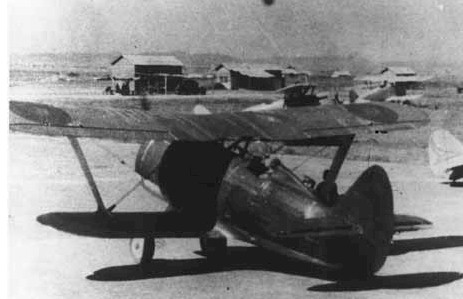
In 1938, both an American group of volunteers and a Soviet contingent
were stationed in Hankow. Soviet aircraft in China included Tupolev bombers
and Polikarpov fighters. The Japanese Army had captured this one in Manchuria
...
In early 1937, however, an American friend, then serving in China,
relayed to Chennault an offer from Madame Chiang to join the
anti–Japanese effort. Chennault was more than ready for an opportunity such as
this and arrived in China at the end of May 1937. He stayed for eight years. He
first served as aviation advisor (and de-facto air chief of staff) to the
Kuomintang in the period 1937–41. During that time, he organized the 14th
Volunteer Bombardment Squadron
...
Organized under Chennault’s leadership in the autumn of 1937, the 14th VBS
(which some sources refer to as the International Air Squadron) was the
first predominantly American volunteer combat group in China. Chennault’s
pilot roster never numbered more than a dozen, even counting the odd French
adventurer who occasionally would show up
...
The 14th VBS was stationed at Hankow in 1938 at the same time as a large
Soviet contingent. The Soviet commitment in China consisted of twin-engined
Tupolev SB-2 bombers and Polikarpov I-15 biplane and I-16 monoplane fighters.
Following the demise of the 14th VBS, this Soviet force, amounting to over
120 aircraft, played a large role in air combat over China until they were
withdrawn to deal with Japanese incursions along the Mongolian border and the
outbreak of hostilities in Europe.
...
Among the American Pilots in China, 1932–40
James W.M. Allison
Art Chen ( Major
'Arthur' 'Art' Chin Shui-Tin )
Claire L. Chennault
Jimmy Doolittle
E.D. Dorsey
Cecil Folmar
Franklyn G. Gay
Elwyn H. Gibbon
Harvey Greenlaw
L. Roy Holbrook
John H. Jouett
W.C. “Foxy” Kent
M.R. Knight
William C. MacDonald
Christopher Mathewson
John May
George E.A. Reinburg
Harry T. Rowland
Ronald L. Sansbury
John Schweitzer
Vincent Schmidt
Ellis D. Shannon
Robert Short
Sterling Tatum
Thomas Taylor
John “Luke” Williamson
George H. Weigle
Lyman Woelpel
http://www.rtdouse.com/Robert_Short-American_Hero.html
..
Robert Short was given the assignment of delivering an airplane to China.
It was an experimental fighter plane, built by Boeing and given to the
Chinese. On his flight to Nanjing on February 19, 1932 he ran
into trouble when three Japanese fighter planes engaged him in a fight. He
was able to shoot down one of them, killing a Lieutenant Kidokoro. At this
point the other two broke off the engagement and Short continued on to his
destination.
...
Robert Short’s funeral was delayed a month so his mother and brother could
attend what became in China the largest funeral ever given a white man.
Over 500,000 people filled the streets of Shanghai.
The prominent Chinese banker, T. V. Soong, speaking for the Chinese
Government, said, “Robert Short, a friend from a distant land, flew out
of the sky and gave his life . . . to the Chinese people this act of
courage and sacrifice was electrifying.” Posthumously, Hero Short
was created a Chinese Colonel.
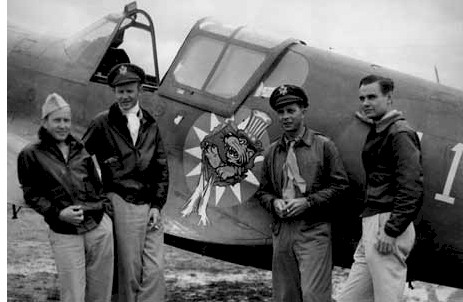
The 14th VBS was the first predominantly American volunteer combat group in
China. They paved the way for the American Volunteer Group—the Flying
Tigers— like (l–r) John Alison, David Hill, Albert Baumler, and Mack
Mitchell.
Interesting a CAMCO "plant" was stationed at Shien Chiao :
http://earlyaviators.com/eleight1.htm
Bruce Gardner Leighton - Early Navy Aviator - 1892 - 1965
...
Airplanes for China during the "China Incident"
From 1937-1939, Leighton was in China as Vice president of Intercontinent
Corporation and its subsidiary, the Central Aircraft Manufacturing Co. (CAMCO),
a joint venture with the Chinese Government in which Curtiss-Wright and Douglas
Aircraft had an interest. William D. Pawley, the leading commercial agent for US
aircraft manufacturers, was the President of both Intercontinent and CAMCO. As
Pawley was often away on business in Europe and the US, Leighton ran the
operations in China.
The core of Intercontinent's activity was the sale, assembly and maintenance of
aircraft used by the Chinese Air Force (CAF). Early Bird George Arnold ran the
first CAMCO plant at Hangchow from its inception in 1934 until August 1937 when
the Japanese bombed it out. Soon thereafter Arnold returned to the United States
to take up a post at Curtiss-Wright in Buffalo. ( see note from his son below)
From 1937 to 1939, Leighton oversaw the construction of other CAMCO plants in
the interior of China. The Hangchow plant was relocated to Hankow in the autumn
of 1937. After the fall of Hankow to the Japanese in late October 1938, a
new factory site was acquired in December 1938 in Yunnan province close to the
border with Burma and its important port and rail facilities. There were
also three other repair units at Chengtu, Hengyang and Kunming. The Loiwing
factory complex on the Salween River along the Burmese border began production
on 30 Curtiss-Wright Hawk III pursuit planes in July 1939. It carried on with
assembly of other CW pursuits and interceptors, Vultees and maintenance
operations for the CAF and the Flying Tigers until Japanese bombers destroyed it
in April 1942.
(George B. Arnold), was in charge of Central Aircraft's (CAMCO) plant in Shien
Chiao (near Hangchow) from 1934 to 1937 when it was bombed out.
- - - -
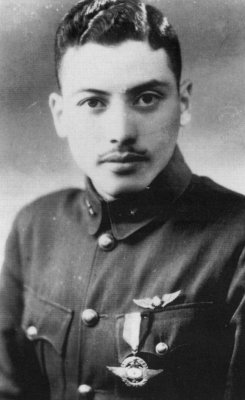 Arthur Chin
- Major Arthur Chin (Chinese:
陳瑞鈿; pinyin:
Chén Ruìtián; Cantonese:
Chan Sui-Tin; October 23, 1913 - September 3, 1997) was an American
pilot and a Second
Sino-Japanese War fighter ace.
Arthur Chin
- Major Arthur Chin (Chinese:
陳瑞鈿; pinyin:
Chén Ruìtián; Cantonese:
Chan Sui-Tin; October 23, 1913 - September 3, 1997) was an American
pilot and a Second
Sino-Japanese War fighter ace.
Chin was born in Portland,
Oregon to a Chinese father of Cantonese
origin and a mother of Peruvian
background. Motivated by the Japanese
invasion of China, Chin enrolled in flight school in 1932. Along with 15
other Chinese
Americans, he left for China
and joined the Guangdong
Provincial Air Force as the first and original group of American volunteer
combat aviators, and ultimately integrated into the central
government's air force under the KMT.
After completion of additional aerial-gunnery training in Munich
Germany, he
returned to China for combat duty in which he was credited with destroying nine
enemy aircraft between 1937-1939. In 1939, while flying a Gloster
Gladiator, the fighter in which he scored 6.5 of his 8.5 aerial victories,
he was hit by enemy fire and forced to bail out of his burning aircraft, and
although he parachuted to safety, he suffered serious burn injuries.
Nevertheless, after several years of surgery and recovery, and an escape from
the Japanese
occupation of Hong Kong,[1]
he returned to China in 1944 to fly supplies over the Himalayas,
a route known as the
"Hump".
Chin is recognized as
America's first ace in World
War II. A half-century after the war ended, the U.S. government recognized
Chin as an American veteran by awarding him the Distinguished
Flying Cross. About a month after Chin died, on October 4, 1997, he was
inducted into the Hall of Fame of the American
Airpower Heritage Museum in Midland,
Texas as the
first American ace of World War II.
After his aviation
career, Chin became a postal worker in his hometown of Portland. On January 29,
2008, Congressman Representative
David Wu
(D-Oregon)
introduced House Resolution 5220 to name a United
States Post Office in Aloha,
Oregon after Major Arthur Chin as the "Major Arthur Chin Post Office
Building". It was unanimously approved by the House Committee on Oversight
and Government Reform. President Bush
signed it into law on May 7, 2008
CNAC Captain Arthur S.T. Chin
Art Chen ( Major
'Arthur' 'Art' Chin Shui-Tin )

Chin Shui-Tin (to the right) in front of a Polikarpov I-15bis. (A
Russian Biplane)
Art Chin was born on 23 October 1913 in Portland, Oregon. His father was
from Toyshan county, Guangdong (Kwangtung) province, China and his mother was
from Peru.
He was one of a group of 15 Americans of Chinese descent who were able to
start flying in the US in the early 1930s, at Al Greenwood's flying school in
Portland. After finishing primary training in the US, they offered themselves to
the Cantonese Air Force, and on 1 December 1932 he was accepted as a Warrant
Probationary Pilot. He was promoted to Second Lieutenant on 23 February
1933.
He completed his flight training in Germany in 1936 receiving air-to-air
gunnery training from the Luftwaffe at Laager Lechtfeld. On 1 September
1936, he was promoted to First Lieutenant, as a flight leader in the 6th
Squadron.
He served as a flight instructor from February to June 1937, and joined the 28th
Pursuit Squadron, 5th Pursuit Group on 10 June 1937, as Vice Commander.
http://en.wikipedia.org/wiki/Polikarpov_I-15
The Polikarpov I-15 (Russian: И-15) was a Soviet biplane fighter
aircraft of the 1930s. Nicknamed Chaika (Russian: И-15
Чайка, "Seagull") because of its gulled
upper wings,[2][3] it was operated in large numbers by the Soviet Air Force,
and together with the Polikarpov I-16 monoplane, was one of the standard
fighters of the Spanish Republicans during the Spanish Civil War, where it was
called Chato (snub-nose) in the Republican Air Force, or "Curtiss"
(because its resemblance to Curtiss F9C Sparrowhawk) in the Nationalist Air
Force
...
China
In August 1937, the Chinese Kuomintang Government signed a non-aggression
pact with the USSR. And, in autumn of the same year, the Soviet Union commenced
to ship I-15s as a part of a programme of military aid to the Chinese Air Force
(CAF) in its defensive war against Japan. More than 250 Soviet pilots
volunteered to fly the 255 I-15s supplied to China in autumn 1937. By 1939, the
total number of Polikarpov biplanes delivered to CAF reached 347
I-15/I-15bis.[7] The I-15bis saw a great amount of action in Manchuria and in
the various border clashes between the Russians and the Japanese.
In 1937, I-15s in the hands of the Chinese Nationalist Air Force fought
against invading Japanese, where the tough biplane began to meet its match in
some of the newer, faster Japanese monoplanes. In 1939 Polikarpov fighters
were extensively used during the Battle of Khalkhin Gol fought around the
Khalkhin Gol River, in Soviet-Mongolian province of Doronod. This short war (11
May-15 September 1939) involved more than 600 planes. When hostilities
commenced, the only I-15bis in the area, were 14 aircraft of 70th IAP. Their
number increased in the following weeks: on 23 May, 35 I-15bis a from 22nd IAP
arrived from the Trans-Baikal region. However the Polikarpov pilots had been
hastily trained and they suffered heavy losses against the more experienced
Japanese. During this conflict, Soviet Union and Japan lost more than 200
aircraft each
| - - - - -
http://www.willysthomas.net/ChungkingInfo.htm
Peiping Lily Lee Held for Observation as Spy
This was a headline in The New York Times on Nov. 21, 1936. The article
read:
"Peiping Lily Lee, glamorous wartime party girl who is suspected of being a
wartime Mata Hari, is being detained by Chinese authorities today for
"observation."
http://www.willysthomas.net/PeipingLilyLee.htm
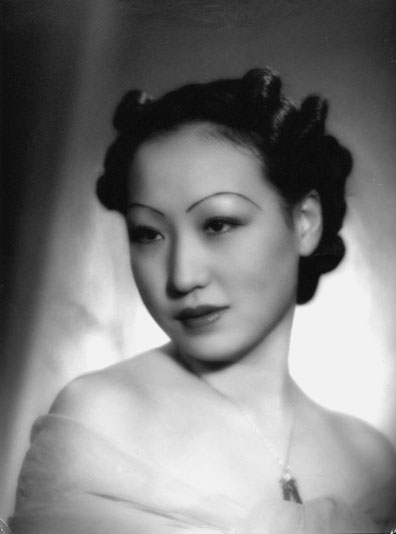
Suspected of being a spy for the Japanese, she was arrested in 1938 in Chungking,
but through the help of Thomas and others who vouched for her innocence, was
released after several months in prison — just moments before she was to be
shot.
Considering the history of China led to the
Korean Conflict and the Vietnam Conflict, it is interesting how the finances
worked out.
Reference Links:
RELATIONS
BETWEEN FOREIGN FORCES AND THE POPULATION OF CHINA
In accordance with the Silver Purchase Act passed by the US Congress in June
1934, the US Treasury began massive purchases of silver worldwide. Two
countries were especially concerned: Mexico, at that time an important silver
producer, and China whose monetary system was based on silver in spite of the
fact that the country was not a substantial producer. As a result of the
American purchases the price of silver tripled which was indeed one of the
objectives of the Silver Act. While Mexico profited, this price increase
was detrimental to China in several respects: it increased the foreign debt
based on silver, it drained silver from the whole country toward the
financial center of Shanghai thus bringing about a country-wide deflation
and at the time a speculation frenzy lead by major banks controlled by the
Nationalists.
Due to the silver shortage, the Nationlist government decided in November 1935
to nationalize silver and to issue a fiat paper money. This move emulated a
similar action for gold made by the Roosevelt administration in March 1933. The
issuance of such an unbacked currency eventually led to the hyper inflation of
the late 1940s.
...
Jan 31, 1940: Generalissimo Chiang Kai-shek is hastening his measures to
consolidate Chinese control of Tibet, according to advices from Chungking today,
and expects during this year to make that formerly semi-independent State an
integral part of Nationalist China. A 6-year old child has been appointed as
Dalai Lama. (NYT p. 
[This article (and a number of similar articles given below, see in particular
the articles about uprisings in 1947 and 1949) shows that the control of the
nationalist government over southern China also came to include Tibet. The
thirteenth Dalai Lama, political pontiff of Tibet, had died in 1933]
...
Mar 26, 1945: The Comptroller of the United States approved the use of no-rate
currency by American naval forces in China. No-rate Chinese National Currency,
or “Funny Money” as some Rice Paddy Navy boys called it, was regular Chinese
currency issued by the central givernment to the DisbursingOfficer, China (DOCHINA),
for expenditure by their agents without determination of a definite rate of
exchange or means of settlement between the two governments. There was no
limit as to the amounts which might be drawn from China by these officers.
It must be added that according to SACO rules most locally manufactured
material, facilities or services were being furnished gratis by the Chinese.
On 7 July 1945, an Army courier dropped 20 wooden cases at the Kunmimg
airport. When one of the cases was opened, it appeared to contain 50 million CN
(Chinese National) dollars in crisp, new banknotes printed by the American Bank
Note Company. Altogether the cases contained one billion CN dollars. At that
time this represented 1000/2900 = 0.34 million US dollar. In September 1945,
this money was carried from Kunming to Shanghai and Tsingtao where it was
distributed to agent officers of American warships which were in the port,
masters of merchant vessels, news correspondents, American banking institutions
and other accredited persons.
On 31 August 1946, the Republic of China signed an agreement with the United
States in which she aquitted America for all advances of Chinese National
currency made to the US Navy, US Army and other Government agencies as one of
the conditions under which she purchased America’s surplus property in the
Western Pacific.
DOCHINA was disestablished on 31 December 1946. During the 3 years it was
operative, DOCHINA received CN$ 16.5 billions 50 (Stratton 1950, p. 195, 200,
207, 210, 219, 356)
[In short, the “Funny Money” was Chinese money put at the disposal of
American forces in China. One may wonder why this currency was printed by
an American company. According to an agreement negotiated in 1914 the American
Bank Note Company would print Chinese notes, bonds and stamps (NYT 1 April
1914, p. 4); this agreement remained in force until the end of the Nationalist
rule in China.]
| - - - - -
The Hoover Institution Library and Archives - Stanford University -
Report 2004: Library and Archives
...
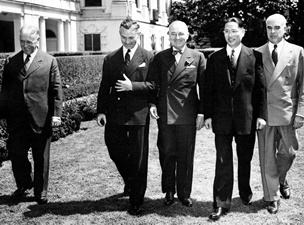
T. V. Soong worked at the highest levels in Washington to marshal support
for the Republic of China: left to right, Henry L. Stimson (U.S. secretary of
war), (Manhattan Project) James V. Forrestal (Murder/suicide) (U.S.
secretary of the navy), President Harry S. Truman, T. V. Soong, and Edward
R. Stettinius (U.S. secretary of state) (US Steel - UN/Yalta) . Photograph:
T. V. Soong papers, Hoover Archives.
Selections of the vast papers of T. V. Soong, finance minister of China and
foreign minister in World War II, have been deposited at Hoover since the 1970s.
Much of the Soong collection was restricted during the lifetime of Madame
Chiang Kai-shek (Soong’s sister) out of respect for her privacy.
The collection was significantly enhanced in 2004, when the family of T. V.
Soong not only opened up the restricted materials in the Hoover Archives but
added substantial documentation from the family files. Those records
document Soong’s close relationship with President Roosevelt, Soong’s
role in marshaling U.S. support for China in World War II, and his family’s
role in gaining U.S. support for Taiwan during the cold war. The papers
reveal the inside story (never before completely understood) of General
Stilwell’s removal from power in 1944. Another revelation is the exact
status of the Soong family finances, long a subject of intense speculation.
| - - - - --
How
China Was Stolen - Silver Purchase Act of 1934
In the spring of 1928, T.V. Soong (Chiang’s Triad-connected brother-in-law)
forced the Shanghai banks to become dependent on high-interest
"guaranteed" government bonds. Skeptical bankers were arrested. By
1932, Chinese banks located in Shanghai were stuck with between 50 per cent and
80 per cent of Nationalist government bonds.
Also in 1928 Soong founded a government "Central Bank" (patterned
on the US Federal Reserve), the "State Bank of the Republic of China."
Soong appointed many of the directors of private banks to a figurehead board of
directors of the Central Bank. Nationalist officials who controlled the issuance
of government bonds often gained seats on the boards of private banks. Just as
in the US, those with inside information on Central Bank manipulations quickly
became a privileged class of kleptocrats.
...
In June 1934 the Silver Purchase Act was passed. This Act instructed the United
States Treasury to purchase silver until the world price of silver rose above
$1.29 per ounce, or until the monetary value of the U.S. silver stock reached
one-third the monetary value of the gold stock. (Note that this huge US
government expenditure occurred at the worst time in the US Great Depression,
when most ordinary Americans were struggling desperately to avoid bankruptcy).
OSS
in Action: The Pacific and the Far East
US
Navy's Secret war in China
RESEARCH BOOKS/MATERIAL – DRUGS

(p. 47) –
White…was to investigate rumors that Detachment 101…organized by Garland
Williams…was providing opium to Burmese guerrillas fighting the Japanese…the
rumors were true…America’s spymasters would never sever the
drug-smuggling connections they established during the war, nor could the
FBN exert any influence over the situation. On the contrary, the FBN assumed a
collateral role in narcotics-related espionage activities…The Luciano Project
and Truth Drug programs are examples, as was the formation of the
Sino-American Cooperative Organization (SACO) by Navy Secretary Frank Knox, OSS
chief William Donovan, and Chiang Kai-shek’s intelligence chief, General Tai
Li. SACO would effectively put an end to any drug control over Nationalist
China. SACO went into action in 1943, when a team of Americans under Treasury
Agent…which included FBN agents…It was an open secret that Tai Li’s agents
escorted opium caravans…and used Red Cross operations as a front for selling
opium to the Japanese…he received the same immunity afforded Detachment
101.
Edward R. Stettinius (U.S. secretary of state) (War Supplier JP Morgan -
UN/Yalta)
http://en.wikipedia.org/wiki/Edward_Stettinius,_Jr.
...
he attended the University of Virginia until 1924, leaving without a
degree; while at Virginia he became a member of the secret Seven Society
...
in 1934 he returned to the private sector when he joined US Steel
where he eventually become a chairman of the board in 1938.
...
In November 1944 Stettinius succeeded Secretary of State Cordell Hull due to
Hull's poor health. In this capacity, he helped arrange the Dumbarton Oaks
conference accompanied the US delegation to the Yalta Conference.
Roosevelt's personal approach to foreign policy prevented Stettinius from making
major contributions at these conferences.
Stettinius, as chairman of the US delegation to the United Nations Conference
on International Organization, was instrumental in the formation of the United
Nations and was present at its official founding on June 26, 1945. Soon
afterward, President Truman required Stettinius to resign as Secretary of State.
He was offered the position of United States Ambassador to the United Nations.
Stettinius resigned from this position in June 1946, after which he became
critical of what he saw as Truman's refusal to use the UN as a tool to resolve
tensions with the Soviet Union. Charles W. Yost, Stettinius' aide, in the State
Department and at the conference, followed him as UN Ambassador twenty-six years
later.
His daddy was a War supplier for JP Morgan in WWI :
http://en.wikipedia.org/wiki/Edward_R._Stettinius
...
At the beginning of World War I, Stettinius went to work for J. P. Morgan and
Company, where he worked as chief buyer of war supplies for the Allies,
overseeing a work force of around 150 people. When the United States entered the
war, he went to work for the War Department, in charge of procurement and
production of supplies for the Army. On April 6, 1918, he became Assistant
Secretary of War.
Return to Mao was a Yale
Man Page 1




 Downey
Downey













 Bo Guagua - Oxford
Bo Guagua - Oxford


 Chinese
political leader Sun Yat-sen and his wife Qingling Soong, 1925 [ research ->
Soong = Sassoon = British Opium trade ]
Chinese
political leader Sun Yat-sen and his wife Qingling Soong, 1925 [ research ->
Soong = Sassoon = British Opium trade ]



 Dai Li and "Mary" Miles Christmas 1942
Dai Li and "Mary" Miles Christmas 1942

 MaoTsetung fleeing Yenan
MaoTsetung fleeing Yenan

 Calling
Shaul Eisenberg October 25, 2010
Calling
Shaul Eisenberg October 25, 2010




 Legend
of the Sassoons ... David Sassoon set up the Sassoon company in
Bombay, India, in 1833.
Legend
of the Sassoons ... David Sassoon set up the Sassoon company in
Bombay, India, in 1833. Sir
Victor Sassoon, a Most Fortunate Expat
Sir
Victor Sassoon, a Most Fortunate Expat






 - One of my heroes is Charles Boxer (1904-2000). I knew him as a
brilliant historian of the Dutch in Japan, the East Indies and Brazil
- One of my heroes is Charles Boxer (1904-2000). I knew him as a
brilliant historian of the Dutch in Japan, the East Indies and Brazil

 Soong Ching
Ling posing with Ding Cong and Chen Yanqiao in April 1939
Soong Ching
Ling posing with Ding Cong and Chen Yanqiao in April 1939 Rewi
Alley and the Beijing Bailie University
Rewi
Alley and the Beijing Bailie University Recipients of this award are entitled to use the post-nominal letters "QSO"
Recipients of this award are entitled to use the post-nominal letters "QSO"















 Arthur Chin
Arthur Chin

